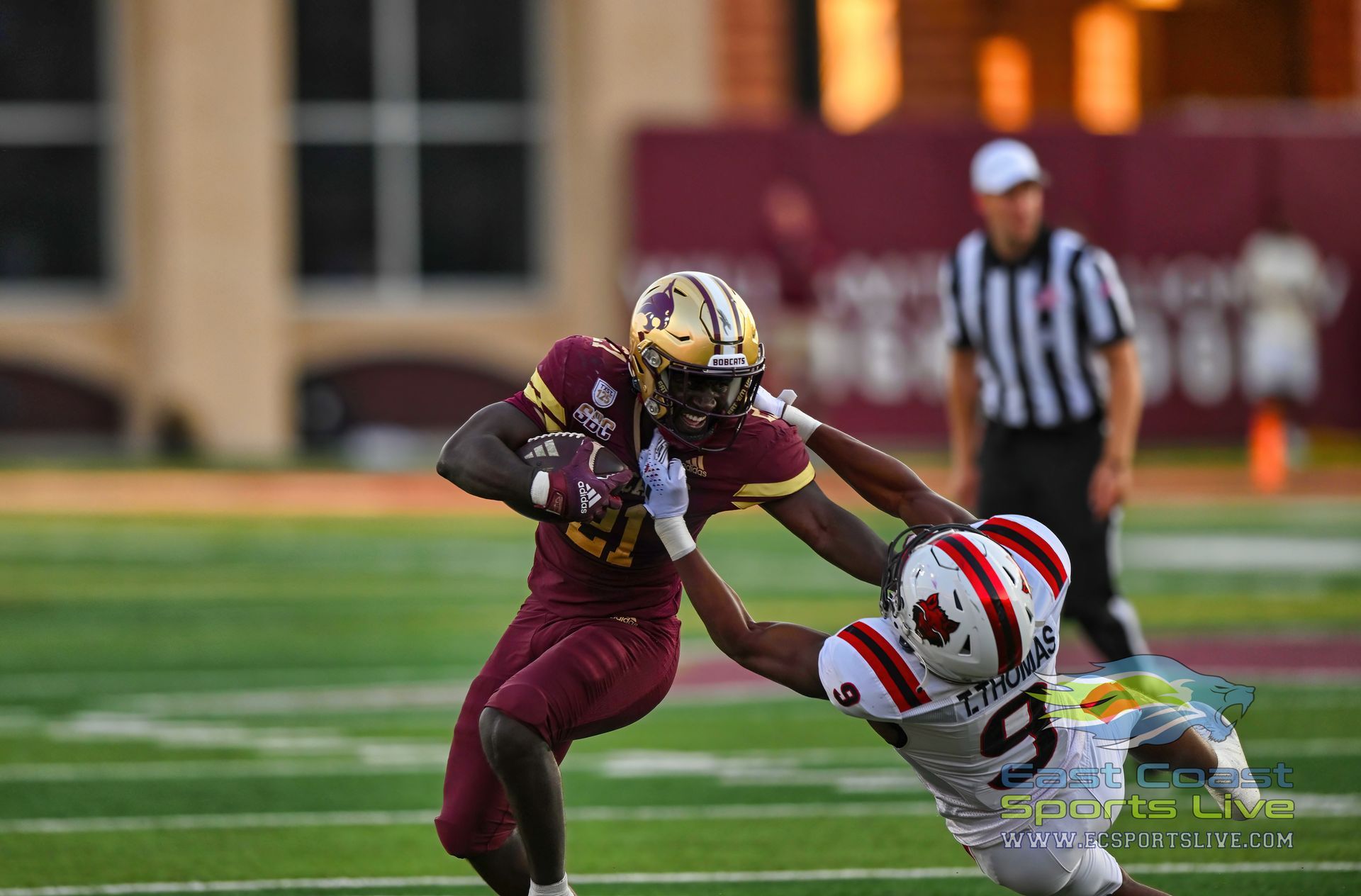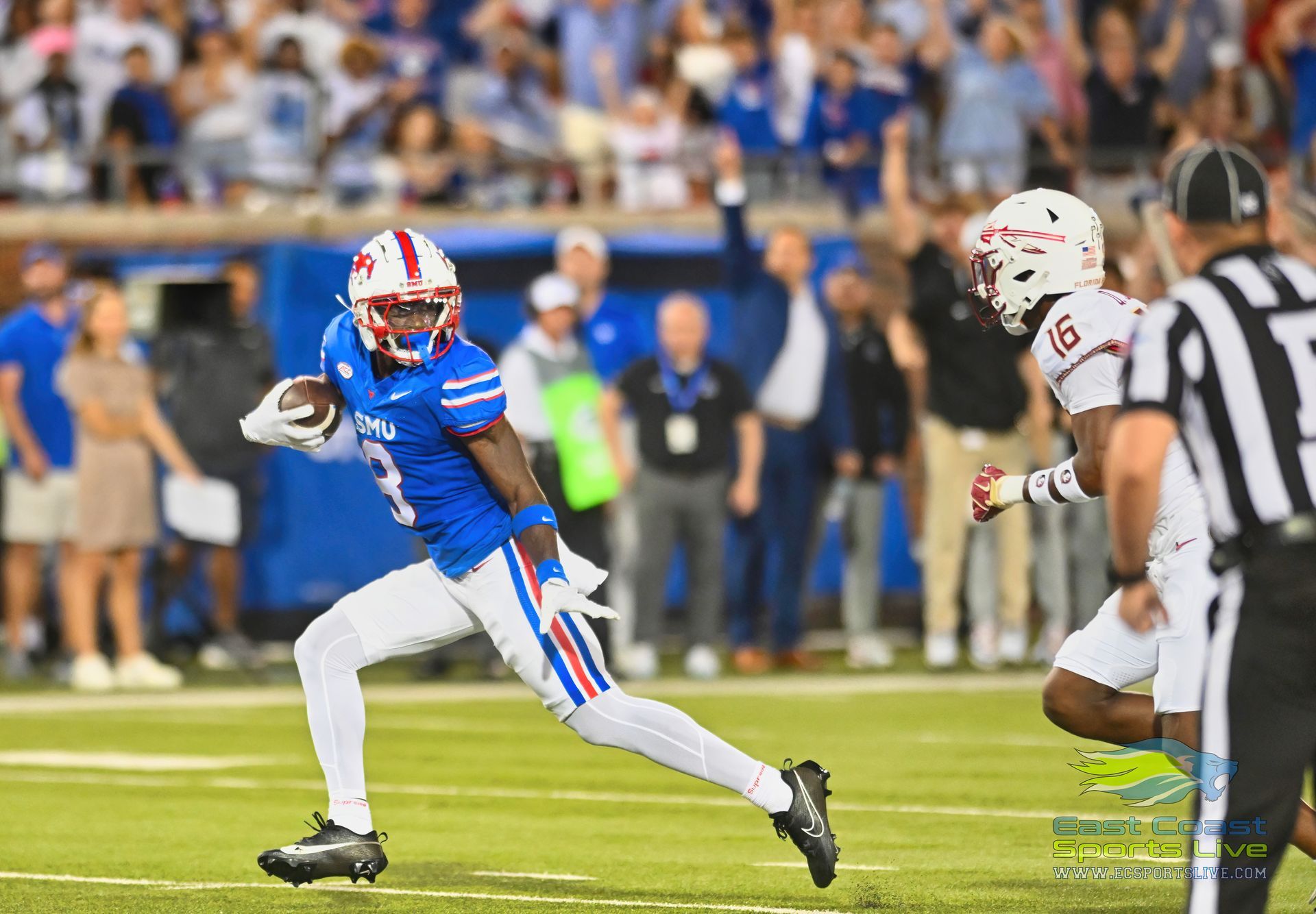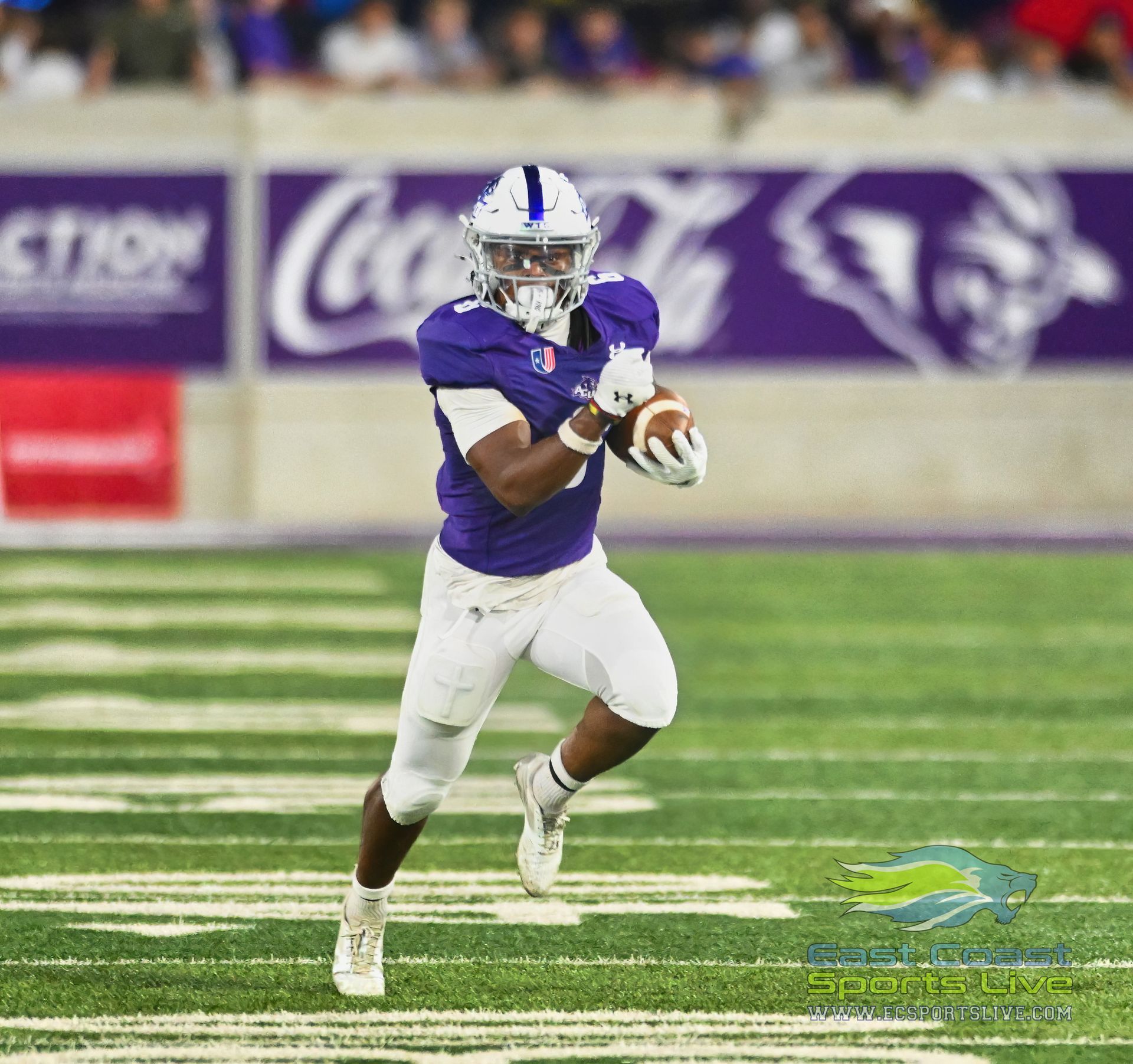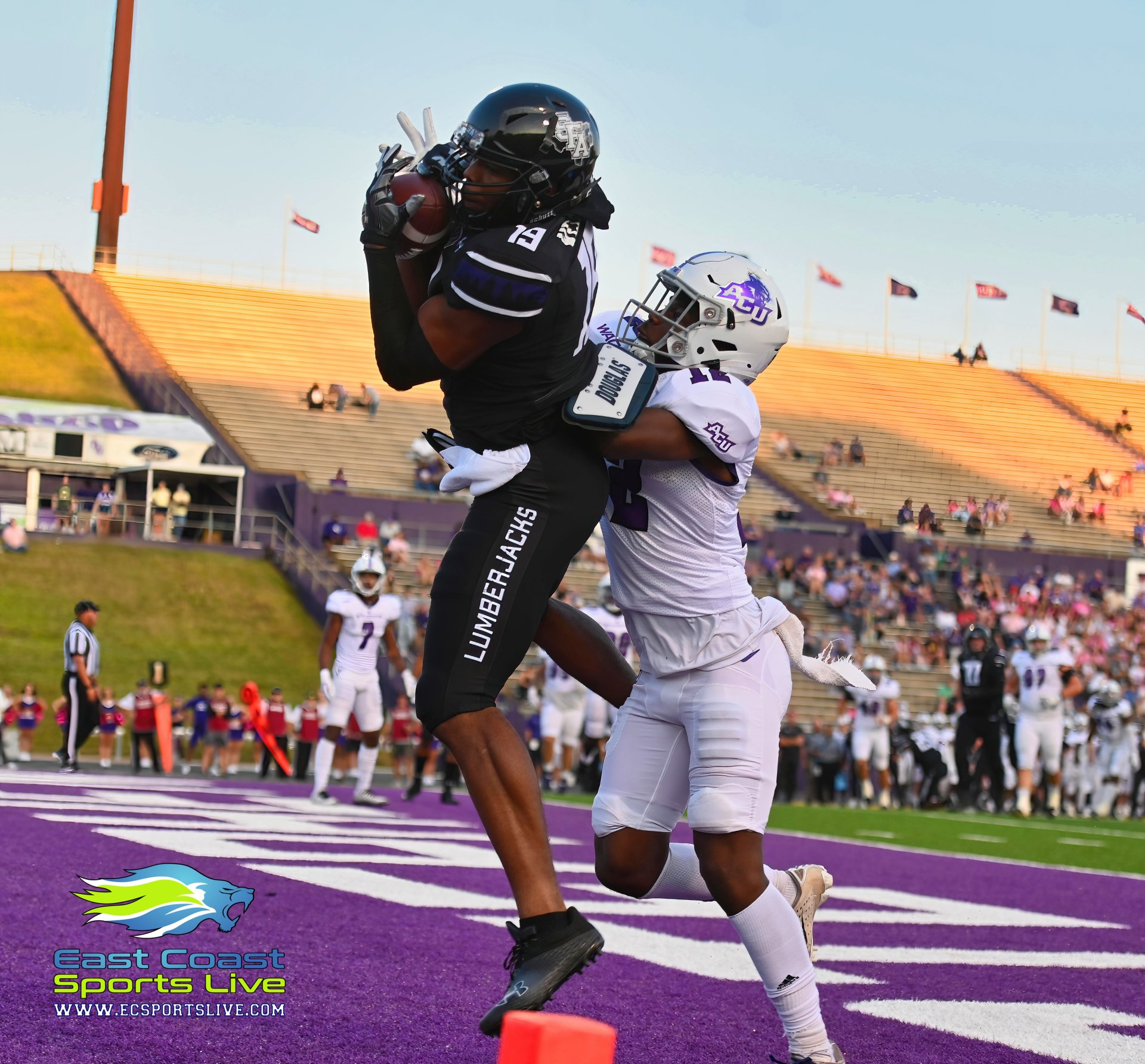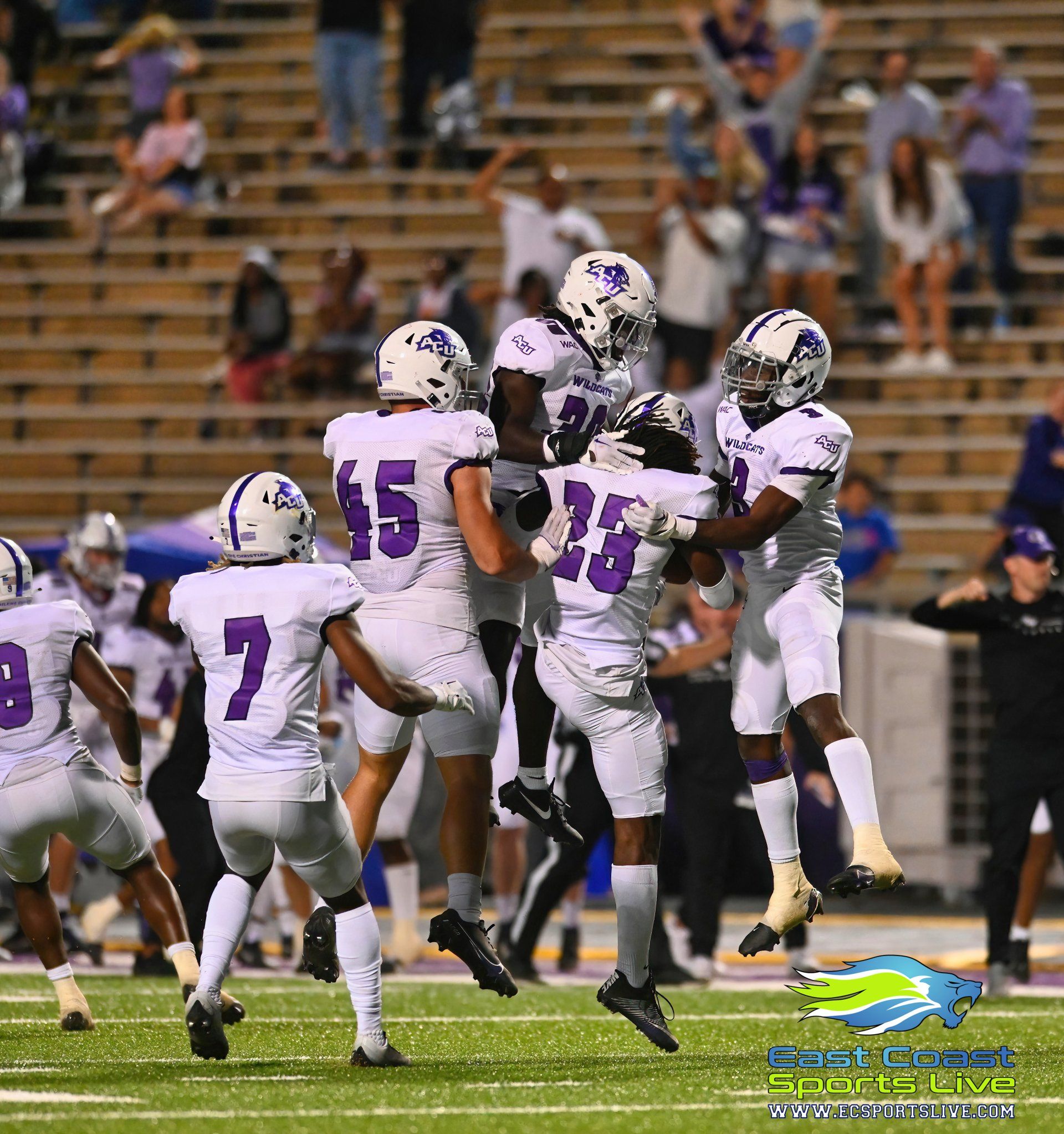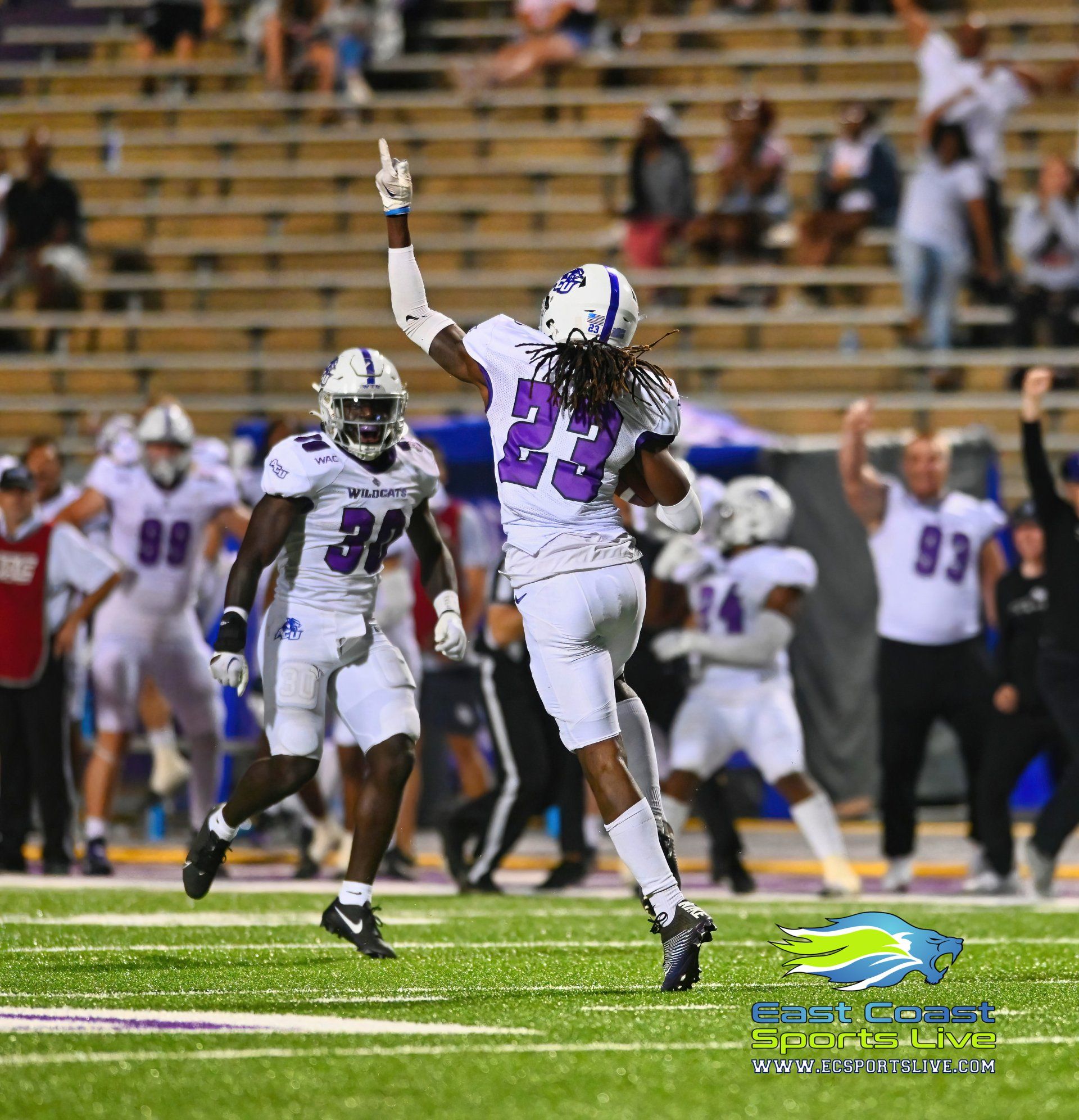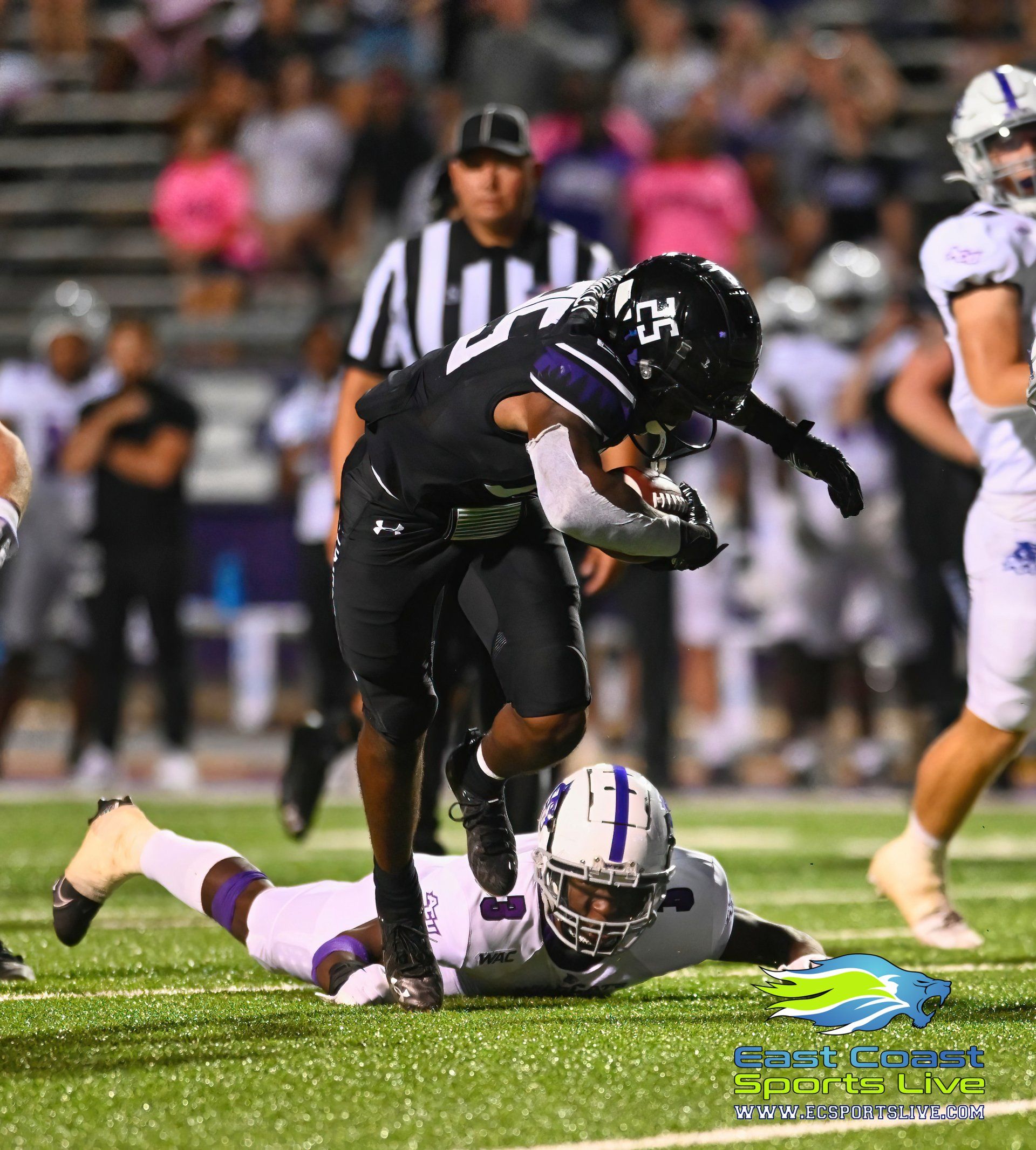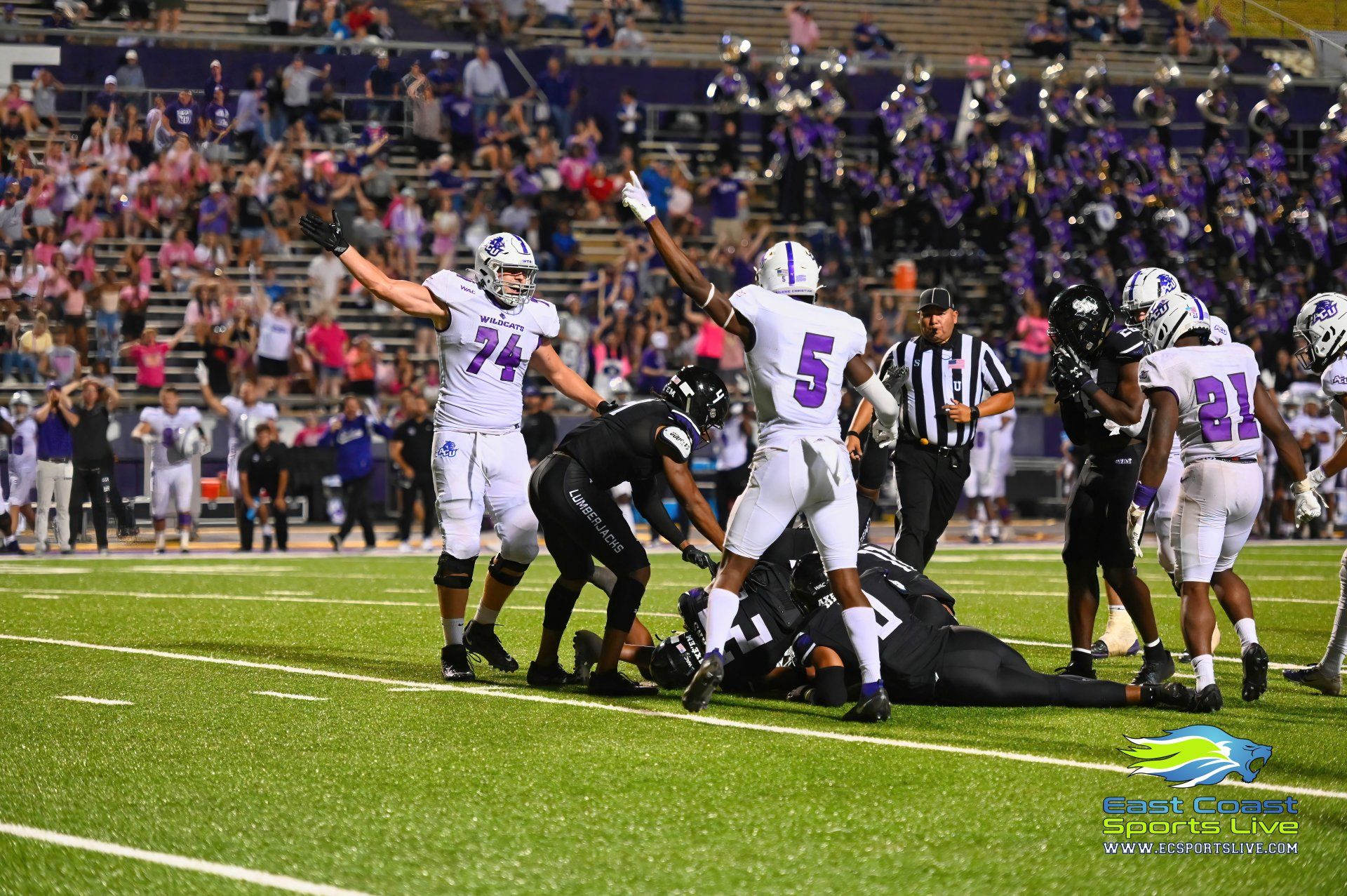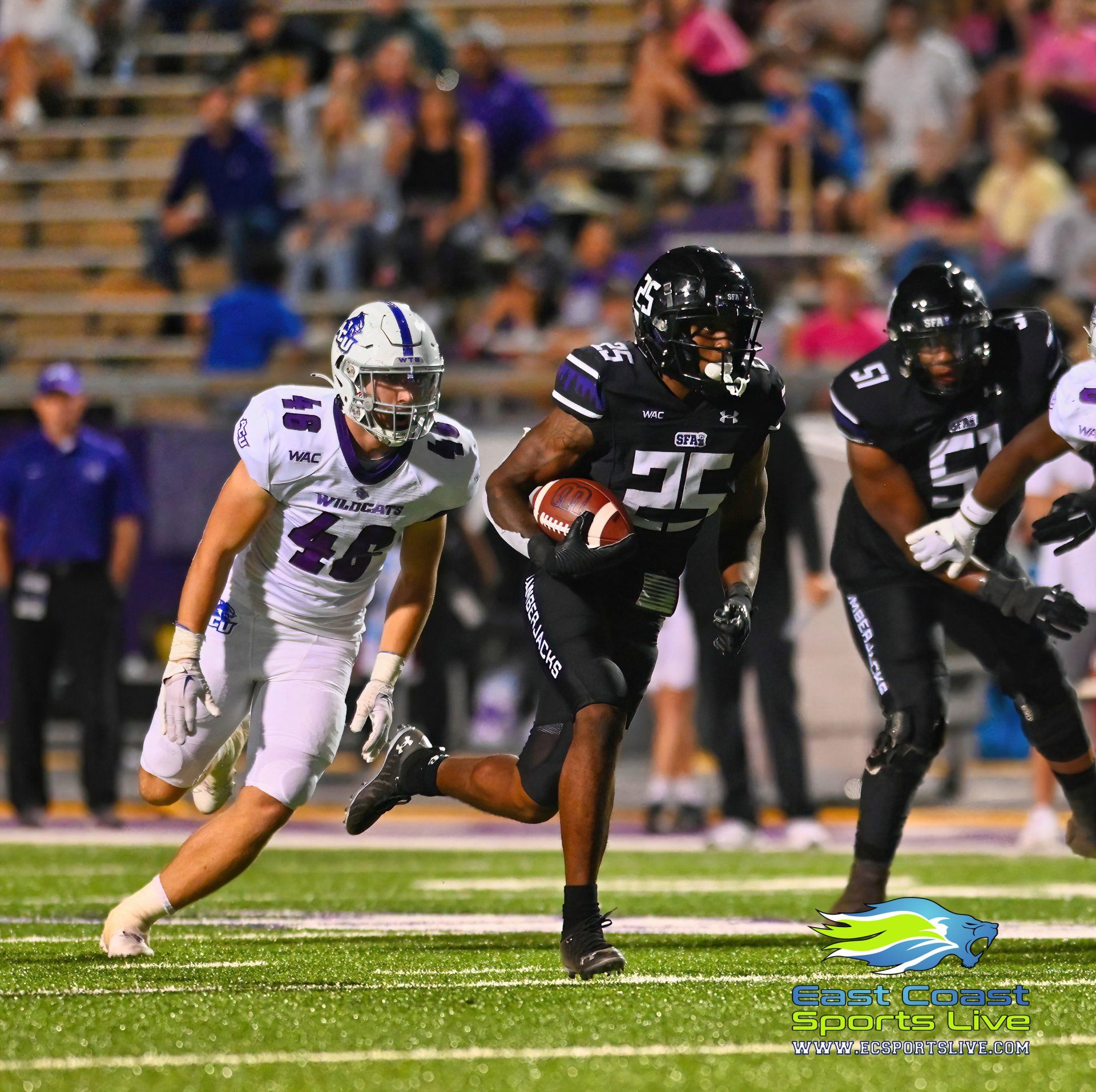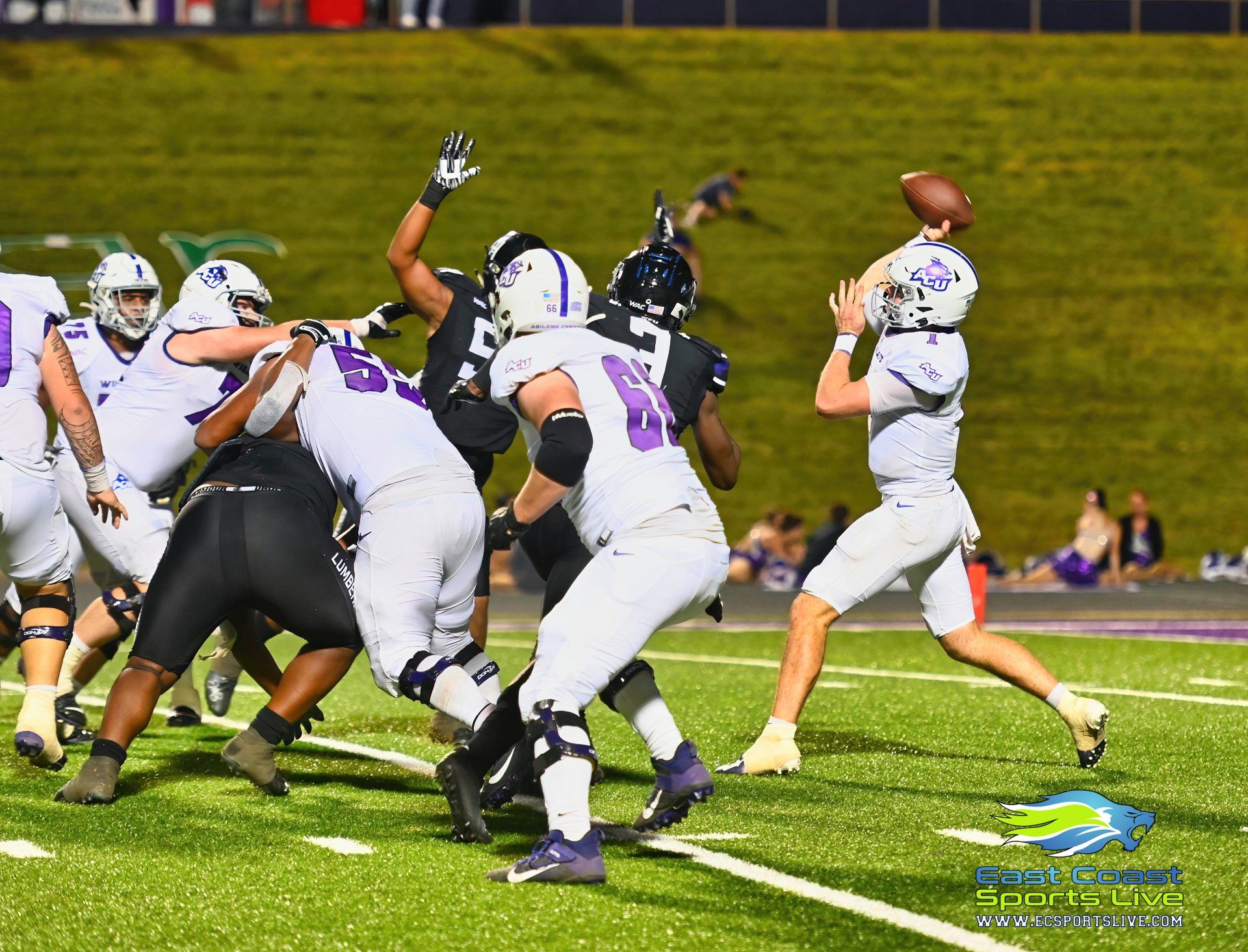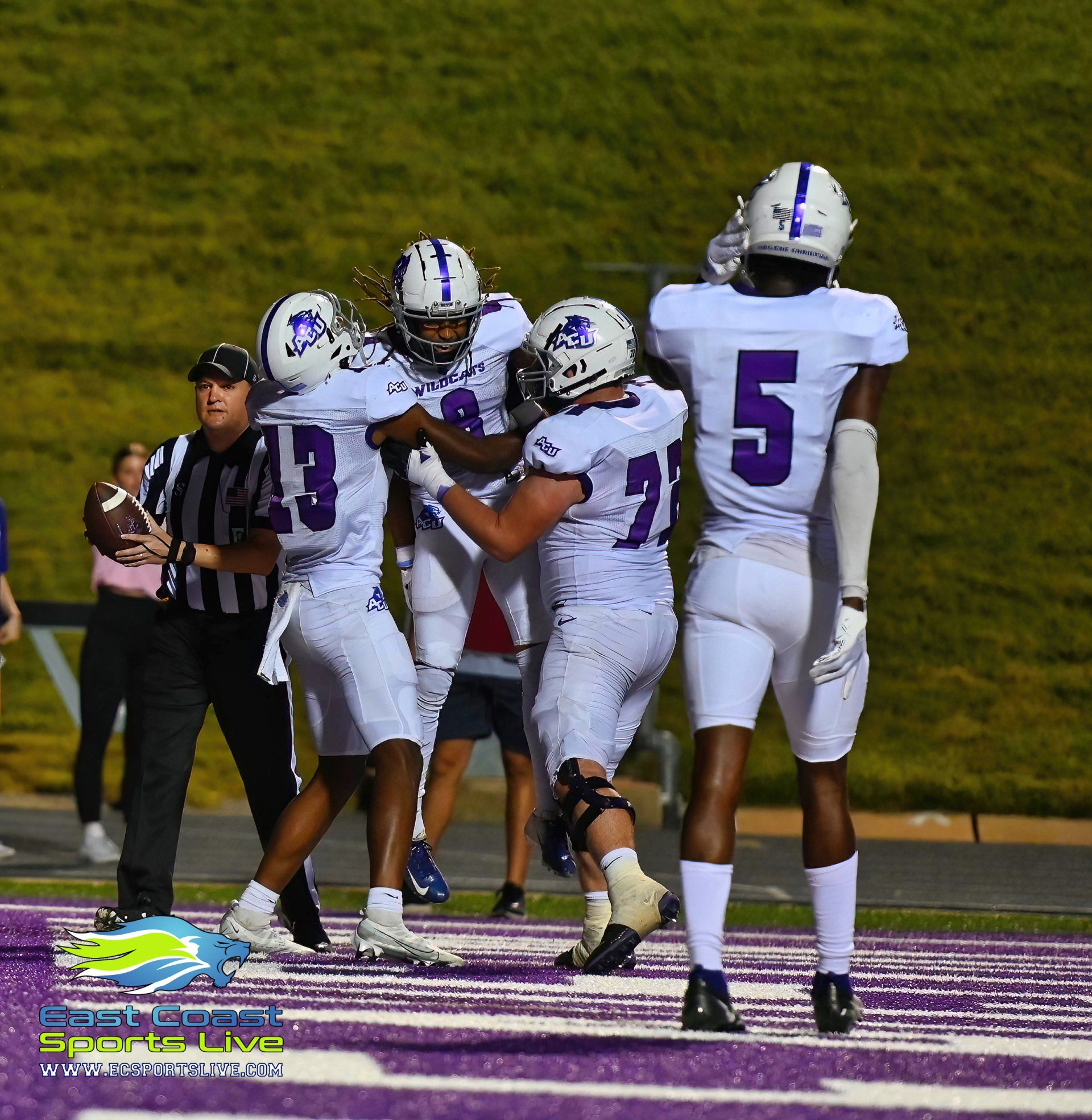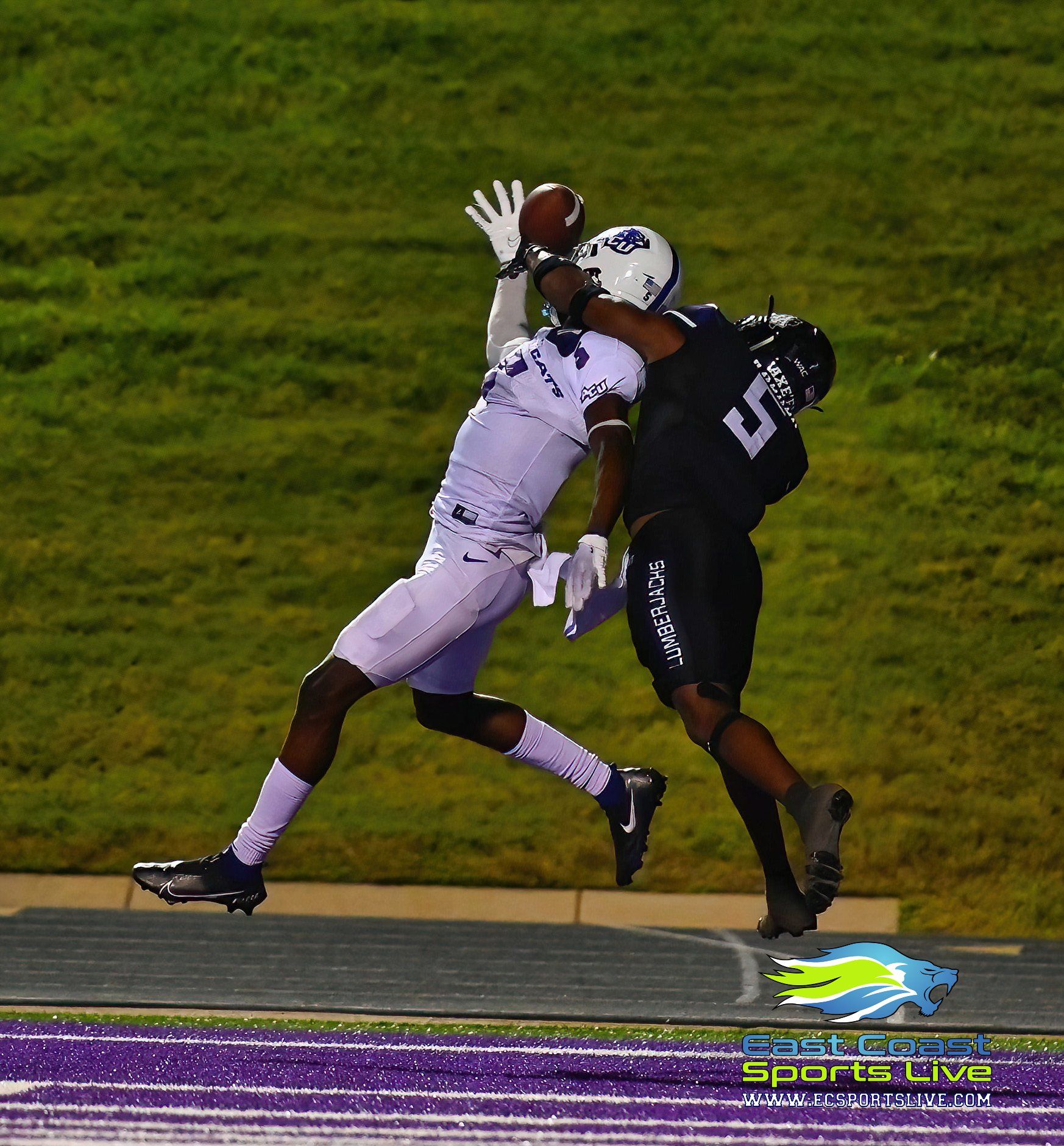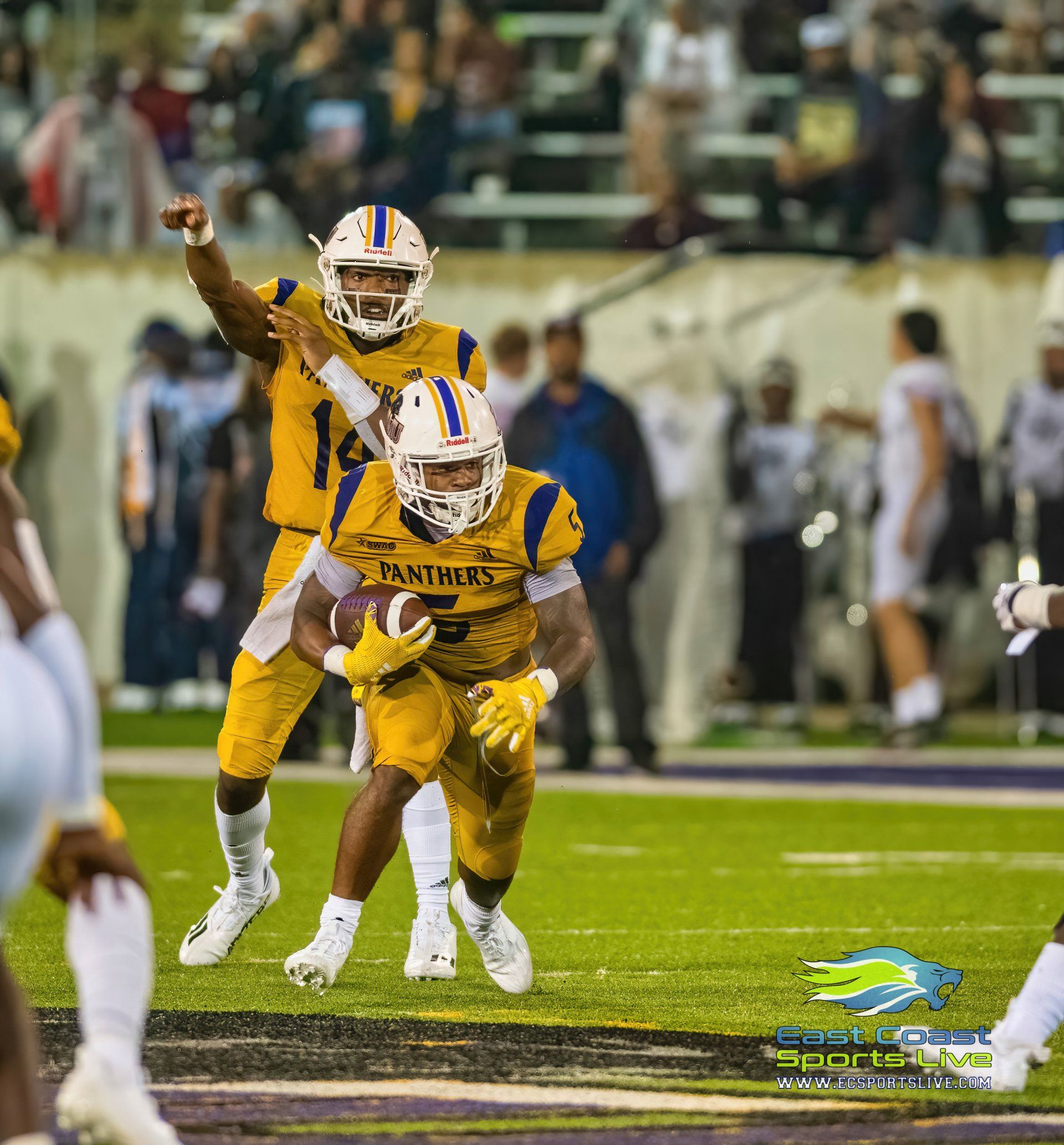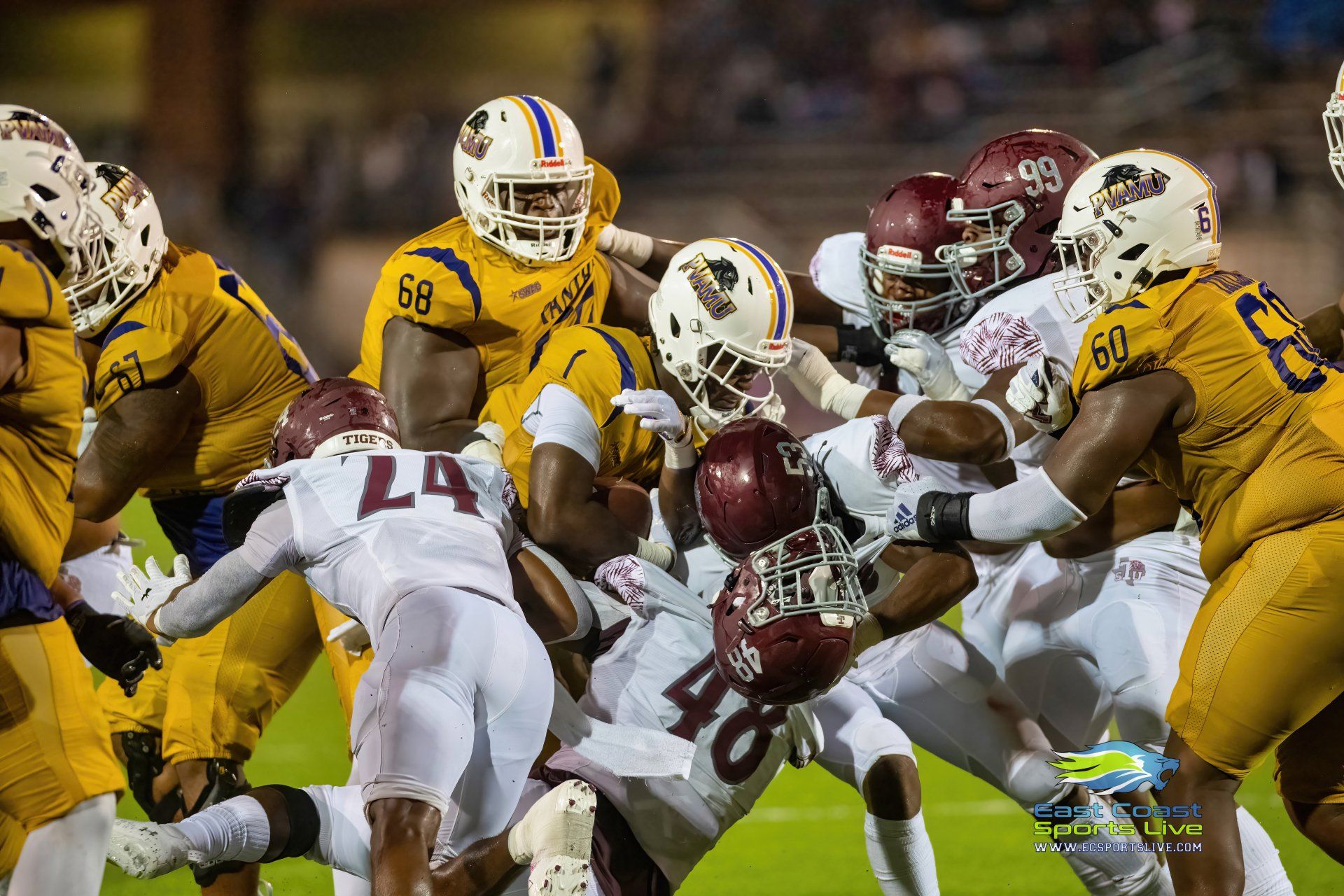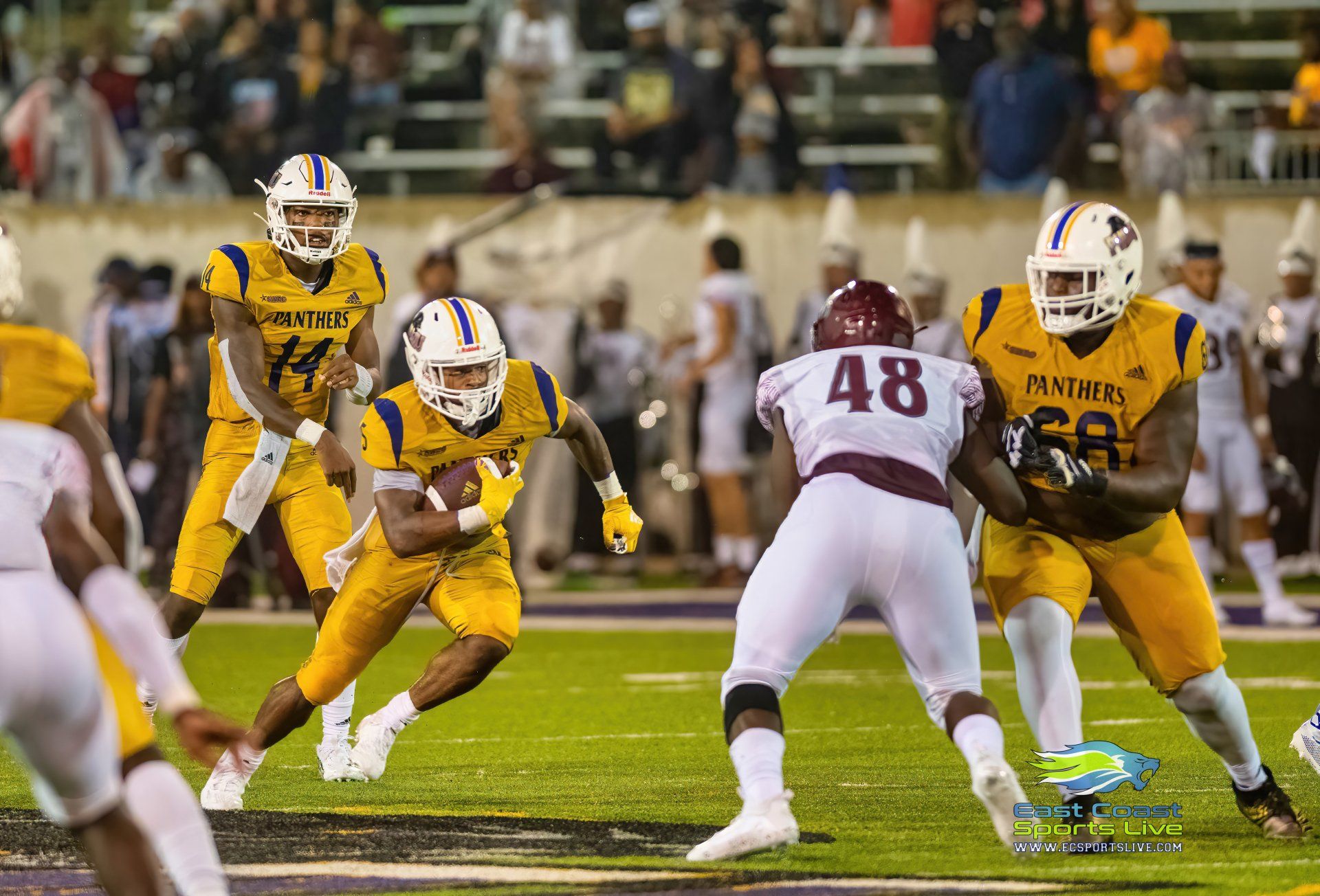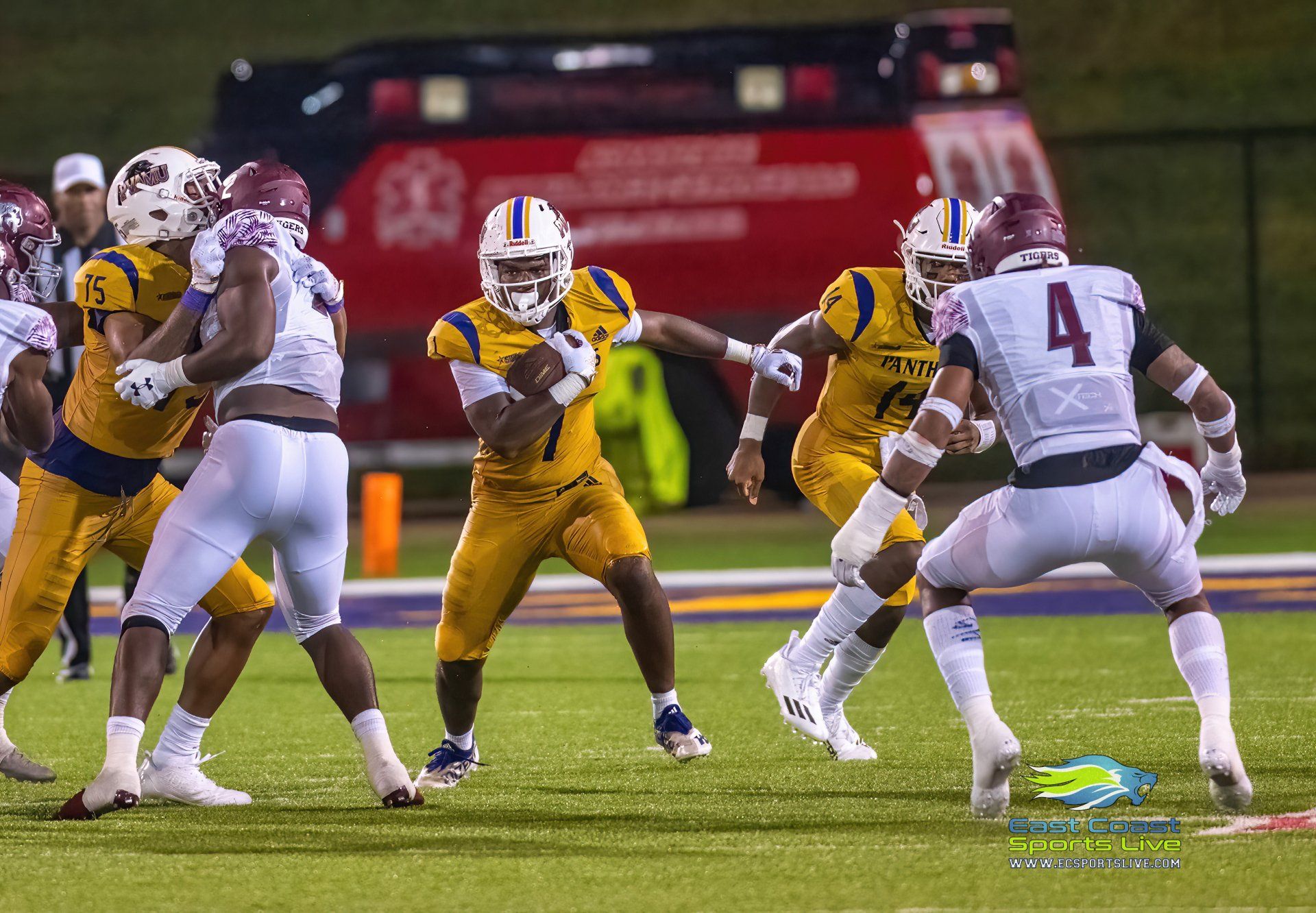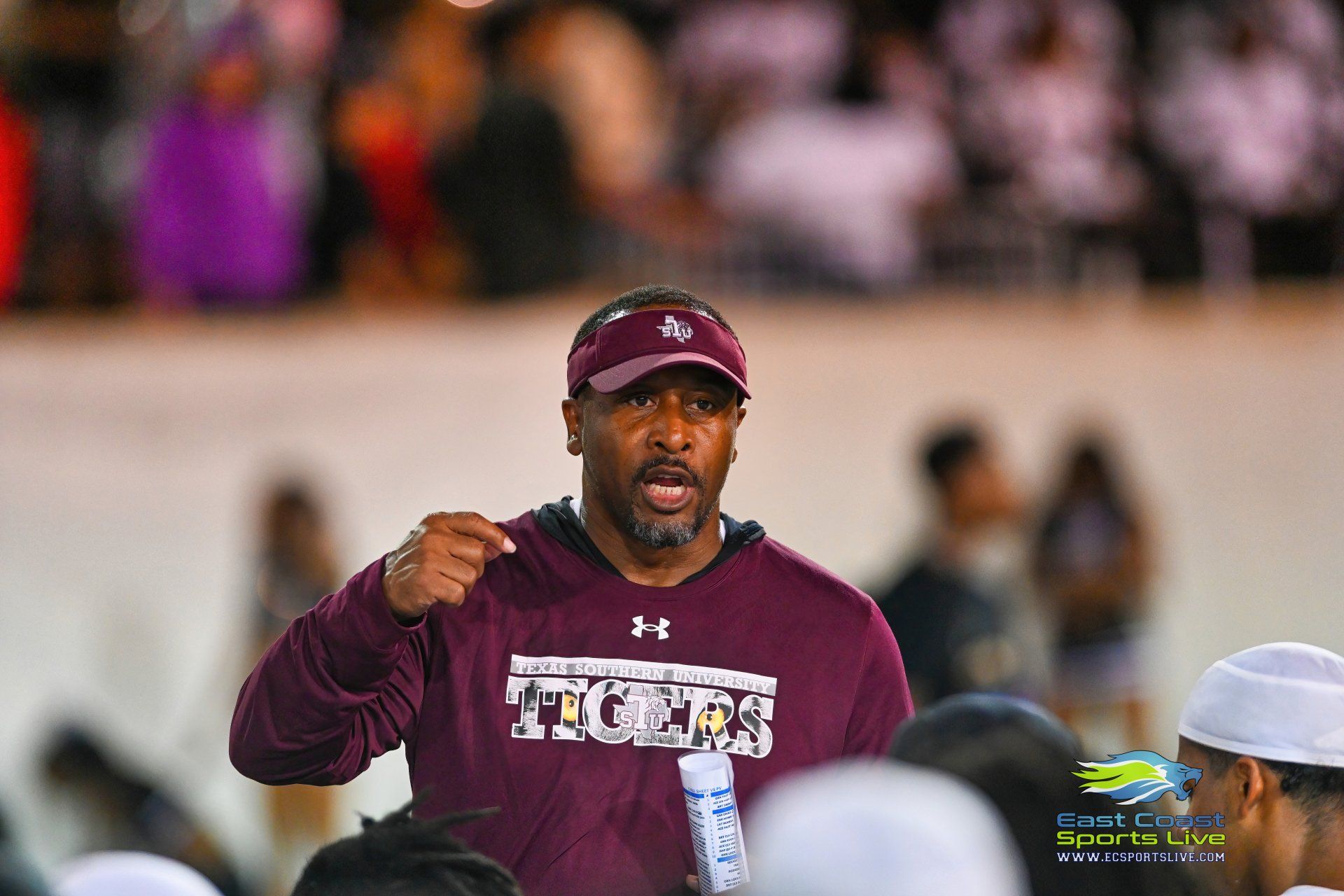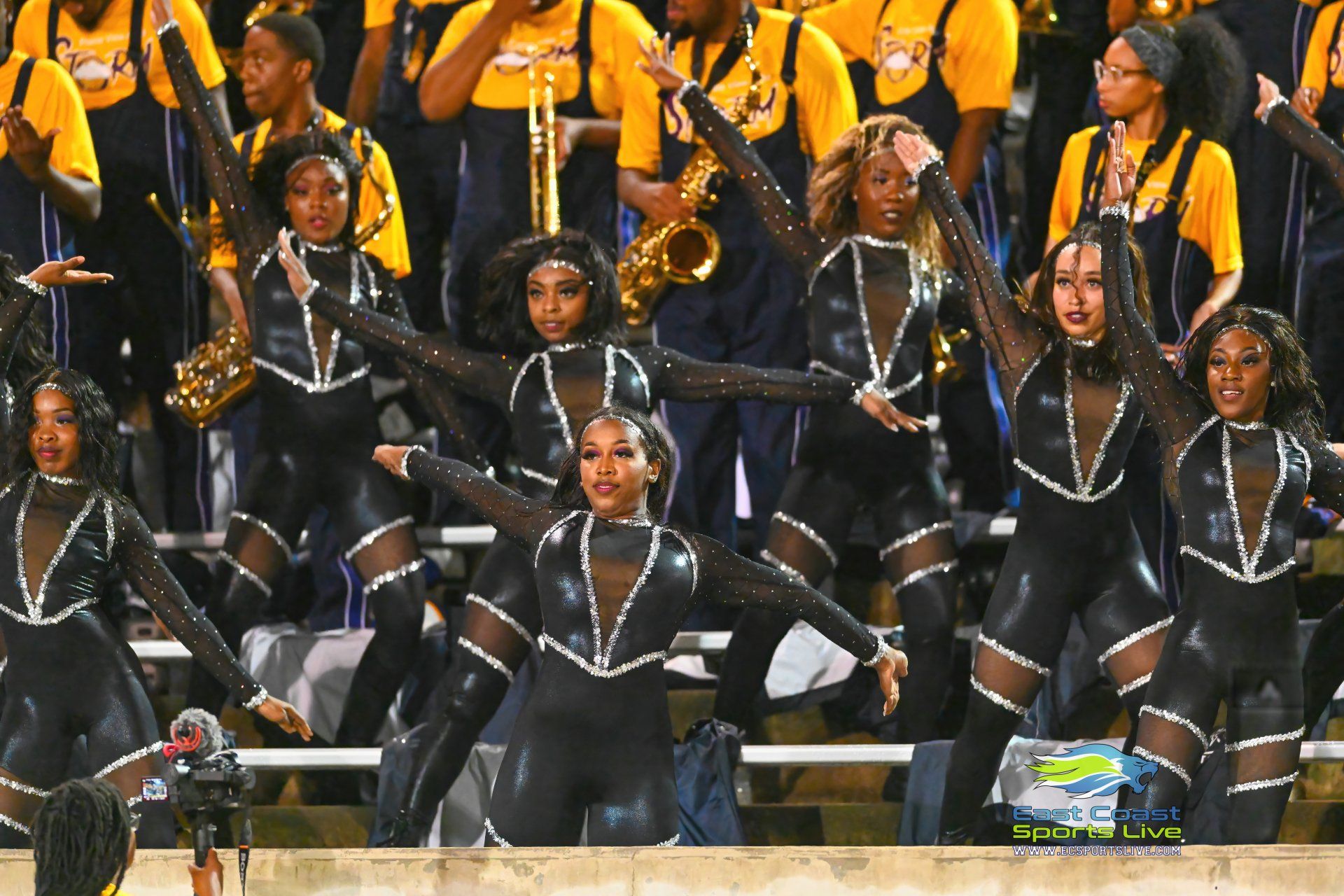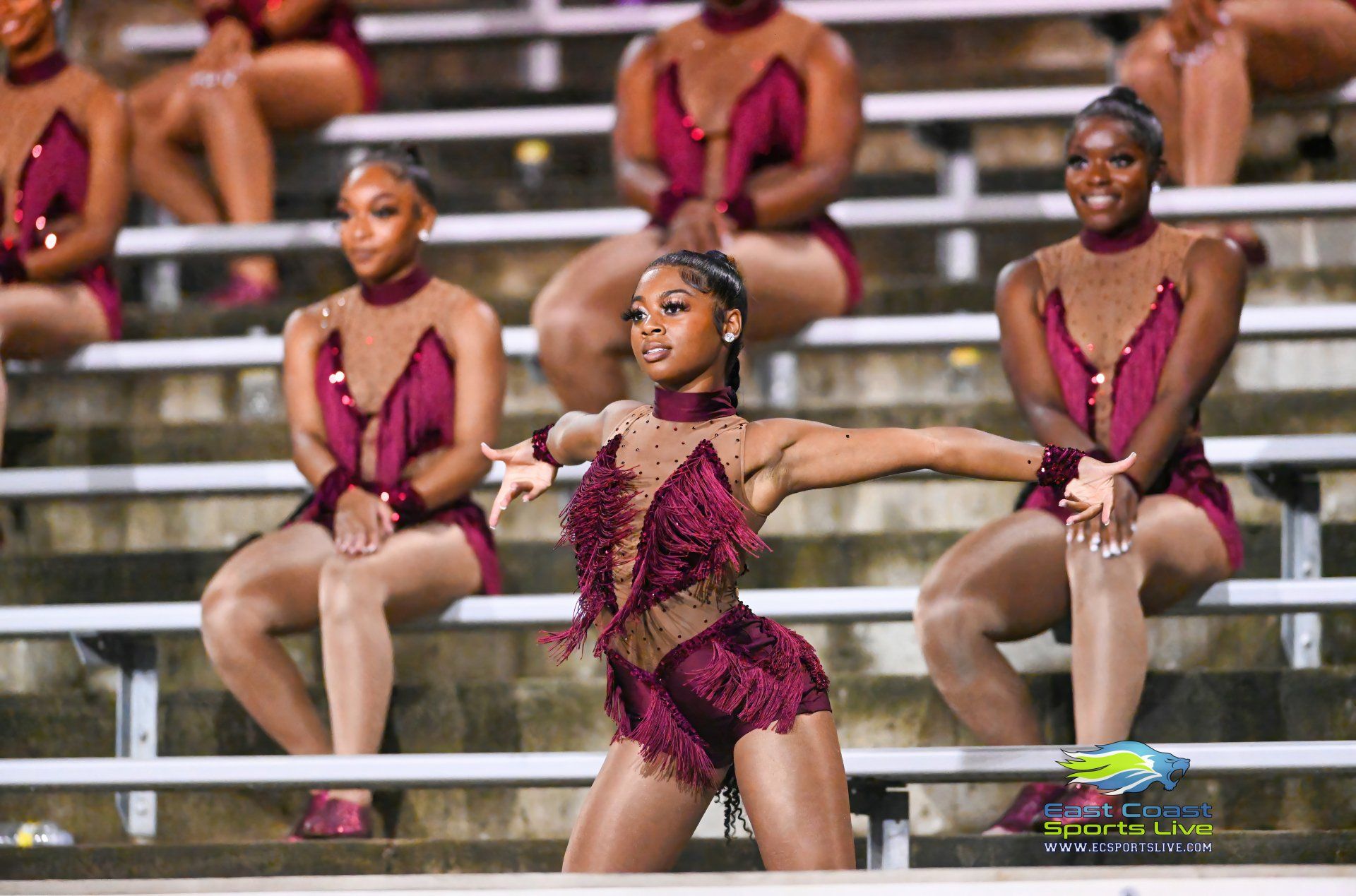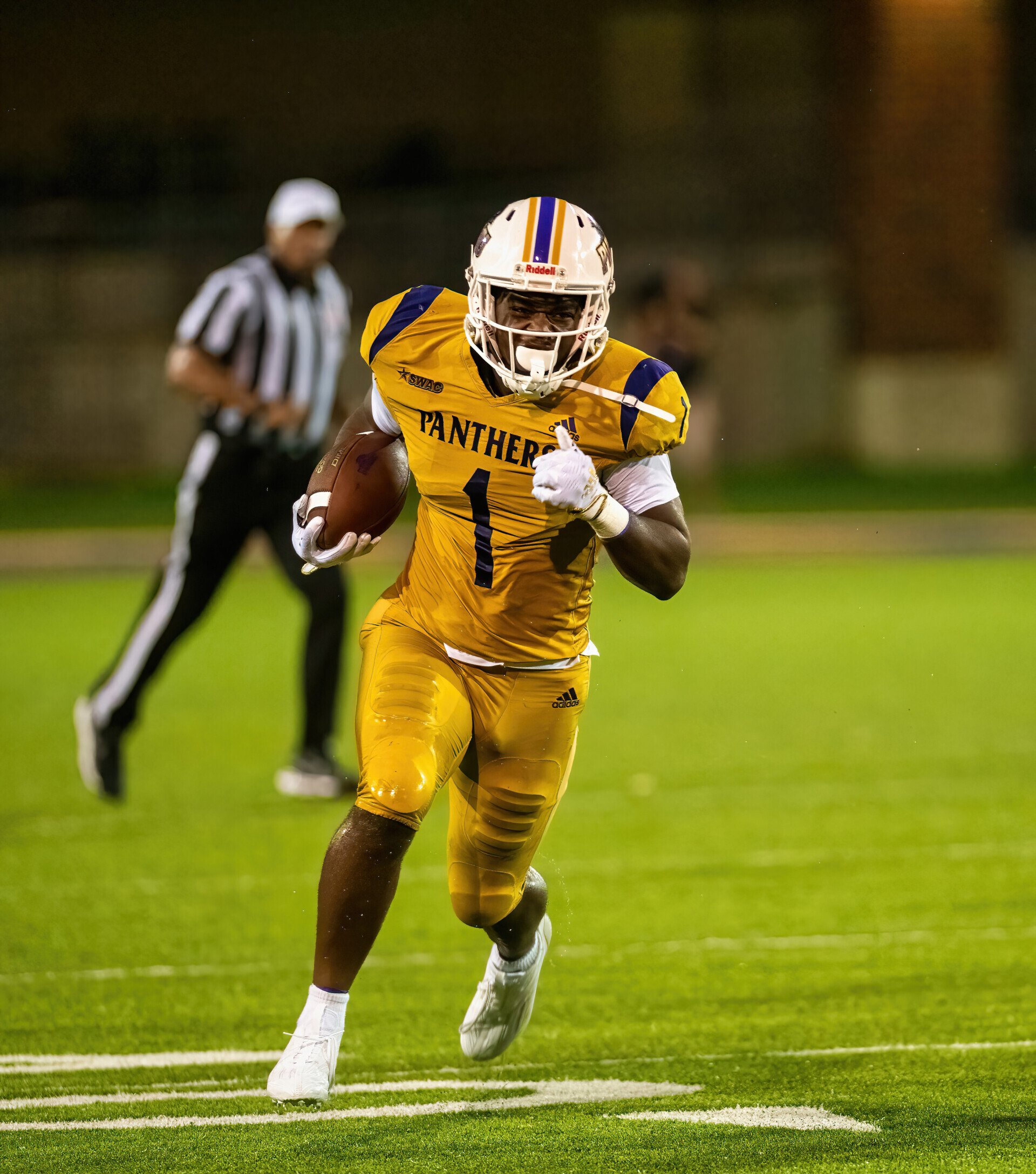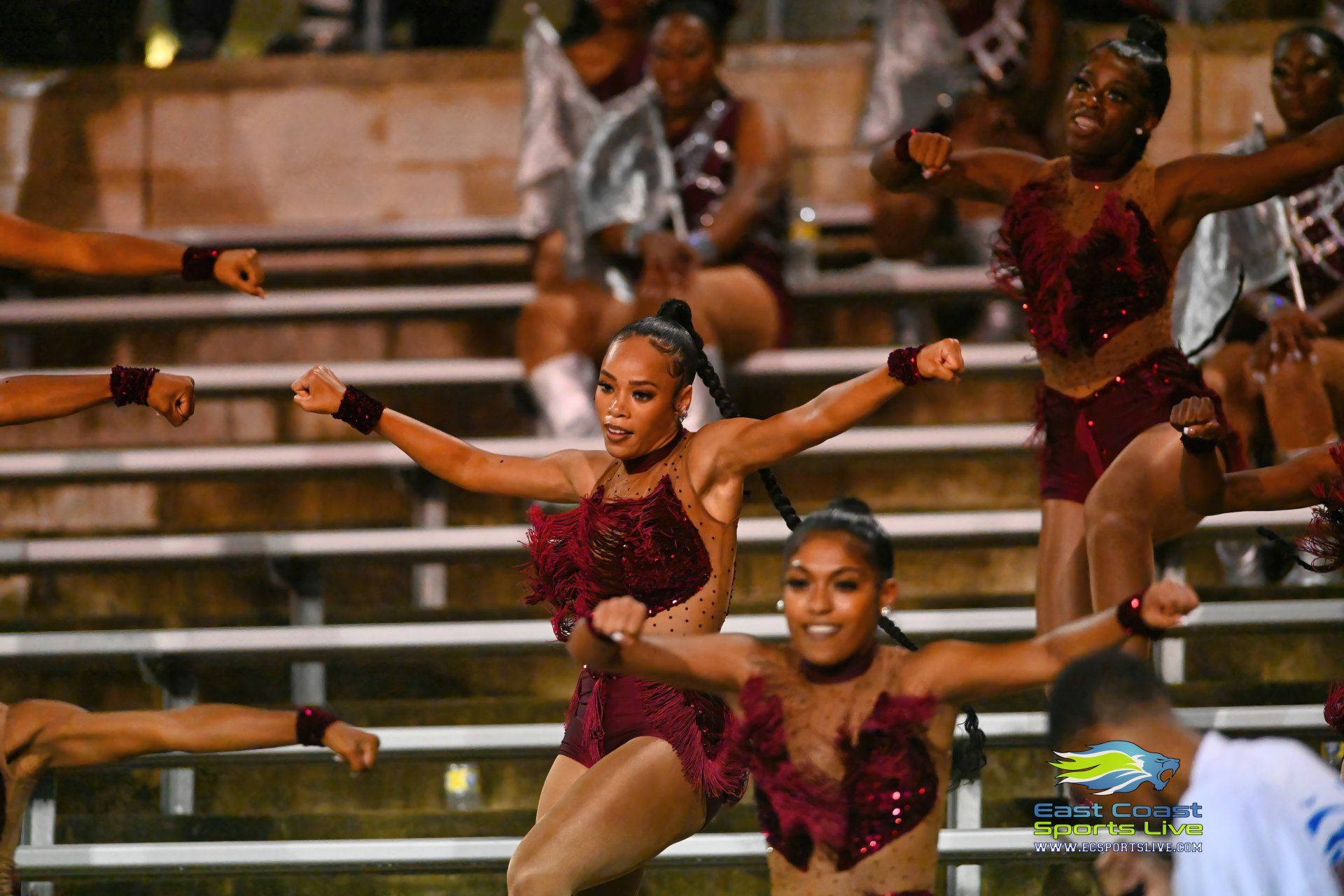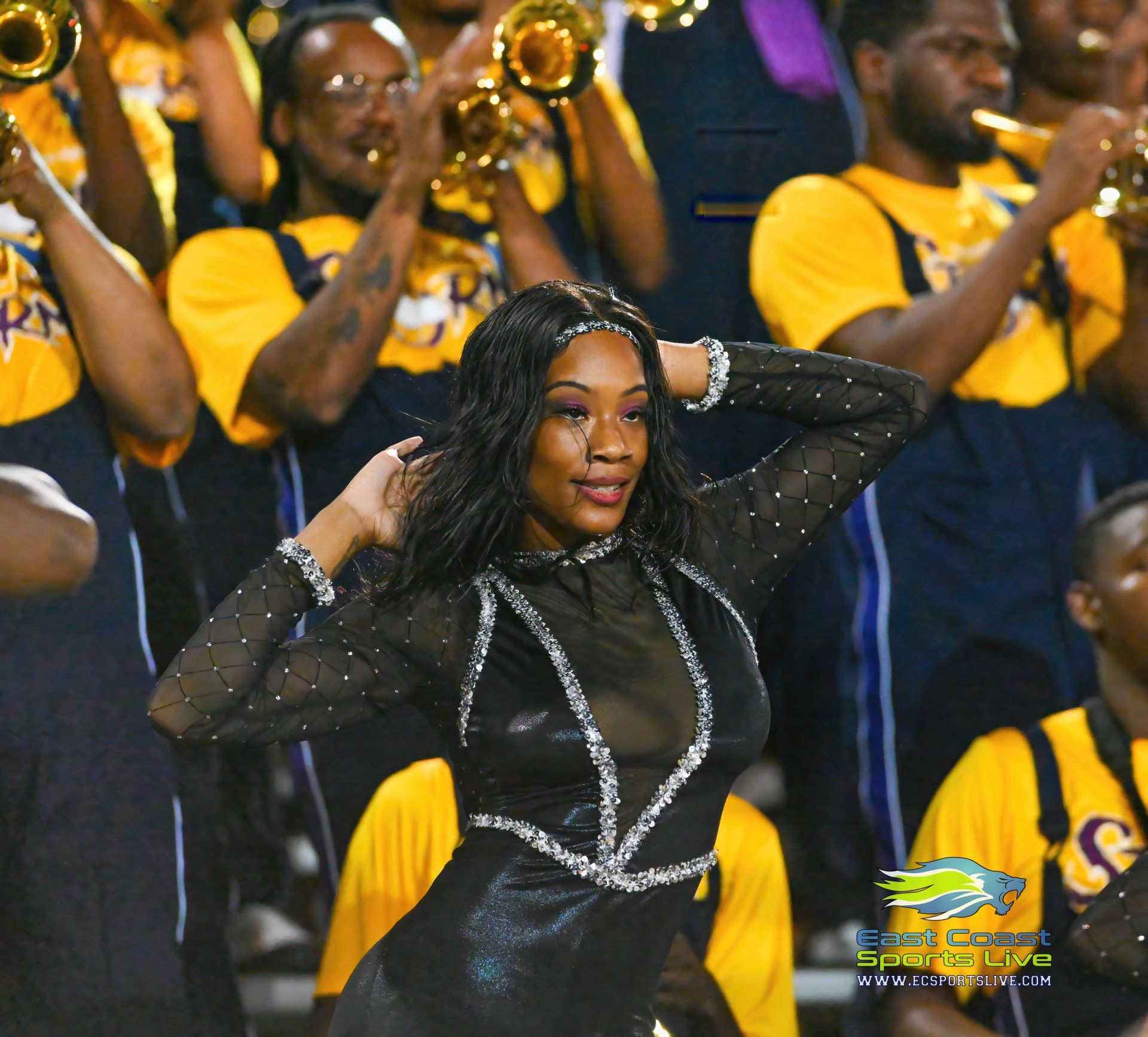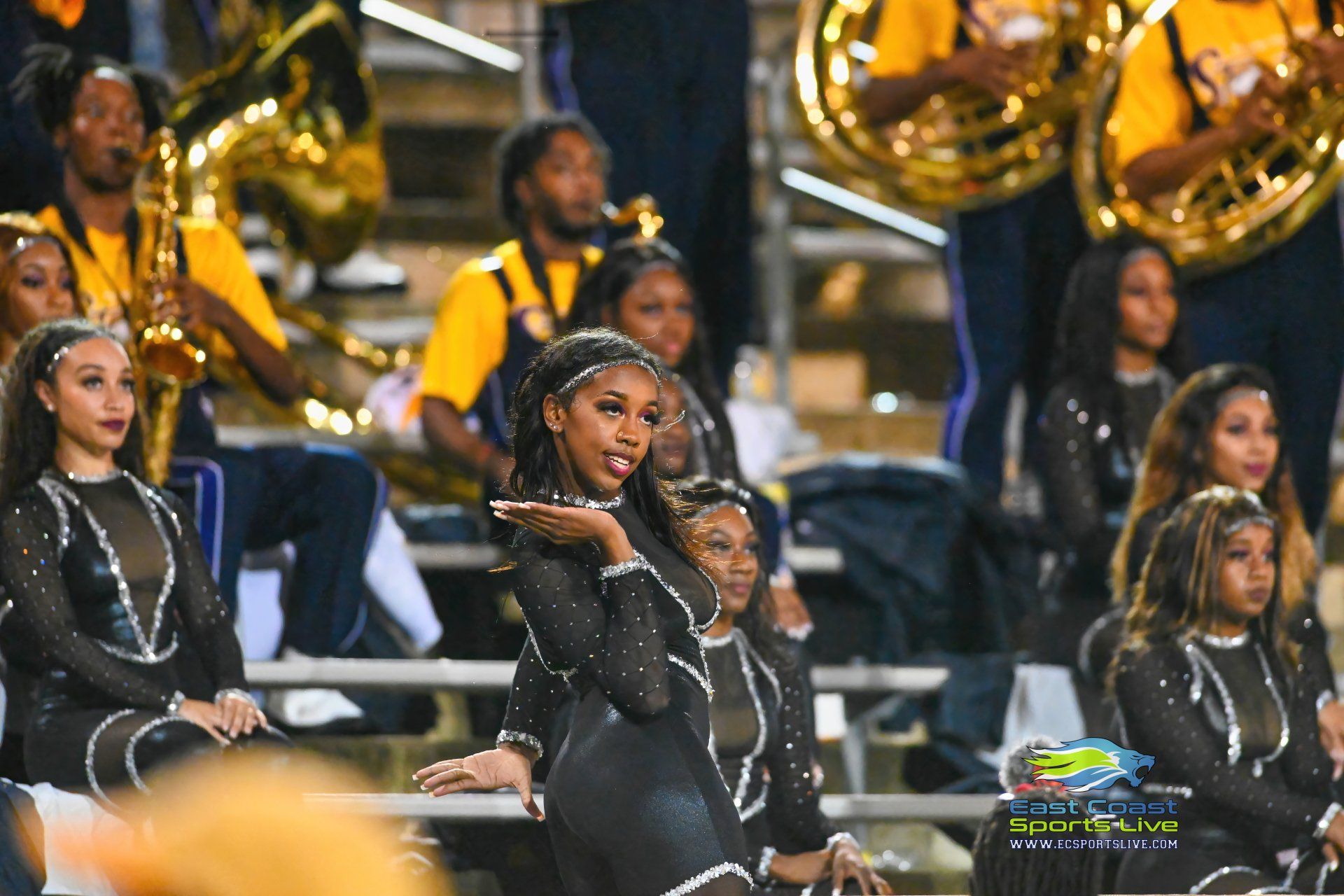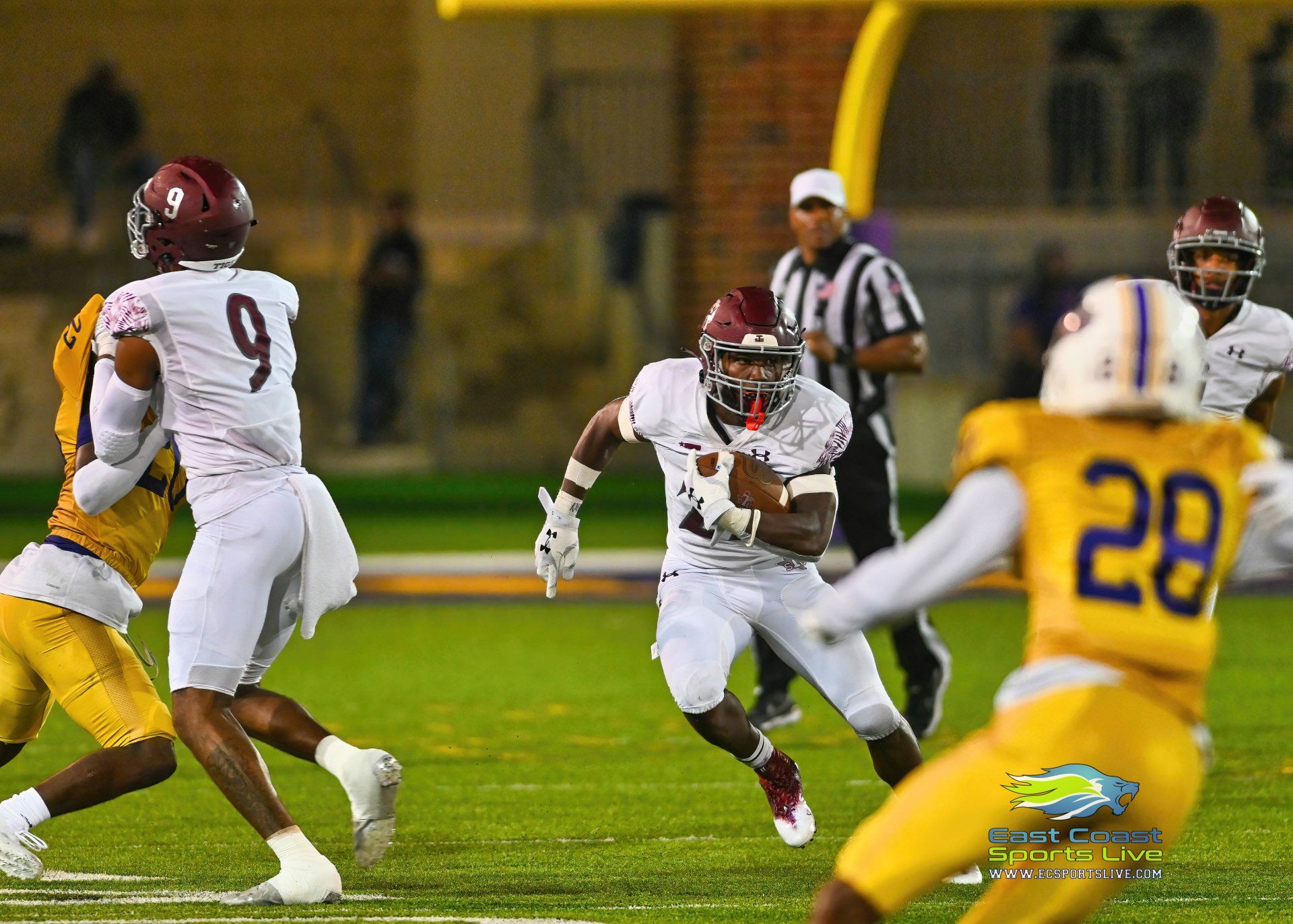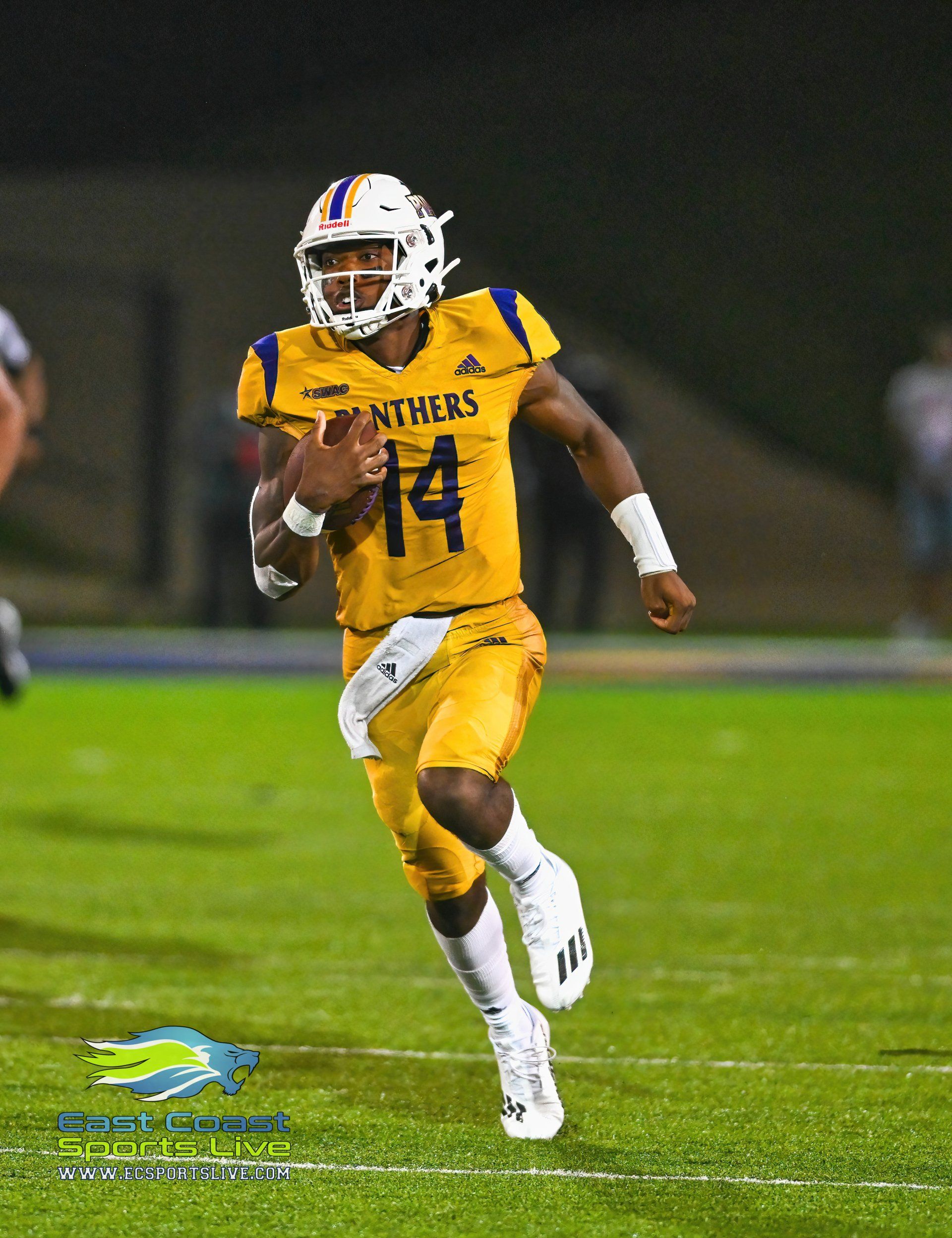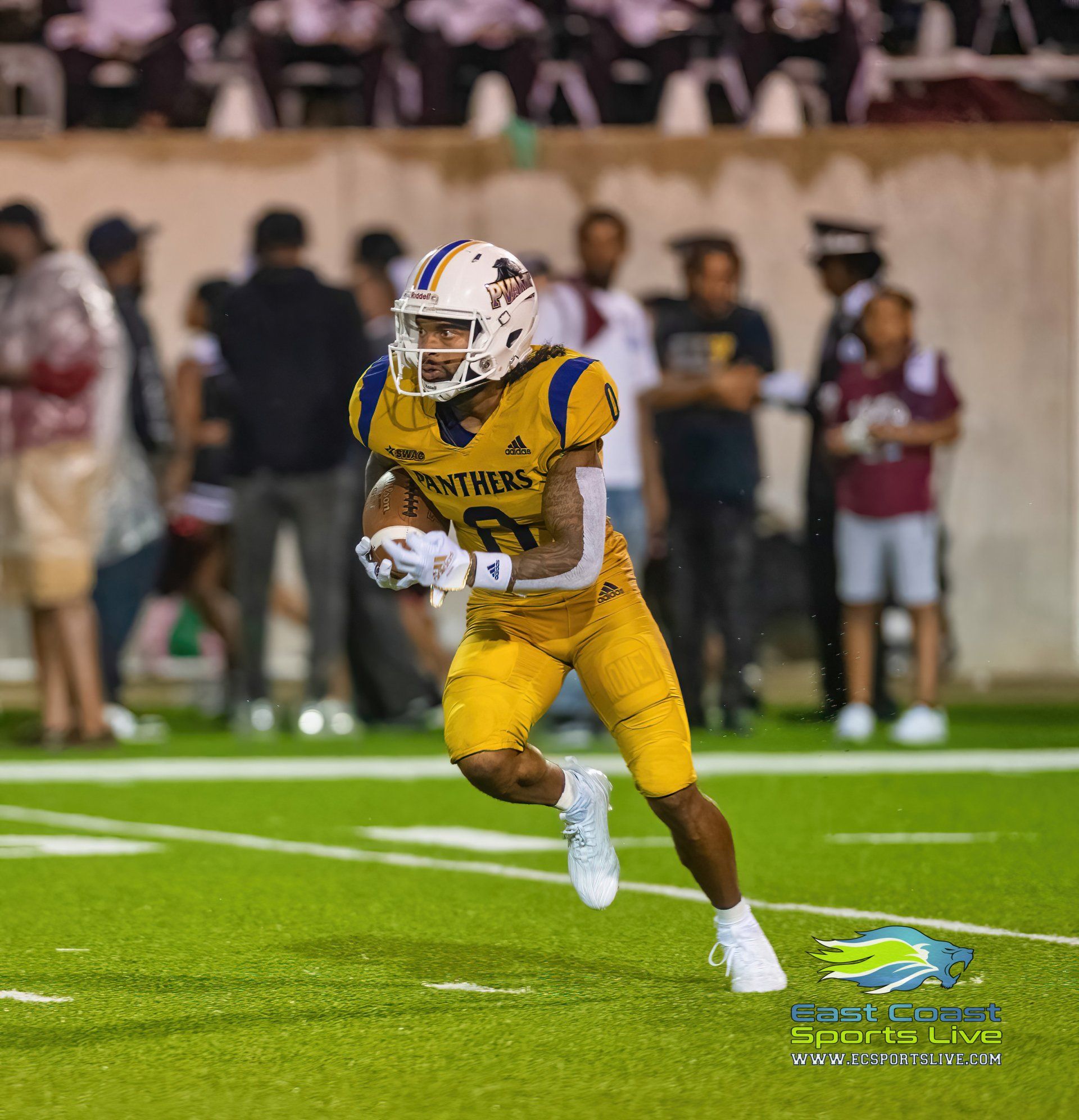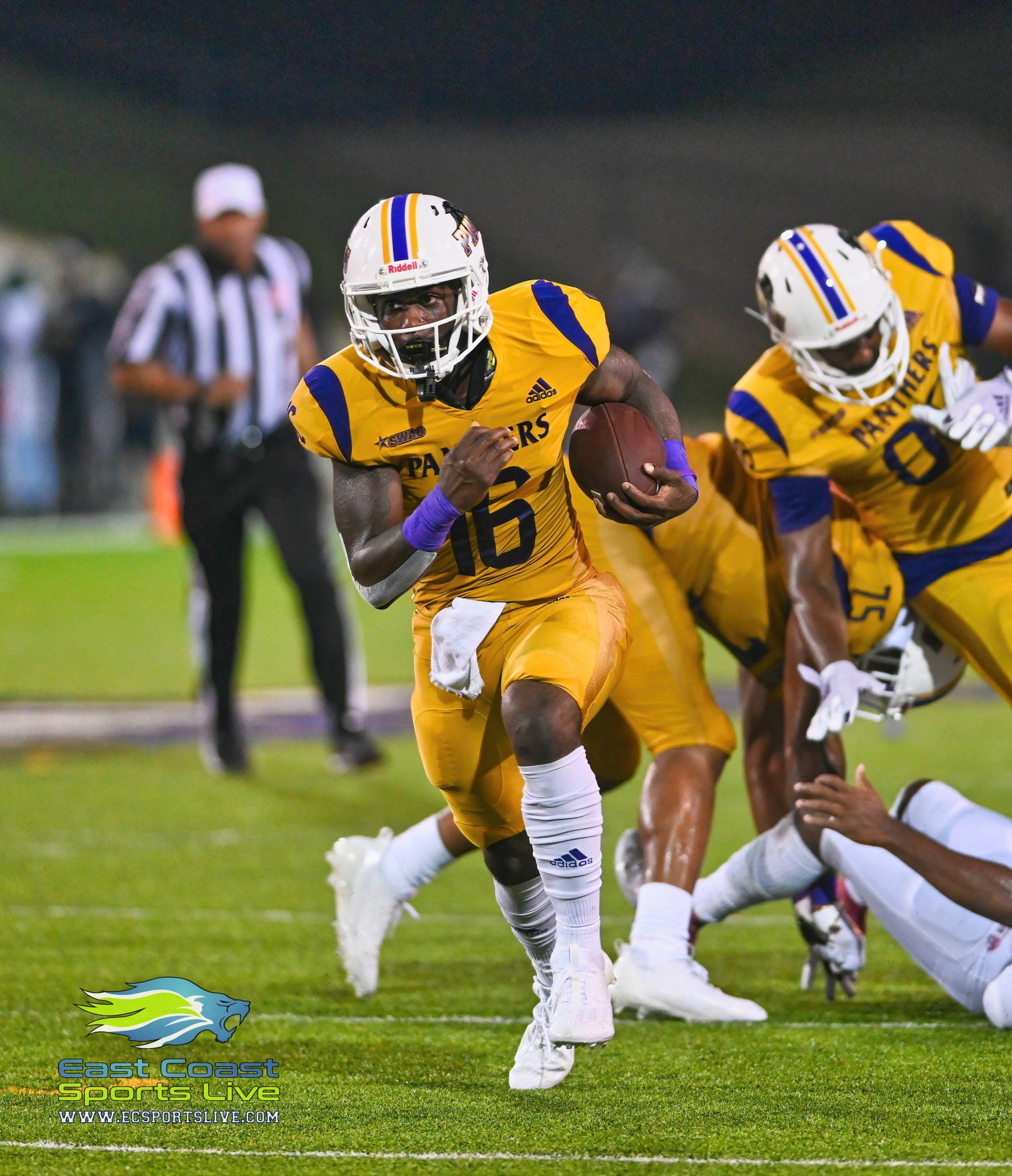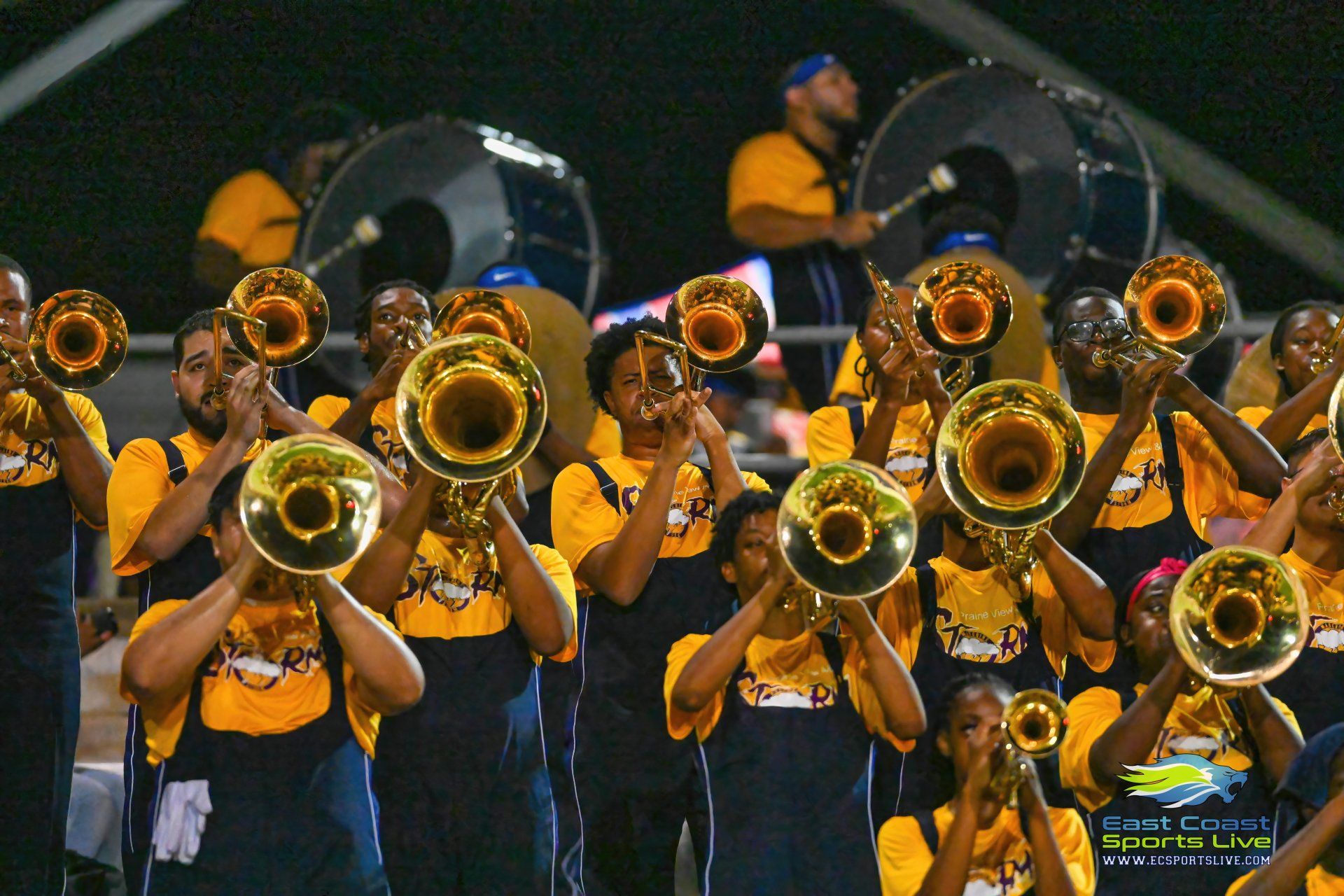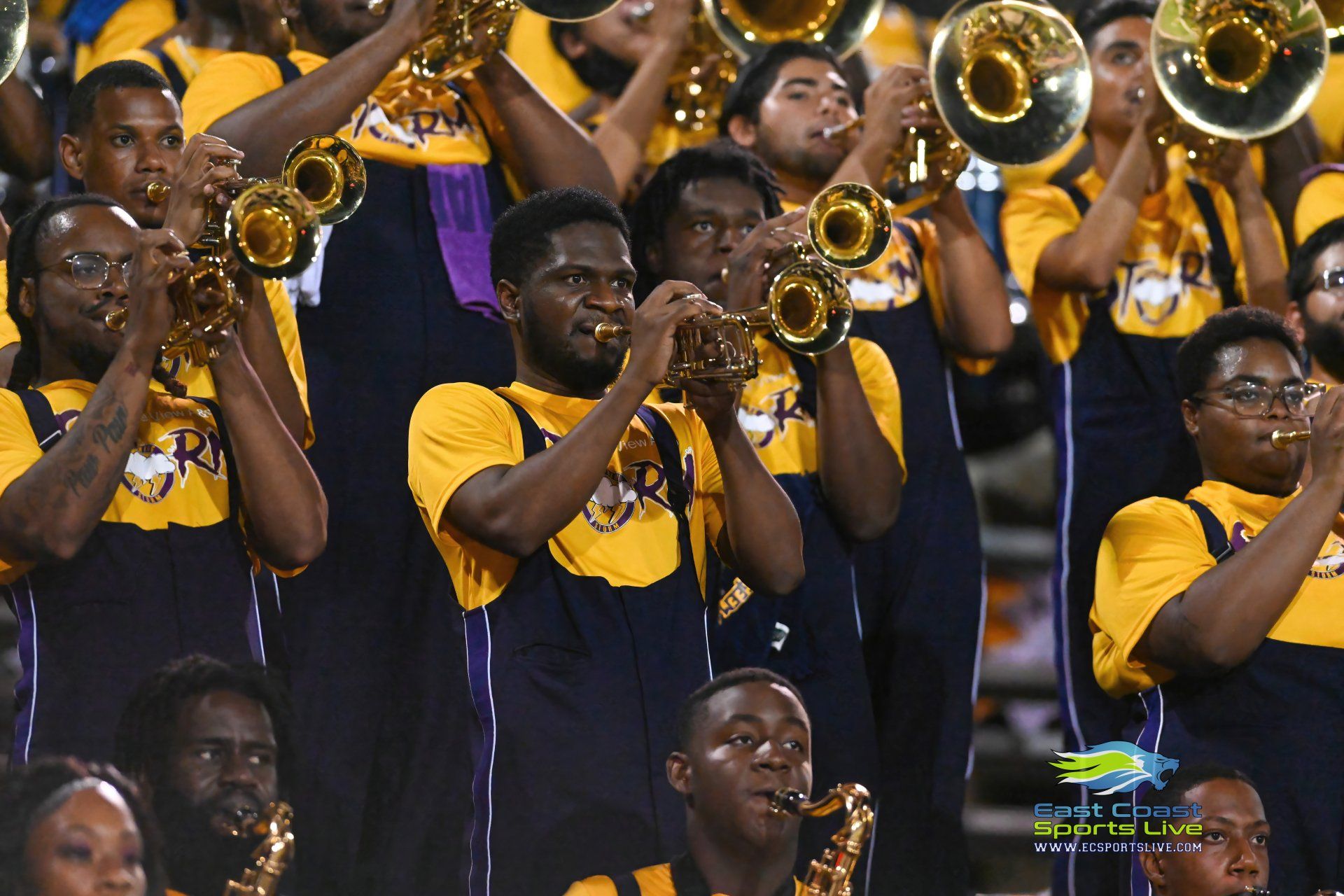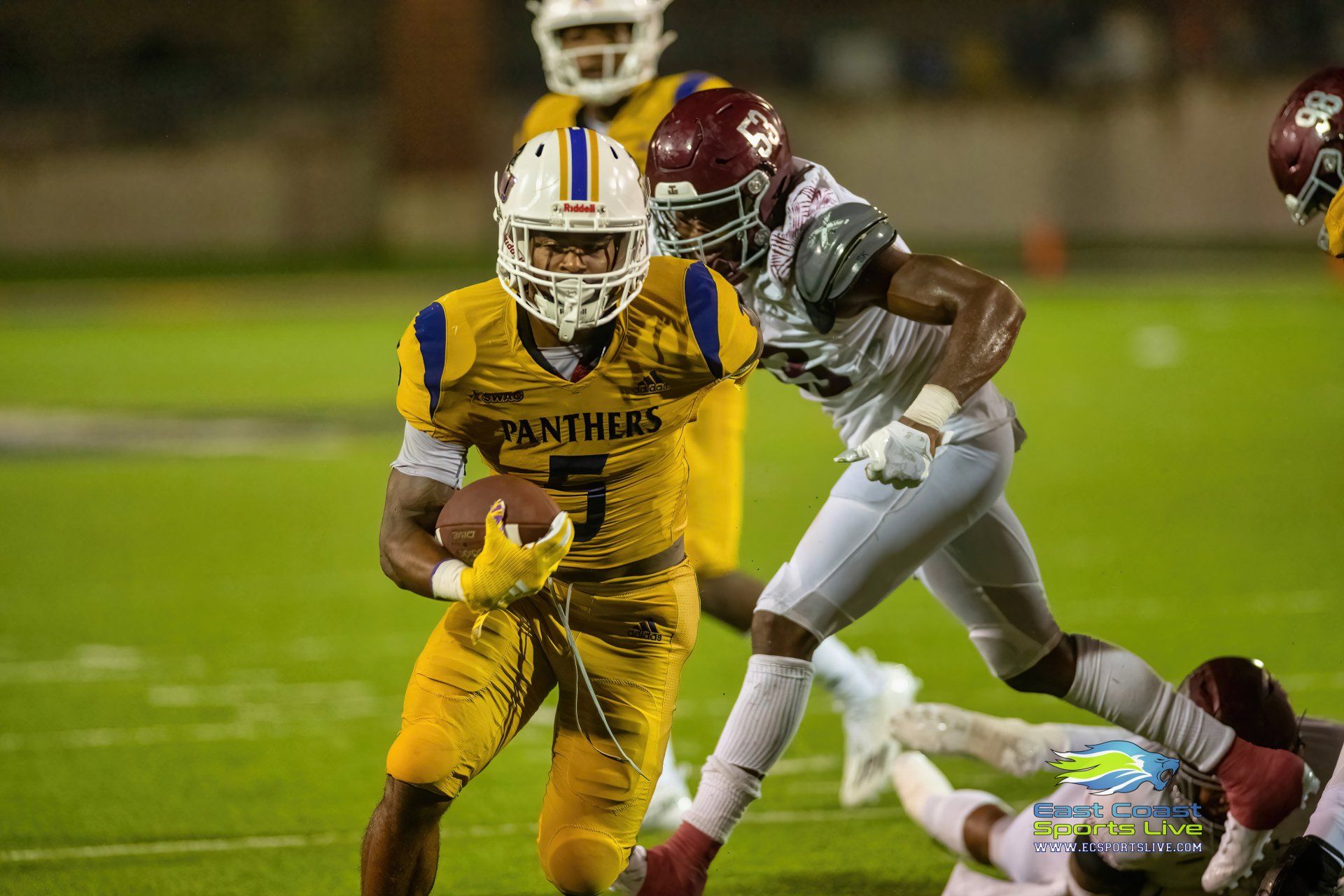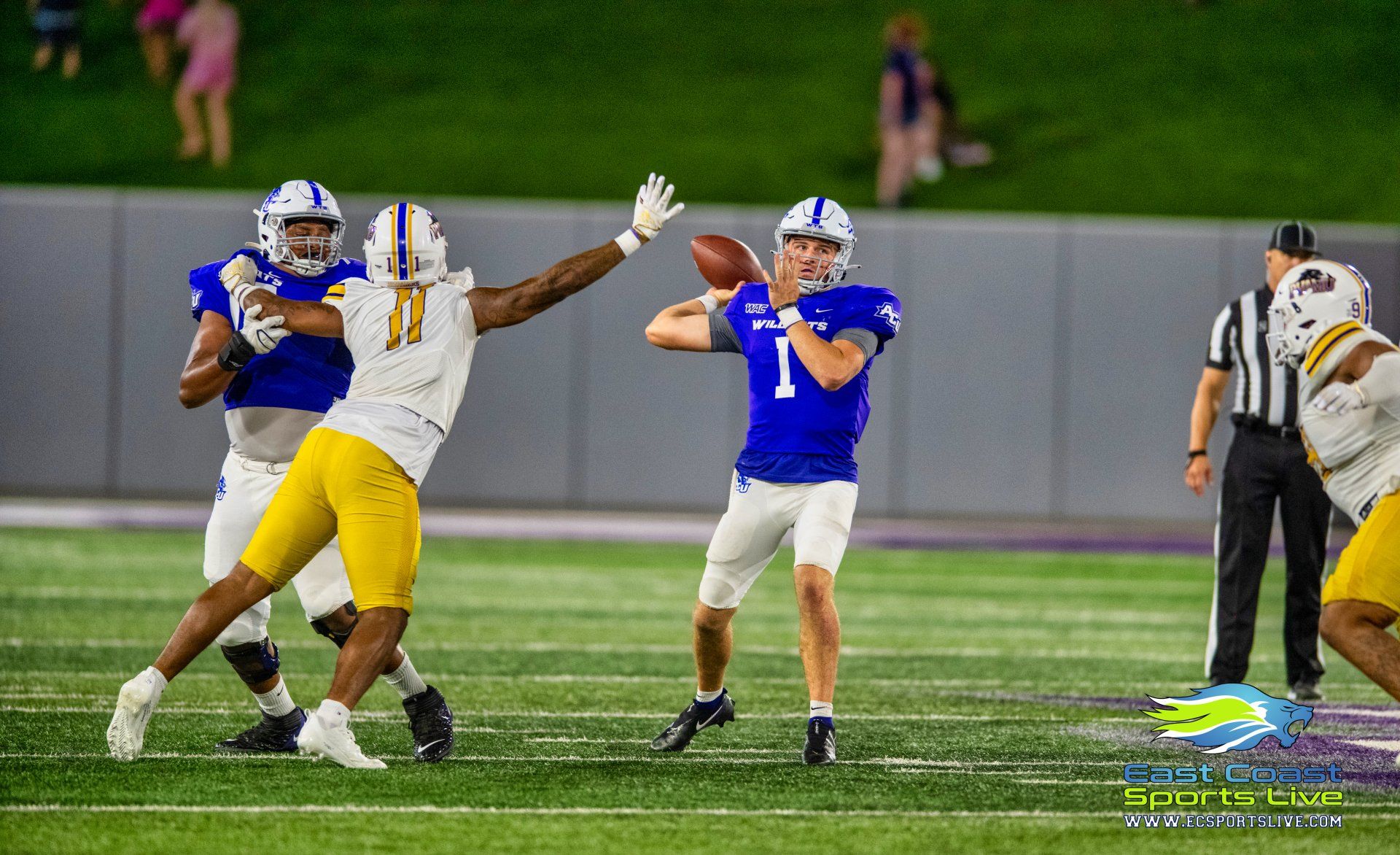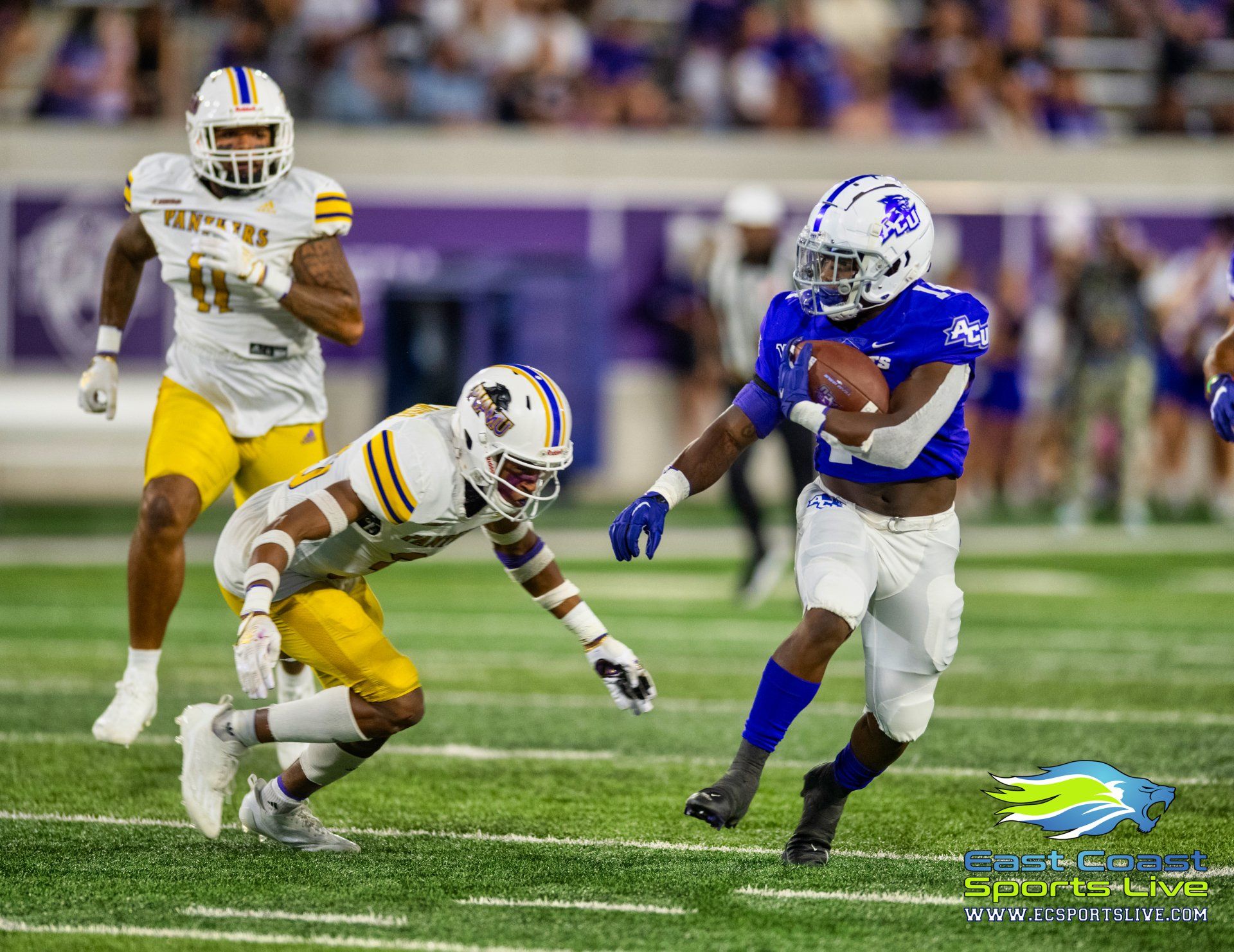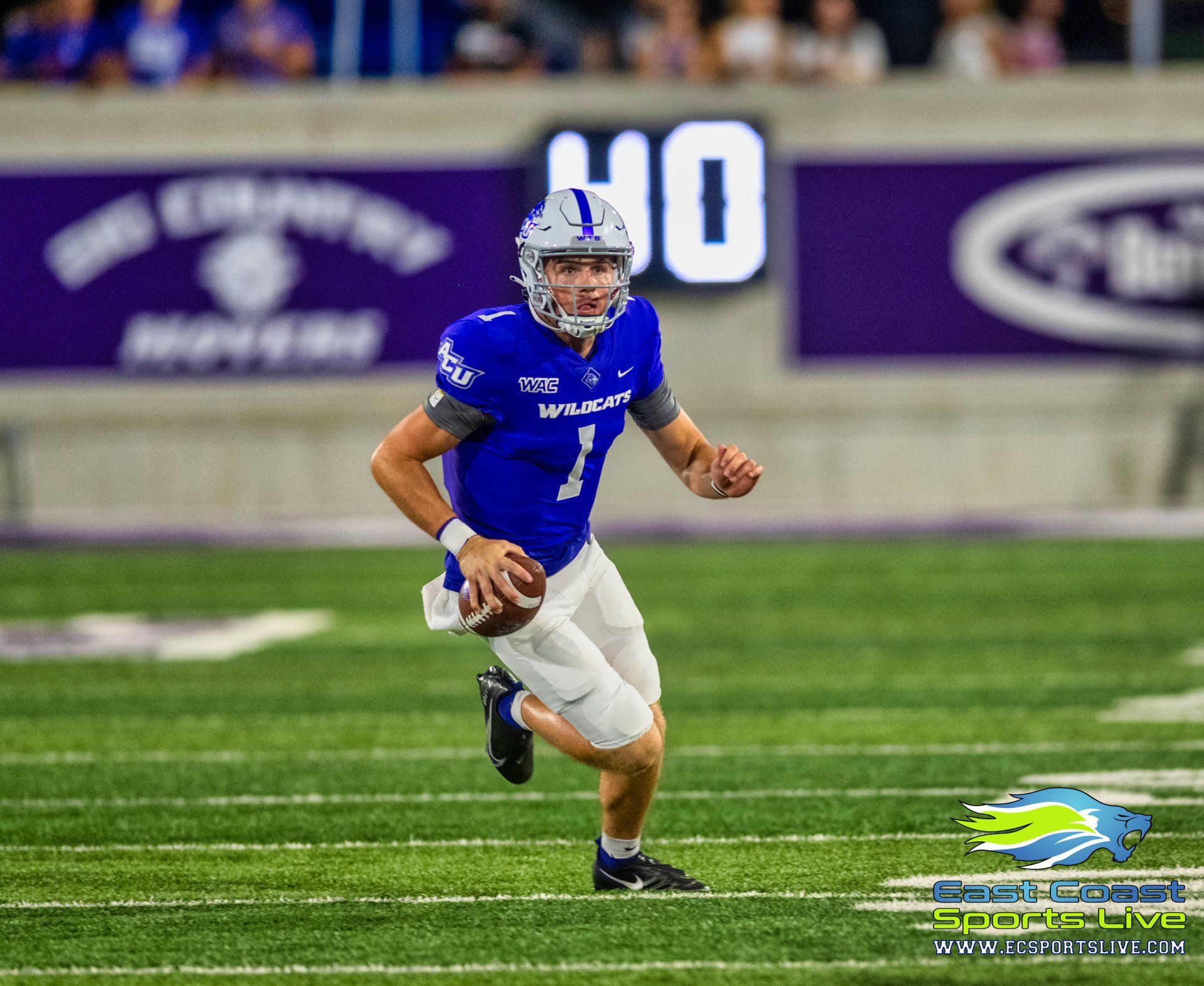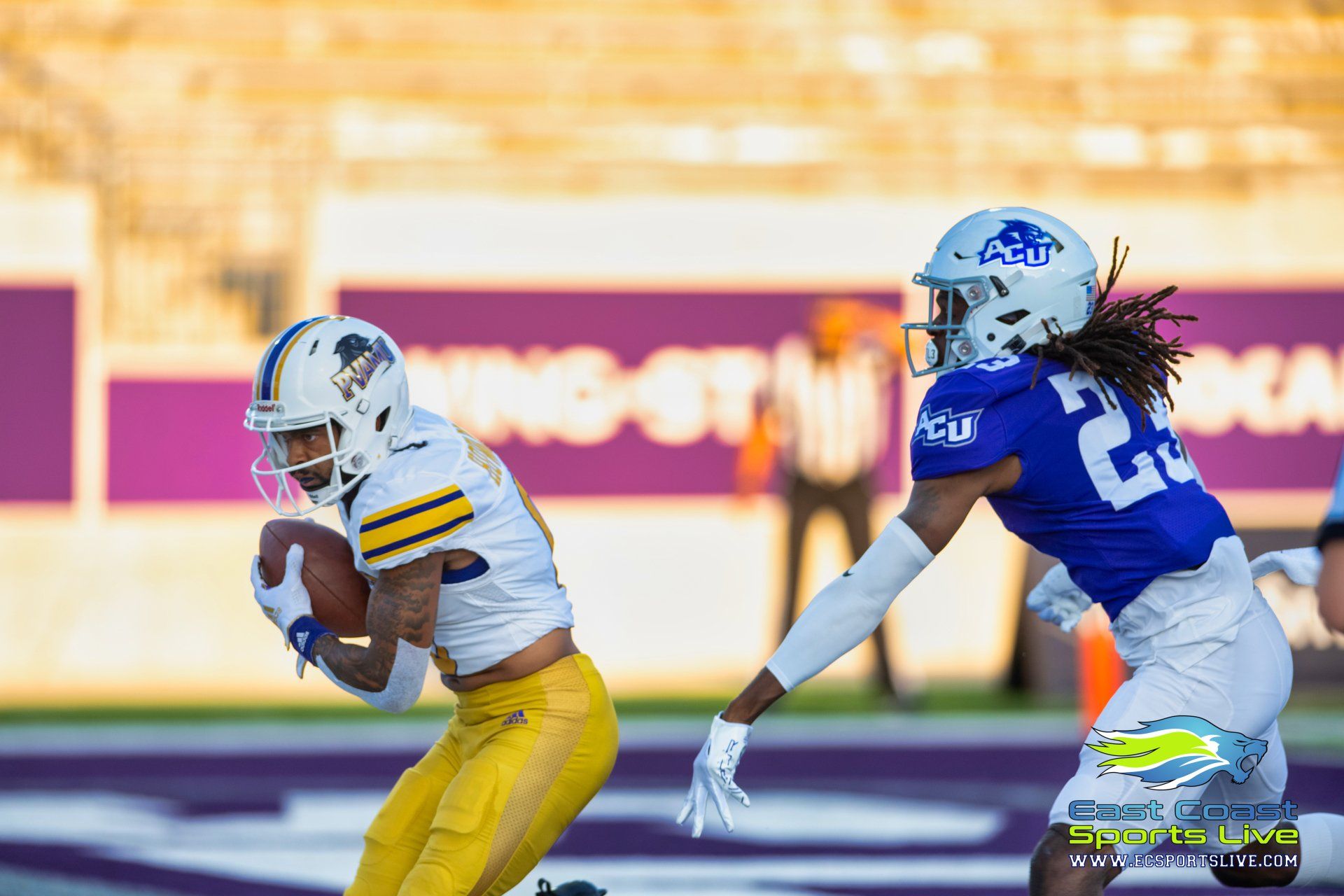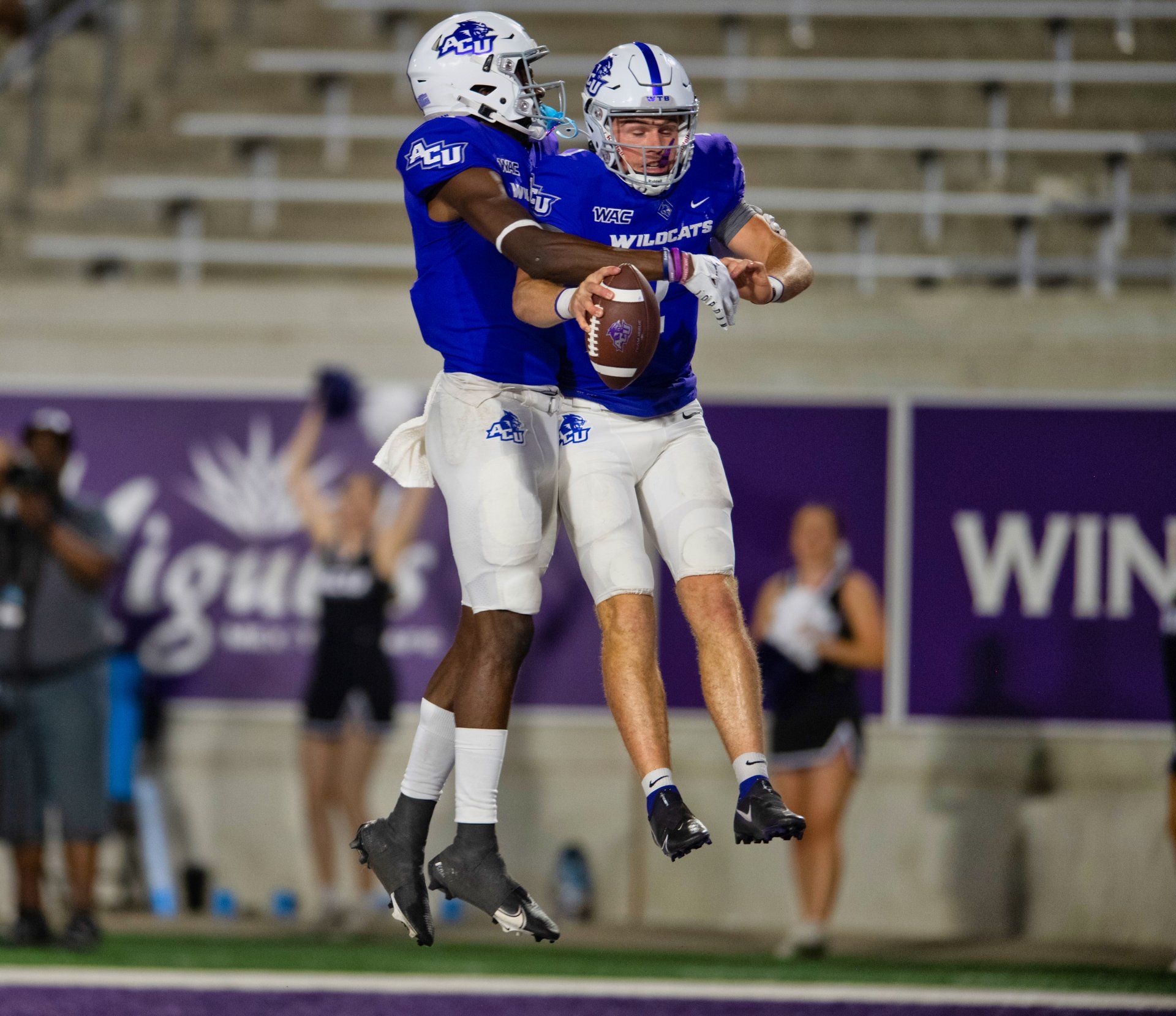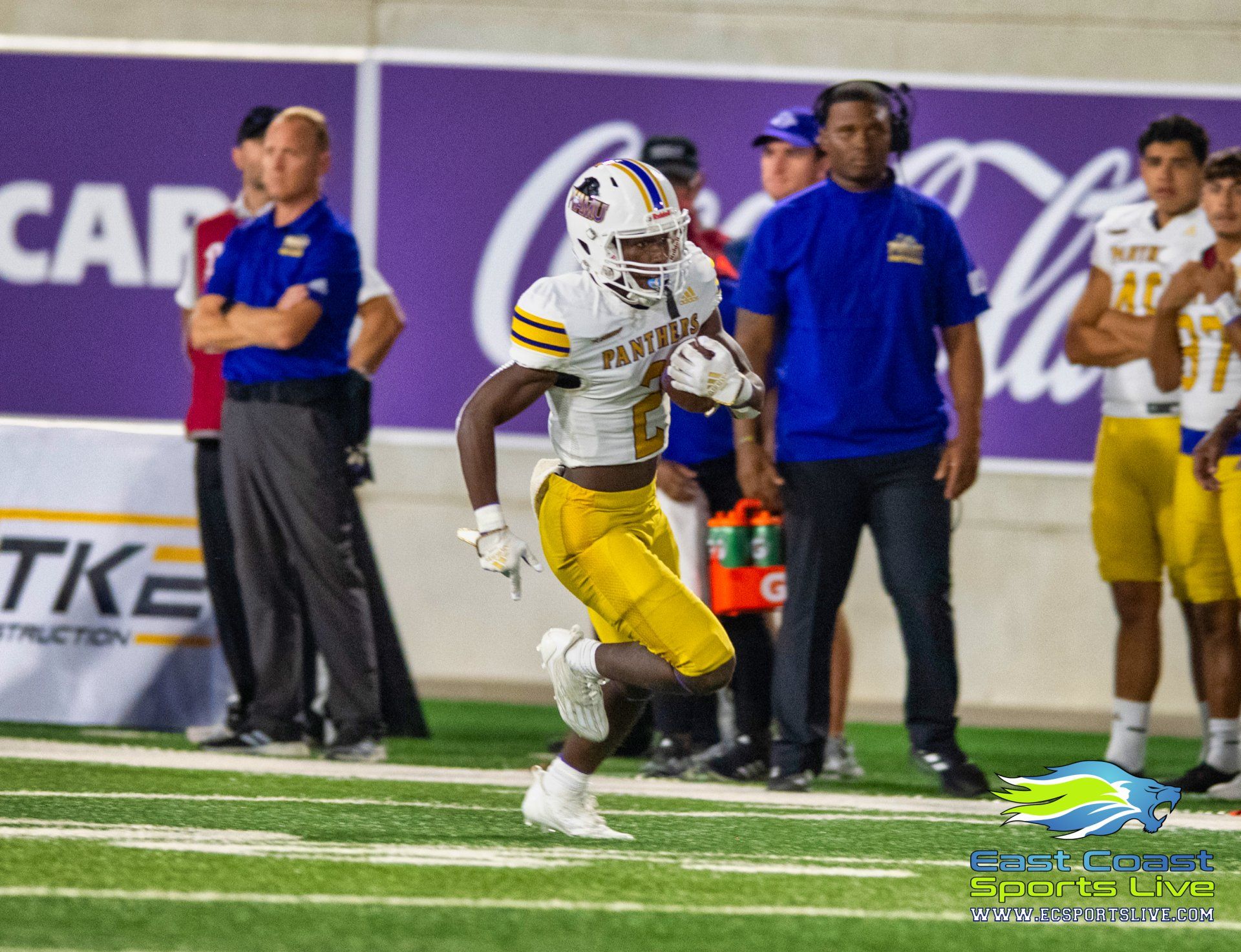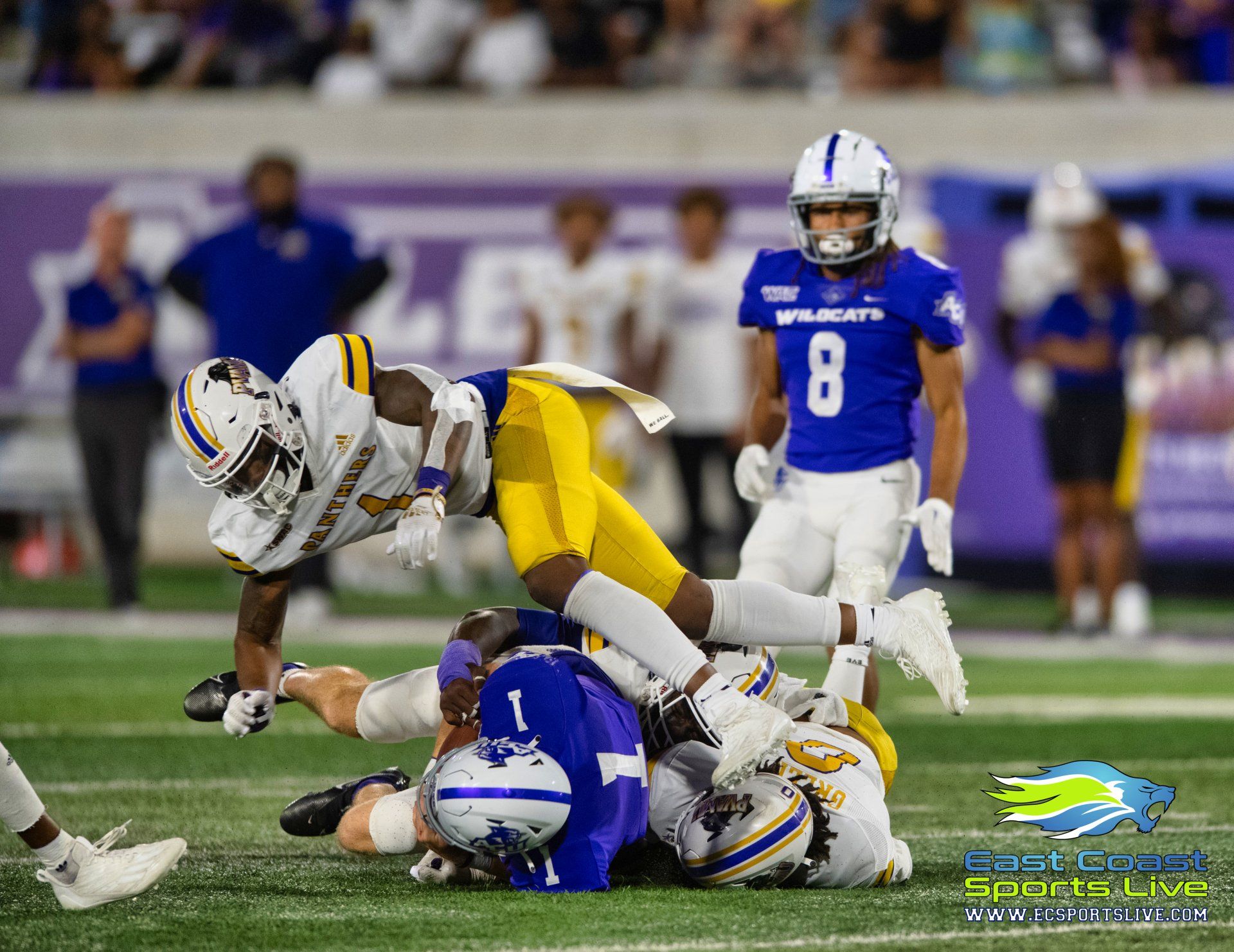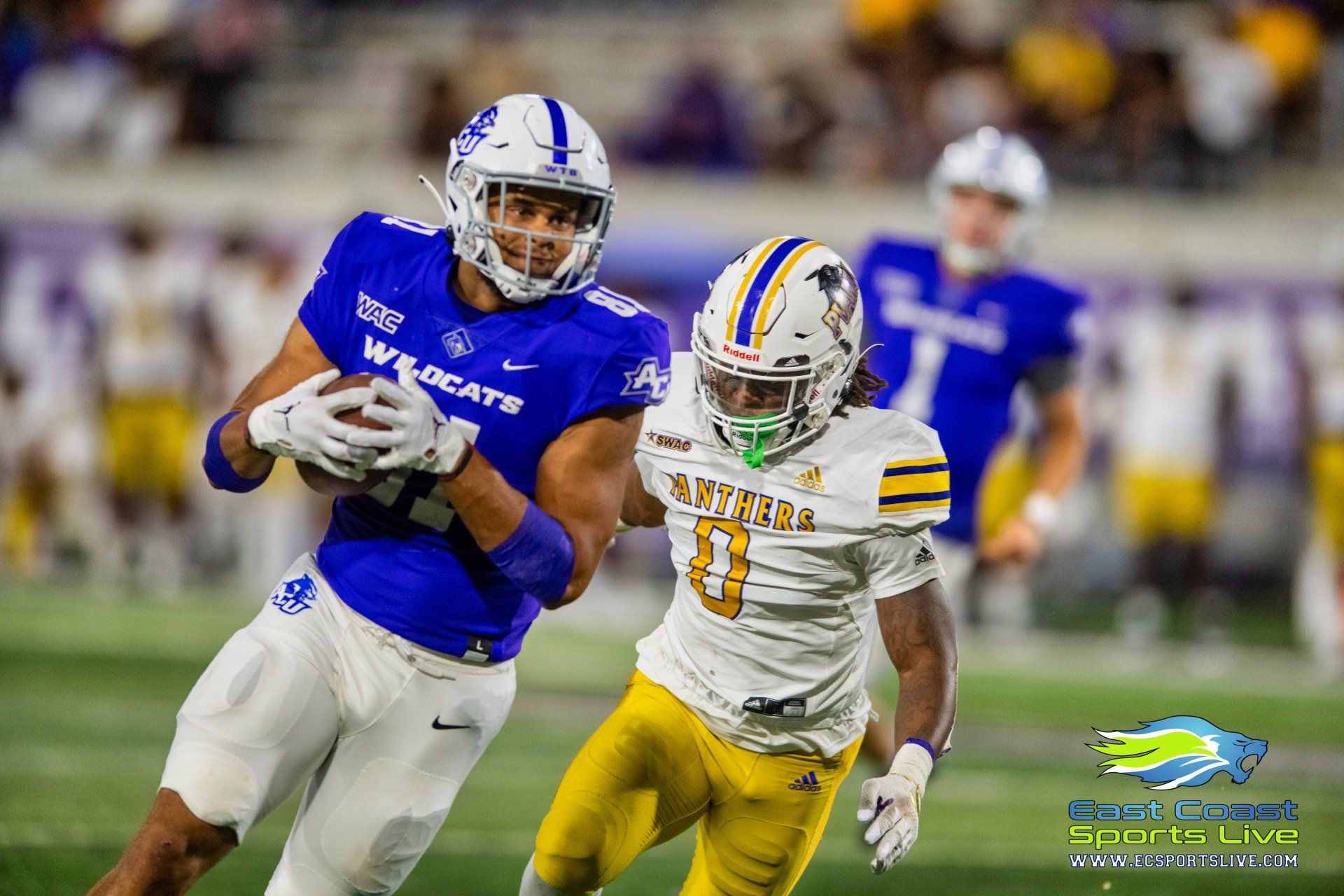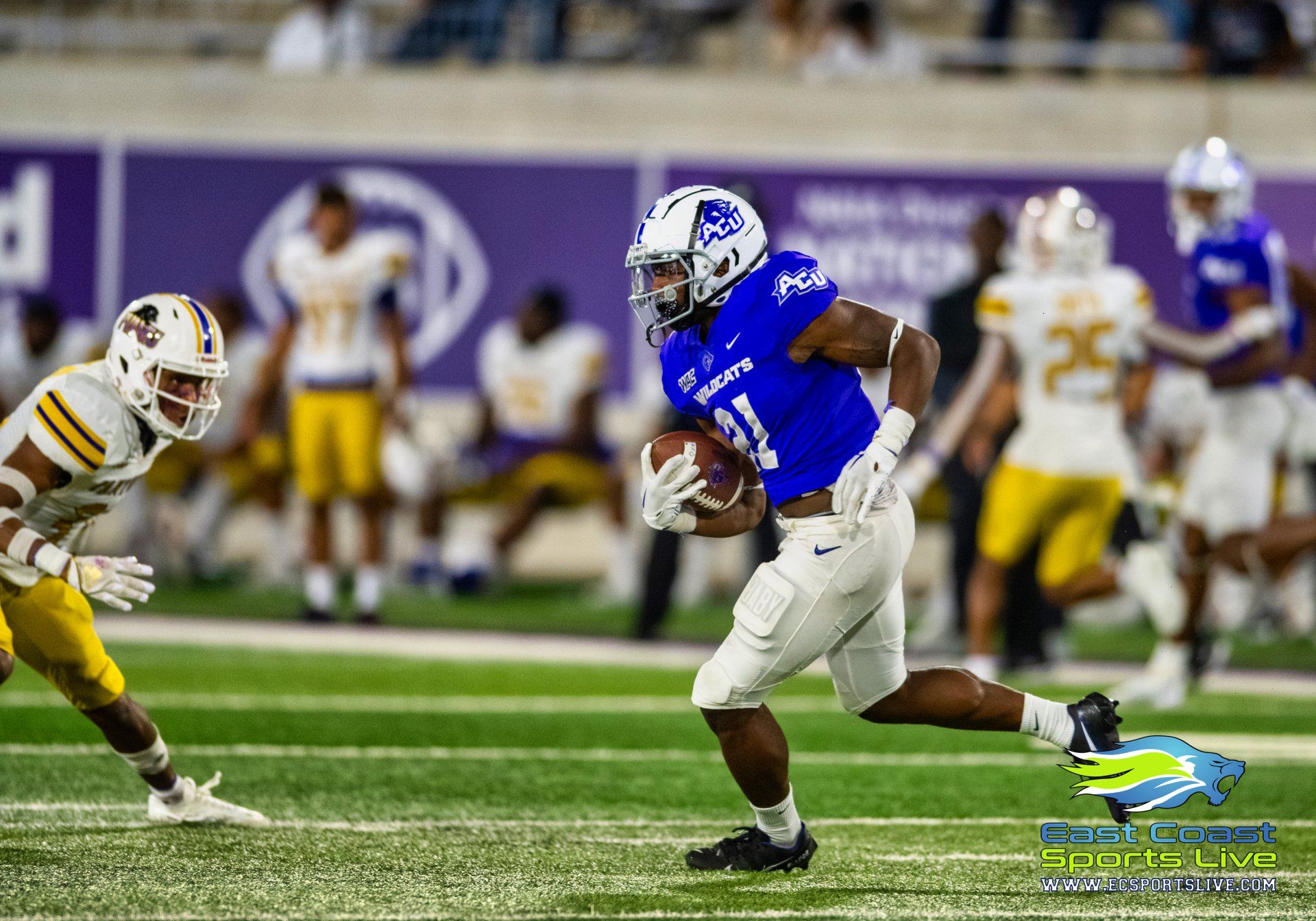East Coast Sports Live
NCAA College Football
College Football News

Offensive Coordinator Mark Carney Named Interim Head Coach for 2025 Season as Program Seeks Fresh Start KENT, OHIO — Kent State University has officially fired head football coach Kenni Burns following a winless 2024 season and a still-undisclosed internal investigation that led to his administrative leave in March. The school announced Friday that offensive coordinator Mark Carney will serve as interim head coach for the 2025 season, as the Golden Flashes begin yet another new chapter in their football program’s long search for stability. Burns, who finishes his Kent State tenure with a 1-23 record over two seasons, was originally brought in to reinvigorate the program after the departure of Sean Lewis in 2022. Instead, his time was marked by on-field failures and recent legal entanglements that cast a shadow over his leadership. The team went 0-12 in 2024, including 0-8 in the Mid-American Conference (MAC), becoming just the fifth Kent State team in program history to finish a season without a single win. A Tenure Marked by Struggles Burns was introduced as Kent State’s 23rd head coach in December 2022 with high hopes. A former associate head coach and running backs coach at Minnesota under P.J. Fleck, he came with a reputation for strong recruiting ties, player development, and a high-energy leadership style. But those qualities failed to translate into results. The Golden Flashes managed just one win — against FCS opponent Central Connecticut State — across 24 games under Burns. The team consistently ranked near the bottom of the FBS in scoring offense, total yards, and defensive metrics. In 2024, they were outscored by an average of over 25 points per game and struggled to remain competitive even within their own conference. Compounding the problem, player development stalled and recruiting momentum faded. Several players transferred out of the program following the 2023 season, leaving Kent State with one of the youngest and least experienced rosters in the MAC. Investigation and Legal Dispute Burns was placed on paid administrative leave on March 27 , just days before the program was set to open spring practice. While the university did not provide public details at the time, it was confirmed that an internal review was underway. The university's Friday statement announcing his dismissal referred only to “personnel matters” and did not clarify whether the investigation concluded with any findings of misconduct. The situation took another turn when it became public that Burns had recently been involved in a civil lawsuit with a northeast Ohio bank over an alleged unpaid debt exceeding $23,000. The lawsuit was eventually dismissed, but speculation swirled over whether this legal entanglement — along with the program's struggles — influenced the university’s decision to part ways. Burns’ legal team issued a public rebuttal, calling the termination "meritless" and suggesting it was retaliatory. Attorney Lee Hutton stated that Burns had met all institutional expectations for team conduct, academics, and culture, and would pursue legal remedies to defend his name and reputation. A source also alleged that Kent State made a buyout offer that Burns rejected before the termination was finalized. Mark Carney Takes Over on Interim Basis In the same announcement, Kent State named Mark Carney , the team’s offensive coordinator, as interim head coach for the 2025 season. Carney, who joined the Golden Flashes in January 2023 as the tight ends and inside receivers coach, was promoted to OC for the 2024 campaign. A college football veteran with over 20 years of coaching experience, Carney has coordinated offenses at multiple levels, including Charlotte , Virginia State , Richmond , and Baldwin Wallace . While the 2024 season’s results were dismal, Carney has earned respect for his football acumen, player communication, and leadership style. Carney’s first task will be guiding the team through spring and fall preparation , as well as helping stabilize recruiting during an uncertain transition. With an unforgiving 2025 schedule — including road trips to Texas Tech, Florida State, and Oklahoma — the new interim head coach faces one of the toughest assignments in college football. Rebuilding the Program The Kent State administration has announced that it will begin a national search for a permanent head coach after the 2025 season. Until then, the focus will be on retaining current players , reinvigorating fan support , and establishing consistency after years of coaching turnover. Burns was Kent State’s third head coach since 2017, a reflection of the instability that has plagued the program over the past decade. Athletic Director Randale Richmond emphasized the school’s commitment to ensuring the best possible experience for student-athletes during this transitional period. “We are focused on restoring the competitive integrity of our football program,” he said in the school’s official press release. Despite the recent downturn, Kent State has shown flashes of potential in recent years, most notably with the 2019 team that finished 7-6 and won the program’s first bowl game in nearly 50 years. The administration hopes that a return to that trajectory is possible under new leadership. What’s Next? The 2025 season opener is set for August 30 against Merrimack, followed by three consecutive road games against Power Five opponents. The MAC schedule will be announced later this spring. For now, all eyes are on Carney and how he navigates the coming months. While labeled as an interim appointment, his leadership during this transition could serve as a proving ground for long-term consideration — depending on results, program morale, and institutional goals.

The Minnesota Golden Gophers extended their bowl game winning streak to eight with a 24-10 victory over the Virginia Tech Hokies in the Duke’s Mayo Bowl at Bank of America Stadium. Behind a balanced offensive attack and standout performances from Elijah Spencer and Darius Taylor, Minnesota finished their season at 8-5, while Virginia Tech concluded their campaign with a 6-7 record. A Promising Start for Virginia Tech Virginia Tech struck first in the contest, showcasing flashes of offensive potential. Senior quarterback Collin Schlee connected with Ayden Greene on a 67-yard pass, the Hokies' longest play of the season. Schlee capped off the drive with a three-yard rushing touchdown, giving Virginia Tech an early 7-0 lead. Special teams also shined for the Hokies. Kicker John Love nailed a record-breaking 60-yard field goal at the end of the first half, setting a new benchmark for the Duke’s Mayo Bowl. Punter Peter Moore added another highlight with a 69-yard punt, the longest in Virginia Tech’s bowl history. Despite these bright spots, Virginia Tech struggled to maintain momentum as Minnesota's defense tightened and their offense took over. Minnesota’s Second-Quarter Explosion After a slow start, Minnesota found their rhythm in the second quarter, scoring 21 unanswered points to take control of the game. Darius Taylor played a pivotal role, first throwing a 10-yard touchdown pass to Elijah Spencer on a halfback option, then scoring himself on a 28-yard run. Quarterback Max Brosmer added to the scoring with a 12-yard touchdown pass to Spencer, who was named the game’s MVP after recording six receptions for 81 yards and two touchdowns. The Gophers’ offensive efficiency and ability to capitalize on Virginia Tech’s defensive lapses proved decisive. Defensive Standouts Minnesota’s defense played a key role in stifling Virginia Tech’s offense. The Gophers allowed only 223 total yards, including a mere 83 passing yards between Schlee and freshman quarterback William Watson. Their pressure forced critical mistakes, including a fourth-quarter interception by Za’Quan Bryan in the end zone that sealed the victory. For Virginia Tech, cornerback Dante Lovett delivered a strong performance with six tackles and an interception, his first of the season. Linebacker Kaleb Spencer led the Hokies with eight tackles, while Wilfried Pene recorded a nine-yard sack, showcasing promise for the program’s future. Key Players and Takeaways Minnesota’s Elijah Spencer was the star of the game, delivering in key moments with his two touchdown receptions. Running back Darius Taylor also shined, rushing for 113 yards and a touchdown while completing a touchdown pass. For Virginia Tech, Ayden Greene stood out with a career-high 115 receiving yards on six catches. However, the Hokies’ inability to capitalize on red-zone opportunities and convert key third and fourth downs hampered their efforts. Virginia Tech’s offense showed glimpses of potential with young players like Greene, Tyler Mason, and Keylen Adams contributing, but inconsistency and inexperience proved costly against a seasoned Minnesota squad. Special Teams Brilliance Despite the loss, Virginia Tech’s special teams provided moments of excitement. John Love’s record-setting 60-yard field goal highlighted the Hokies’ ability to deliver under pressure. Peter Moore’s booming punt further underscored the unit’s impact, providing field position advantages early in the game. Looking Ahead Minnesota capped off their season with another bowl win, solidifying their reputation as one of the nation’s most consistent postseason performers. Head coach P.J. Fleck praised his team’s resilience and ability to execute in high-stakes moments. With a strong foundation and key players returning, the Gophers aim to build on this success heading into the 2025 season. Virginia Tech, despite the loss, showed promise for the future with young talent stepping up in critical moments. Head coach Brent Pry emphasized the importance of building on these performances as the Hokies look to improve in 2025. Addressing offensive inefficiencies and defensive depth will be key focuses during the offseason. A Tale of Two Teams Minnesota’s 24-10 victory highlighted the importance of execution and adaptability in bowl games. For Virginia Tech, the game provided valuable lessons and showcased the potential of a rebuilding program. As both teams move forward, the Duke’s Mayo Bowl served as a fitting conclusion to a season of challenges and growth.

The Ole Miss Rebels capped off a historic season with a dominant 52-20 victory over the Duke Blue Devils in the TaxSlayer Gator Bowl at EverBank Stadium. The win not only marked back-to-back 10-win seasons for the Rebels but also underscored their standing as one of the most formidable teams in college football under head coach Lane Kiffin. A Dominant Offensive Showcase Ole Miss controlled the game from the opening whistle, showcasing a potent offensive attack led by quarterback Jaxson Dart. The senior delivered a career-best performance, throwing for 404 yards and four touchdowns while adding 43 rushing yards. Dart’s dynamic playmaking ability set the tone early and kept Duke’s defense on its heels throughout the game. The Rebels established dominance in the first quarter, scoring two touchdowns to seize control. Ulysses Bentley IV opened the scoring with a powerful run into the end zone, setting the tone for a balanced offensive display. Antwane Wells Jr. added to the lead with an acrobatic touchdown reception, extending Ole Miss’s early advantage. By halftime, the Rebels had built a comfortable 24-7 lead, outgaining the Blue Devils by more than 200 yards. Dart’s connection with wide receiver Jordan Watkins proved unstoppable throughout the game. Watkins finished with seven catches for 180 yards and two touchdowns, including a stunning 69-yard scoring play in the fourth quarter. The chemistry between Dart and Watkins exemplified Ole Miss’s ability to stretch the field and exploit mismatches against Duke’s secondary. Defensive Excellence Shines Defensively, Ole Miss put together one of their strongest performances of the season. The defensive line applied consistent pressure on Duke quarterback Henry Belin IV, forcing hurried throws and mistakes that shifted momentum firmly in favor of the Rebels. Isaiah Hamilton delivered a game-changing play in the third quarter, intercepting a pass and returning it 50 yards for a touchdown. This defensive score extended the Rebels’ lead to 31-7 and effectively dashed any hopes of a Duke comeback. The Rebels’ defensive front consistently disrupted Duke’s offense, holding the Blue Devils to just 44 rushing yards on the night. Ole Miss’s ability to contain Duke’s ground game forced the Blue Devils to become one-dimensional, allowing the Rebels’ secondary to focus on shutting down passing lanes. The defensive effort was complemented by disciplined tackling and timely blitzes that stymied Duke’s offensive rhythm. While Duke struggled to find consistency on offense, the Blue Devils did have moments of brilliance. Henry Belin IV, starting in place of the injured Maalik Murphy, threw for 236 yards and two touchdowns. Sahmir Hagans provided a highlight-reel moment with a 99-yard kickoff return for a touchdown late in the fourth quarter, showcasing his explosiveness. Despite these flashes, Duke’s inability to sustain drives and their defensive lapses ultimately cost them the game. A Historic Milestone and Bright Future For Ole Miss, this victory was not just a testament to their growth under Lane Kiffin but also a milestone in the program’s history. Achieving consecutive 10-win seasons for the first time in more than six decades highlights the program’s upward trajectory. The emergence of players like Jaxson Dart and Jordan Watkins has established Ole Miss as a perennial contender in the SEC. The Rebels’ balanced approach on offense, featuring contributions from both the passing and running games, underscores their versatility. Ulysses Bentley IV complemented Dart’s performance with 70 rushing yards and two touchdowns, while the offensive line provided excellent protection, allowing Dart ample time to make plays. The line’s dominance in the trenches also opened up running lanes, enabling the Rebels to control the tempo of the game. Looking ahead, the Rebels are poised to build on this success as they transition to a new era with Austin Simmons expected to take over at quarterback. With a strong recruiting class and a solid foundation, Ole Miss is well-positioned to remain a force in college football. Duke’s Challenges and Lessons Despite the loss, Duke showed glimpses of potential with young players gaining valuable experience. Henry Belin IV demonstrated poise under pressure, stepping into a challenging role and delivering two touchdown passes. The Blue Devils’ struggles on defense and their inability to maintain drives, however, highlighted areas for improvement. As Duke looks to regroup, the arrival of transfer quarterback Darian Mensah offers hope for an offensive resurgence. Head coach Manny Diaz will also focus on improving defensive consistency and fostering a balanced attack as the Blue Devils aim to rebound in the upcoming season. A Fitting Conclusion The 52-20 victory in the Gator Bowl was a fitting conclusion to a stellar season for Ole Miss. For Jaxson Dart, the game was a crowning achievement, solidifying his legacy as one of the program’s all-time greats. Dart’s leadership and ability to deliver in high-pressure moments have set a standard for future Rebels quarterbacks to follow. Ole Miss’s performance in the Gator Bowl showcased their growth as a program and their ability to compete at the highest level. As the Rebels celebrate their success, they also set their sights on even greater accomplishments in the future, cementing their place as a rising power in college football.

The Louisville Cardinals ended their season on a high note, narrowly defeating the Washington Huskies 35-34 in a thrilling Sun Bowl showdown at Sun Bowl Stadium in El Paso, Texas. Despite a valiant comeback attempt by Washington, Louisville’s defense held strong in the final seconds, denying a two-point conversion to seal the victory. This victory marked Louisville’s first bowl win under head coach Jeff Brohm and capped off a season of resilience and growth for the Cardinals, who finished with a 9-4 record. For Washington, the loss closed out a 6-7 campaign under first-year head coach Jedd Fisch, as the Huskies fell short in their bid for a comeback victory. A Fast Start and a Tight Finish The game began with fireworks as Louisville’s defense set the tone early. On Washington’s opening drive, cornerback Tahveon Nicholson intercepted a pass and returned it 21 yards for a touchdown, giving the Cardinals a 7-0 lead. The Huskies quickly responded with a 40-yard touchdown pass from freshman quarterback Demond Williams Jr. to wide receiver Giles Jackson, tying the game at 7-7. Louisville found its rhythm in the second quarter, with quarterback Harrison Bailey leading the offense. Bailey, who started in place of NFL-bound Tyler Shough, threw two touchdown passes to Caullin Lacy and Antonio Meeks. Meanwhile, Washington’s offense kept pace, with Williams connecting with Jackson for a 49-yard touchdown and rushing for another score, tying the game at 21-21 just before halftime. In the third quarter, Louisville regained control with a 21-yard touchdown pass from Bailey to tight end Nate Kurisky. Lacy added an 8-yard rushing touchdown early in the fourth quarter, extending Louisville’s lead to 35-21. Washington’s Comeback Attempt Down by 14 points, Washington staged a dramatic rally in the game’s final minutes. Williams found Jackson for a 31-yard touchdown with 3:42 remaining, cutting the deficit to 35-28. After forcing a Louisville punt, the Huskies orchestrated a last-minute drive, with Williams throwing a one-yard touchdown pass to Jackson—his fourth of the game—with just nine seconds remaining. Opting to go for the win rather than the tie, Washington attempted a two-point conversion. However, linebacker Antonio Watts broke up Williams’ pass in the end zone, preserving the victory for Louisville and sparking celebrations on the Cardinals’ sideline. Standout Performances Harrison Bailey shone in his first start of the season, completing 16 of 25 passes for 164 yards and three touchdowns. His composure and accuracy earned him Sun Bowl MVP honors, as he became the first Louisville quarterback to throw three touchdown passes in a bowl game since Teddy Bridgewater in 2013. Caullin Lacy was a dual-threat weapon for the Cardinals, recording a receiving touchdown and a rushing score in his first game since October. Louisville’s running back duo of Isaac Brown and Duke Watson combined for 182 rushing yards, providing balance to the Cardinals’ offense. For Washington, Demond Williams Jr. delivered an outstanding performance, throwing for 374 yards and four touchdowns while rushing for an additional score. Giles Jackson set a Sun Bowl record with four receiving touchdowns on 11 catches for 161 yards, showcasing his playmaking ability despite the loss. Louisville’s defense played a pivotal role in the victory, recording five sacks and 10 tackles for loss. Defensive tackle Jordan Guerad earned Defensive MVP honors with six tackles, including two for loss and a sack. Key Moments The game was defined by crucial plays on both sides of the ball. Nicholson’s pick-six in the first quarter set the tone for Louisville, while Washington’s inability to capitalize on early opportunities allowed the Cardinals to maintain control. The two-point conversion attempt in the final seconds epitomized the drama of the Sun Bowl. Williams’ decision to target Jackson, who had been unstoppable all game, was well-defended by Louisville’s secondary, with Watts making the game-saving play. Historical Context The Sun Bowl marked the first-ever meeting between Louisville and Washington, as well as Louisville’s first trip to the Sun Bowl since 1958. The victory extended Louisville’s bowl win streak to three games and highlighted the program’s resilience in the face of adversity. Washington, on the other hand, faced challenges throughout the season, including an 0-7 record away from home. Despite a strong offensive showing, the Huskies struggled defensively, allowing 371 yards to a shorthanded Louisville squad. Looking Ahead Louisville enters the offseason with momentum, having finished the year on a three-game winning streak. With key contributors like Harrison Bailey and Isaac Brown returning, the Cardinals are poised for continued success under Brohm’s leadership. Their 2025 season opener against Eastern Kentucky offers an opportunity to build on this season’s progress. Washington faces questions as they prepare for Fisch’s second season. The Huskies must address defensive inconsistencies and build around young talents like Williams and Jackson. Their opener against Colorado State will provide a chance to reset and start fresh. A Game to Remember Louisville’s 35-34 victory over Washington in the Sun Bowl showcased the intensity and unpredictability that make college football so captivating. From record-breaking performances to a dramatic final play, the game delivered excitement and highlighted the determination of both teams. For Louisville, the win serves as a testament to their resilience and a foundation for future success. For Washington, the loss is a reminder of the fine margins in football and the importance of finishing strong.

The UConn Huskies ended their season in style, defeating the North Carolina Tar Heels 27-14 in the Wasabi Fenway Bowl on Saturday. Playing at historic Fenway Park, the Huskies secured their first bowl victory since 2010, showcasing a dominant performance in all phases of the game. First-Half Domination The game began with UConn asserting its dominance on the ground. On the opening play from scrimmage, Mel Brown broke free for a 47-yard run, setting the tone for the Huskies’ offense. UConn capped the drive with a 32-yard field goal from Chris Freeman, taking an early 3-0 lead. The Huskies extended their lead to 10-0 later in the first quarter when quarterback Joe Fagnano connected with Skyler Bell on a 38-yard touchdown pass. Bell’s route and Fagnano’s precise throw highlighted UConn’s explosive potential in the passing game. North Carolina responded with a 95-yard kickoff return for a touchdown by Chris Culliver, bringing the score to 10-7. However, that was the extent of the Tar Heels’ success in the first half. UConn’s defense clamped down, forcing three-and-outs on North Carolina’s next two possessions and limiting them to just 45 yards of total offense in the half. The Huskies added two more touchdowns in the second quarter. Fagnano found Alex Honig in the back of the end zone for a four-yard score to cap off an 11-play, 79-yard drive. Later, Cam Edwards powered through the defense for a two-yard touchdown run, extending UConn’s lead to 24-7 just before halftime. Defensive Excellence UConn’s defense delivered one of its best performances of the season. Linebacker Tui Faumuina-Brown’s first-half interception ended a rare North Carolina scoring opportunity, while Pryce Yates led the defensive front with six tackles, including three for a loss and a sack. The Huskies held the Tar Heels to just 206 total yards, marking the lowest offensive output for North Carolina in a bowl game since 1998. The Tar Heels were also unable to convert any of their nine third-down attempts, underscoring UConn’s defensive dominance. Second-Half Control In the third quarter, the Huskies relied on their rushing attack to control the clock and maintain their lead. Freeman added a 24-yard field goal to make it 27-7, as UConn continued to dictate the game’s tempo. North Carolina managed to find some offensive rhythm in the fourth quarter with a wildcat formation. Running back Caleb Hood lined up under center and threw a 17-yard touchdown pass to John Copenhaver, cutting the deficit to 27-14. Despite the late push, the Tar Heels were unable to mount a significant comeback, as UConn’s defense forced a turnover on downs to seal the victory. Key Performances Joe Fagnano was named the game’s Offensive MVP, finishing 16-of-23 for 151 yards and two touchdowns. His leadership and efficiency in the passing game were crucial to UConn’s success. Mel Brown led the rushing attack with 96 yards on 13 carries, while Edwards added 74 yards and a touchdown. On the defensive side, Pryce Yates earned Defensive MVP honors for his disruptive presence in the backfield. His ability to pressure the quarterback and stop the run was instrumental in shutting down North Carolina’s offense. For the Tar Heels, Chris Culliver’s kickoff return provided an early spark, but the team struggled to sustain momentum. Backup quarterback Michael Merdinger, making his collegiate debut, completed 9-of-12 passes for 86 yards with one interception. A Season to Remember With the victory, UConn finished the season 9-4, marking their best campaign since 2007. Head coach Jim Mora, who signed a two-year contract extension before the game, has revitalized the program, leading the Huskies to consistent improvement in his tenure. North Carolina’s season ended on a disappointing note with a 6-7 record. The team struggled with injuries, the transfer portal, and the absence of key players like star running back Omarion Hampton, who opted out of the bowl game to prepare for the NFL Draft. Looking Ahead UConn’s bowl victory signals a bright future for the program. With a strong core of returning players and a commitment to building on this season’s success, the Huskies are poised to contend for more bowl appearances in the coming years. For North Carolina, incoming head coach Bill Belichick faces a significant rebuilding project. The Tar Heels’ lack of depth and consistency this season underscores the challenges ahead as the legendary NFL coach transitions to the college game. A Historic Day at Fenway The Wasabi Fenway Bowl provided a unique backdrop for an unforgettable game. From the modified field setup to the spirited fan atmosphere, the event was a celebration of college football’s charm and unpredictability. For UConn, the 27-14 victory over North Carolina was not just a bowl win—it was a statement. The Huskies’ performance demonstrated their growth and potential as they continue their rise in the college football landscape.

The East Carolina Pirates closed their season with a dramatic 26-21 victory over the NC State Wolfpack in the Military Bowl at Navy-Marine Corps Memorial Stadium on Saturday. Running back Rahjai Harris delivered the game-winning moment, an 86-yard touchdown run with just over 90 seconds left to play, sealing a comeback victory for the Pirates in a game marred by a chaotic postgame brawl. The Pirates, finishing their season at 8-5, continued their remarkable late-season resurgence, winning five of their final six games under newly promoted head coach Blake Harrell. For NC State, the loss marked their fifth consecutive bowl defeat, concluding their campaign with a 6-7 record. A Game of Momentum Shifts The game began with ECU setting the tone early. Quarterback Katin Houser orchestrated a 10-play, 65-yard drive capped by a 19-yard touchdown run, giving the Pirates a 7-0 lead. After a defensive stop, ECU added a field goal to extend the advantage to 10-0. NC State responded in the second quarter as quarterback CJ Bailey found Dacari Collins for an 8-yard touchdown, cutting ECU’s lead to 13-7 at halftime. The Wolfpack’s defense then stepped up, forcing a rare punt from ECU and holding them to a missed field goal attempt in the third quarter. ECU regained control early in the third when Houser’s 4-yard rushing touchdown extended the lead to 20-7. However, NC State refused to fold, with Bailey engineering a 15-yard touchdown pass to Justin Joly and later a trick-play touchdown featuring Hollywood Smothers, bringing the Wolfpack ahead 21-20. Rahjai Harris Delivers the Winning Blow Trailing late in the fourth quarter, ECU’s hopes rested on Harris. After two incomplete passes left the Pirates facing a third-and-10 at their own 14-yard line, the junior running back broke loose for the game-winning 86-yard touchdown run. Harris, who finished with 220 rushing yards on 17 carries, was named Military Bowl MVP for his dominant performance. Harris’ run, the longest play of ECU’s season, showcased his ability to make clutch plays when it mattered most. His contributions were instrumental in ECU’s success throughout the season, and his bowl performance added to his legacy as one of the most productive running backs in program history. Defensive Heroics and Chaotic Ending With the game still within reach, NC State attempted one final drive. The Wolfpack advanced to ECU’s 38-yard line, but Bailey’s pass tipped off the hands of Smothers and was intercepted by Dontavius Nash, sealing the victory for the Pirates. Unfortunately, the game’s thrilling finish was overshadowed by a brawl that broke out in the final moments. A scuffle during ECU’s attempt to run out the clock escalated into a full-scale melee, resulting in eight player ejections—three from ECU and five from NC State. The incident marred an otherwise memorable contest and highlighted the intensity of the rivalry between the two in-state foes, who are scheduled to meet again to open the 2025 season. Key Performances Rahjai Harris was the undeniable star of the game, rushing for a career-high 220 yards and a touchdown on just 17 carries. His performance not only secured the win but also solidified his place in ECU history as the second-leading rusher in program history with over 3,000 career yards. Katin Houser provided steady leadership for the Pirates, completing 18 of 29 passes for 147 yards while adding 84 rushing yards and two touchdowns. His ability to execute in critical moments helped ECU maintain its offensive rhythm. For NC State, CJ Bailey showcased his potential as a freshman, throwing for 230 yards and three touchdowns. Despite the loss, Bailey’s composure and playmaking ability offer promise for the Wolfpack’s future. Hollywood Smothers added versatility to NC State’s attack, contributing 99 all-purpose yards and a touchdown. A Tale of Two Seasons The victory capped a remarkable turnaround for ECU, who started the season 3-4 but surged under Blake Harrell’s leadership. The team’s resilience and commitment to playing as a unit were evident in their ability to finish games strong, highlighted by Harris’ late-game heroics. For NC State, the loss highlighted missed opportunities, particularly in the red zone. The Wolfpack’s inability to capitalize on early scoring chances, combined with a conservative approach late in the game, ultimately cost them a chance at victory. Looking Ahead East Carolina enters the offseason with momentum and a sense of optimism. With Harrell at the helm and key players like Harris returning, the Pirates are poised to build on this season’s success. Their 2025 opener against NC State will undoubtedly carry added intrigue, given the rivalry’s heightened intensity following this year’s Military Bowl. NC State faces questions heading into the offseason, particularly on the defensive side of the ball. Despite the emergence of young talent like Bailey, the Wolfpack will need to address inconsistencies and maintain discipline to improve their fortunes next season. A Memorable Finish The 26-21 victory in the Military Bowl encapsulated everything that makes college football thrilling: dramatic plays, intense rivalries, and unforgettable moments. For ECU, the win is a testament to their resilience and ability to rise to the occasion. For NC State, it’s a lesson in capitalizing on opportunities and maintaining composure in high-stakes situations.

In one of the most exciting games of the bowl season, No. 18 Iowa State capped off its best season in school history with a dramatic 42-41 comeback win over No. 15 Miami in the Pop-Tarts Bowl at Camping World Stadium in Orlando. The victory secured an 11-3 record for the Cyclones, marking the first time in the program’s 133-year history that they achieved 11 wins in a season. Early Offensive Explosion The game began with a frenetic pace, as both teams traded touchdowns on their first four drives. Miami quarterback Cam Ward showcased his passing prowess in the first half, throwing for 190 yards and three touchdowns, including a 40-yard strike to Joshisa Trader and a 33-yard connection with Elijah Arroyo. Damien Martinez added to Miami’s offensive fireworks with a 75-yard rushing touchdown, finishing the game with a career-high 179 rushing yards. Iowa State responded with equal firepower. Rocco Becht, the Cyclones’ quarterback and eventual Pop-Tarts Bowl MVP, threw three first-half touchdown passes, including a 9-yard strike to Gabe Burkle and a 13-yard pass to Carson Hansen. Hansen, who set a school record with three touchdowns in the game, also rushed for two scores, including a 30-yard sprint that marked the longest rushing touchdown in Cyclone bowl history. The first half ended with Miami holding a 31-28 lead, following an Andres Borregales 30-yard field goal as time expired. The teams combined for 59 points and 625 total yards in a half defined by offensive fireworks and minimal defensive resistance. Second-Half Adjustments Miami extended its lead to 38-28 early in the third quarter with a 71-yard touchdown drive capped by a one-yard rush from Mark Fletcher Jr. However, the Hurricanes’ offense stalled in the latter stages of the game, managing only three points on their final three drives. Iowa State began its comeback late in the third quarter. Becht connected with Jaylin Noel for a four-yard touchdown pass, cutting the deficit to 38-35. Noel finished the game with eight catches for 117 yards, moving to second on Iowa State’s all-time receptions list with 245. The Cyclone defense tightened in the fourth quarter, forcing Miami into a field goal that extended the Hurricanes’ lead to 41-35. Jontez Williams and Ta’Shawn James led the defensive effort with eight tackles each, helping to limit Miami to just 64 total yards in the final 22 minutes. Game-Winning Drive With under six minutes remaining, Iowa State mounted its most critical drive of the season. Becht orchestrated a 15-play, 84-yard march down the field, converting on third and fourth downs to keep the drive alive. The key moments included an 11-yard scramble by Becht on third-and-6 and a 29-yard pass to Noel on third-and-1. On fourth-and-goal from the two-yard line, Becht called his own number and dove into the end zone to give Iowa State its first lead of the second half with 56 seconds remaining. Miami had one final chance to respond, but Cyclones linebacker Drew Surges intercepted Emory Williams’ pass on the game’s final play, sealing the victory and sparking celebrations on the Iowa State sideline. Key Performances Rocco Becht delivered one of the finest performances of his young career, throwing for 270 yards and three touchdowns while rushing for the game-winning score. His poise and leadership were instrumental in Iowa State’s ability to rally from a 10-point second-half deficit. Carson Hansen’s versatility was on full display, as he rushed for 82 yards and two touchdowns while adding a receiving score. His three total touchdowns set an Iowa State bowl record. Miami’s Cam Ward dazzled in the first half, breaking multiple school records, including most passing touchdowns in a single season. He ended his collegiate career with 158 passing touchdowns, surpassing Case Keenum’s Division I record. Damien Martinez was a standout for the Hurricanes, showcasing his explosive playmaking ability with 179 rushing yards and a long touchdown run. Historical Significance The victory was Iowa State’s third bowl win under head coach Matt Campbell, who also set a school record with 13 wins against ranked teams during his tenure. The Cyclones’ 42 points marked their highest total in a bowl game, and the win solidified their place among the top teams in the Big 12. For Miami, the loss extended their bowl drought to six games and marked the end of a season that began with promise but ended in disappointment. The Hurricanes finished with a 10-3 record after starting the season 9-0 and briefly entering the College Football Playoff conversation. Looking Ahead Iowa State will open the 2025 season in Dublin, Ireland, with a matchup against Kansas State. With Becht returning and a strong foundation in place, the Cyclones aim to build on their historic season and contend for a Big 12 title. Miami faces a pivotal offseason as they seek to address defensive inconsistencies and maintain offensive production under head coach Mario Cristobal. The Hurricanes will begin their 2025 campaign at home against Notre Dame, aiming to rebound from their bowl loss and build on their 10-win season. A Game for the Ages The Pop-Tarts Bowl will be remembered as one of the most thrilling games of the season, showcasing the resilience and determination of both teams. For Iowa State, the 42-41 victory represents a milestone in program history and a testament to their growth under Matt Campbell. For Miami, it serves as a reminder of the challenges that remain and the potential for future success.

The Nebraska Cornhuskers capped off their season with a hard-fought 20-15 victory over the Boston College Eagles in the Pinstripe Bowl on Saturday afternoon at Yankee Stadium. The victory marked Nebraska’s first bowl win since 2015 and served as a fitting conclusion to a season of resurgence under head coach Matt Rhule. For Boston College, the loss highlighted missed opportunities and a failure to capitalize in critical moments. The game was played in rainy conditions, which contributed to early offensive struggles for both teams. Nebraska and Boston College each had trouble maintaining possession and executing plays as turnovers, missed field goals, and penalties dominated much of the first quarter. The Cornhuskers’ resilience and defensive prowess ultimately made the difference, giving them their first winning season since 2016. Early Struggles and Momentum Shifts The first quarter set the tone for a defensive battle, with both teams failing to capitalize on early scoring opportunities. Nebraska quarterback Dylan Raiola threw an interception on the Cornhuskers’ opening drive, giving Boston College favorable field position. However, the Eagles missed a field goal, leaving the game scoreless. Nebraska broke the deadlock early in the second quarter with a methodical drive powered by its ground game. Rahmir Johnson opened the scoring with a four-yard touchdown run after a series of well-executed plays by the offensive line. The Cornhuskers’ ability to control the tempo on the ground allowed them to build momentum and take a 7-0 lead. The Cornhuskers extended their lead later in the second quarter when Kwinten Ives punched in a two-yard touchdown run following a 22-yard burst by Johnson. Nebraska appeared to be in control, but Boston College found a way to stay within striking distance. A blocked extra point, which was returned for two points by the Eagles, cut the deficit to 13-2 heading into halftime. Nebraska Extends Its Lead The third quarter saw Nebraska capitalize on Boston College’s mistakes to take further control of the game. A critical turnover forced by linebacker John Bullock gave the Cornhuskers excellent field position, and Raiola connected with Emmett Johnson on a fourth-and-3 play for a 13-yard touchdown. This gave Nebraska a 20-2 advantage and seemingly put the game out of reach. Defensively, the Cornhuskers were relentless. They consistently pressured Boston College quarterback Grayson James, forcing hurried throws and sacks. Elijah Jeudy’s recovery of Bullock’s forced fumble was one of several key defensive plays that kept Boston College off balance. Nebraska’s secondary also played a pivotal role, breaking up multiple passes and limiting Boston College’s ability to generate big plays downfield. Boston College’s Late Push Despite facing an 18-point deficit, Boston College mounted a spirited fourth-quarter rally. Turbo Richard scored on a one-yard touchdown run to bring the score to 20-8. Moments later, the Eagles’ special teams delivered a big play, blocking a Nebraska punt and setting up Jordan McDonald for a two-yard rushing touchdown. This sequence brought Boston College within five points at 20-15 with just over six minutes left to play. The Eagles appeared poised to complete the comeback, but Nebraska’s defense held strong in the game’s final moments. The Cornhuskers forced Boston College to burn their remaining timeouts and converted a critical fourth down to secure the victory. Standout Performances Dylan Raiola demonstrated poise and efficiency, completing 23 of 31 passes for 228 yards and a touchdown. His ability to distribute the ball to 10 different receivers highlighted Nebraska’s offensive depth. Rahmir Johnson, who rushed for 60 yards and a touchdown, was a key contributor in his final game as a Cornhusker. His performance earned him MVP honors. On the defensive side, John Bullock and Vincent Shavers Jr. led Nebraska’s effort. Bullock’s sack and forced fumble in the third quarter were pivotal, while Shavers consistently disrupted Boston College’s backfield with timely tackles. Elijah Jeudy’s fumble recovery was another critical play that helped the Cornhuskers maintain their lead. Grayson James, Boston College’s quarterback, threw for 296 yards but struggled under pressure, taking three sacks and losing a fumble. Kyle Williams provided a bright spot for the Eagles, leading all receivers with 79 yards. Despite their efforts, Boston College’s offense faltered in key moments, failing to convert any of their nine third-down attempts. A Season of Progress Nebraska’s Pinstripe Bowl victory was a significant milestone for a program seeking to regain its footing after years of struggles. Under Matt Rhule, the Cornhuskers achieved their first winning season in seven years and showed marked improvement on both sides of the ball. Rhule’s emphasis on discipline and execution was evident throughout the game, particularly in the team’s ability to capitalize on turnovers and control the clock. For Boston College, the loss highlighted areas for improvement. The Eagles finished the season with a 7-6 record, but their struggles in the red zone and on third downs were recurring issues. Head coach Jeff Hafley will need to address these shortcomings as the team prepares for the next season. Looking Ahead Nebraska’s bowl victory provides a strong foundation for the future. With a promising recruiting class and the continued development of young talent, the Cornhuskers are well-positioned to build on this season’s success. The team opens the 2025 campaign against Cincinnati, where they will look to carry their momentum into the new season. For Boston College, the offseason will be a time for reflection and growth. The Eagles’ inability to execute in key situations cost them in several games this season, including the Pinstripe Bowl. Their opener against Fordham will provide an opportunity to reset and work on establishing consistency. A Hard-Fought Triumph Nebraska’s 20-15 victory over Boston College in the Pinstripe Bowl was a testament to resilience and progress. The Cornhuskers’ strong defensive performance and timely offensive plays secured a long-awaited bowl win and set the stage for a brighter future. For Boston College, the game was a missed opportunity, but it also showcased the potential of their young roster. As both programs look ahead, the lessons learned from this matchup will undoubtedly shape their paths forward.

The No. 22 Syracuse Orange concluded their season with a resounding 52-35 victory over Washington State in the Holiday Bowl on Friday night at Snapdragon Stadium in San Diego. Quarterback Kyle McCord led the Orange with a record-breaking performance, throwing for 453 yards and five touchdowns to break the Atlantic Coast Conference single-season passing yards record. Syracuse’s explosive offense and a resilient defensive effort propelled the team to its first 10-win season since 2018, capping off an impressive debut season for head coach Fran Brown. Early Fireworks The game started with a fast-paced first quarter that saw both teams trading touchdowns. Washington State opened the scoring with a four-yard rushing touchdown by quarterback Zevi Eckhaus, showcasing his versatility despite limited regular-season action. Syracuse responded with two consecutive scoring drives, highlighted by McCord’s pinpoint passes to Oronde Gadsden II and Darrell Gill Jr. Washington State struck back when Eckhaus connected with Kyle Williams for a 66-yard touchdown, tying the game at 14-14. Moments later, a blocked Syracuse punt was recovered and returned for a touchdown by Josh Meredith, giving the Cougars a 21-14 lead late in the first quarter. Syracuse Takes Control Syracuse regained momentum in the second quarter with a dominant offensive display. McCord threw two touchdown passes to Gadsden and orchestrated a methodical drive capped off by a two-yard rushing score from LeQuint Allen. The Orange defense tightened its grip, forcing a critical interception by Alijah Clark, which set up another Syracuse touchdown before halftime. By the break, Syracuse had taken a commanding 35-21 lead, leaving Washington State searching for answers. A Record-Breaking Performance McCord’s historic outing was the centerpiece of Syracuse’s victory. Breaking Deshaun Watson’s ACC single-season passing record, McCord finished the season with 4,779 passing yards and 34 touchdowns. In the Holiday Bowl, he connected with four different receivers for touchdowns, showcasing his ability to spread the ball across the field. Darrell Gill Jr. emerged as McCord’s top target, finishing with 145 yards on four receptions, including a 50-yard over-the-shoulder grab that broke the ACC record. Jackson Meeks added 110 receiving yards, while Trebor Pena and Gadsden combined for four touchdown catches. Washington State’s Grit Despite being shorthanded due to the transfer portal and coaching changes, Washington State played with determination. Zevi Eckhaus, filling in as the starting quarterback, threw for 363 yards and three touchdowns while adding a rushing score. Kyle Williams was the standout for the Cougars, recording 172 receiving yards and breaking the Holiday Bowl record set by Dez Bryant in 2008. His 66-yard touchdown in the first quarter electrified the crowd and kept Washington State in contention early. The Cougars’ defense struggled to contain Syracuse’s high-powered offense, allowing 568 total yards. However, their special teams made a significant impact, with Leon Neal Jr.’s blocked punt and Meredith’s touchdown recovery providing a highlight moment for Washington State fans. Second-Half Highlights Washington State narrowed the deficit early in the third quarter with a 42-yard touchdown pass from Eckhaus to Carlos Hernandez, cutting Syracuse’s lead to 35-28. Syracuse quickly responded, with McCord finding Pena for a 45-yard touchdown that re-established a two-score lead. LeQuint Allen sealed the victory with his second rushing touchdown late in the fourth quarter. Allen’s performance included 120 rushing yards, complementing McCord’s aerial attack and providing balance to the Syracuse offense. A Season to Remember The Holiday Bowl victory marked a triumphant end to a milestone season for Syracuse. Under Fran Brown’s leadership, the Orange achieved their first double-digit win season in six years and set multiple individual and team records. McCord’s dominance as the national passing leader, combined with contributions from a talented receiving corps and a reliable run game, defined Syracuse’s success. For Washington State, the game served as a testament to their resilience. Despite missing key players and coaches, the Cougars displayed grit and showcased the potential of their younger players, including Eckhaus, who proved his capability to lead the offense in challenging circumstances. Looking Ahead Syracuse opens the 2025 season with a high-profile matchup against Tennessee at Mercedes-Benz Stadium in Atlanta. With the potential return of McCord pending his eligibility appeal, the Orange aim to build on their success and contend for another strong season. Washington State faces a rebuilding process as they search for a new head coach and work to stabilize their roster amid transfer portal losses. Their 2025 campaign begins with a rivalry game against Idaho, offering an opportunity to reset and regroup. A Historic Bowl Victory Syracuse’s 52-35 win over Washington State in the Holiday Bowl will be remembered as a showcase of offensive firepower and resilience. McCord’s record-setting performance and the team’s overall execution highlighted their growth throughout the season. As both programs look ahead, the Holiday Bowl stands as a celebration of the unpredictability and excitement that defines college football.

The Vanderbilt Commodores capped off their season with a thrilling 35-27 victory over the Georgia Tech Yellow Jackets in the Birmingham Bowl on Friday night. This win marked Vanderbilt's first bowl victory since 2013 and showcased an impressive five-touchdown performance from quarterback Diego Pavia, who was named the game MVP. A Historic Win The victory is a significant milestone for Vanderbilt, which ended the season with a 7-6 record under head coach Clark Lea. The Commodores demonstrated resilience, bouncing back from a 2-10 campaign just a year ago to secure their first winning season in over a decade. For Georgia Tech, the loss was a bittersweet conclusion to an otherwise promising season. The Yellow Jackets finished 7-6 under first-year head coach Brent Key, who revitalized the program’s offense and brought newfound energy to Atlanta. Despite the setback, the Yellow Jackets showed flashes of brilliance that signal a bright future for the program. First-Half Highlights The first quarter saw Vanderbilt strike first with a 13-play, 81-yard drive capped off by a Diego Pavia jump pass to Cole Spence for a touchdown. The methodical drive showcased Vanderbilt’s ability to mix the run and pass effectively, keeping Georgia Tech’s defense on its heels. Georgia Tech responded in the second quarter with a 15-play, 75-yard drive, as Haynes King connected with Ryland Goede for a 10-yard touchdown, tying the game at 7-7. The Yellow Jackets’ offensive line played a key role, providing King with ample time to find his targets downfield. Late in the first half, the Commodores reclaimed the lead when Pavia orchestrated another methodical drive, culminating in a 2-yard rushing touchdown to make it 14-7. Georgia Tech answered with a 43-yard field goal just before halftime, cutting the deficit to 14-10 and giving the Yellow Jackets some momentum heading into the locker room. Vanderbilt’s Second-Half Surge The second half began with Georgia Tech narrowing Vanderbilt’s lead to 14-13 after another field goal. However, the Commodores took control with a series of explosive plays. Pavia connected with Eli Stowers for a 6-yard touchdown to extend the lead to 21-13. Stowers’ athleticism was on full display as he hauled in the pass despite tight coverage. A critical moment came late in the third quarter when Vanderbilt’s CJ Taylor intercepted Haynes King, returning the ball to the Georgia Tech 11-yard line. Pavia capitalized on the turnover with another touchdown, finding Quincy Skinner Jr. in the back corner of the end zone to increase the lead to 28-13. The Commodores’ defense continued to dominate, forcing a turnover on downs on Georgia Tech’s next possession to maintain their advantage. Georgia Tech’s Late Rally Despite trailing by 15 points, Georgia Tech refused to back down. Jamal Haynes scored a late nine-yard touchdown to cut the lead to 28-20. The Yellow Jackets followed up with another well-executed drive, capped off by Bailey Stockton’s two-yard touchdown reception with just over a minute remaining, bringing the score to 35-27. Georgia Tech’s special teams executed a near-perfect onside kick, but Vanderbilt’s alert hands team recovered the ball, sealing the victory. The Yellow Jackets’ rally showcased their never-quit attitude, but the Commodores’ ability to close out games proved decisive. Key Performances Diego Pavia was the star of the game, accounting for five total touchdowns—three passing and two rushing—while throwing for 160 yards and rushing for 84 yards. His leadership and playmaking ability were instrumental in Vanderbilt’s victory, as he repeatedly made key plays under pressure. For Georgia Tech, Haynes King completed 25 of 33 passes for 204 yards and three touchdowns. Running back Jamal Haynes also had a standout performance, rushing for 136 yards and adding a touchdown reception. Despite the loss, their efforts kept Georgia Tech competitive throughout the game. Vanderbilt’s defense, led by CJ Taylor and Aeneas DiCosmo, forced two critical turnovers that shifted the game’s momentum. Taylor’s interception late in the third quarter was particularly pivotal, setting up a touchdown that gave Vanderbilt a two-score cushion. Dominance in Key Areas Vanderbilt’s ability to convert in the red zone proved to be a difference-maker. The Commodores scored touchdowns on all five trips inside the 20-yard line, showcasing their efficiency in high-pressure situations. The Commodores also excelled in time of possession, controlling the ball for nearly 34 minutes. This allowed their defense to stay fresh and limited Georgia Tech’s opportunities to mount sustained drives. Looking Ahead The victory provides a strong foundation for Vanderbilt as they look to build on this season’s success. With Diego Pavia announcing his plans to return for another year, the Commodores have a solid core to continue their upward trajectory. Head coach Clark Lea has emphasized the importance of consistency and depth as the team transitions into the offseason. For Georgia Tech, the loss highlighted areas for improvement, particularly in limiting penalties and turnovers. The Yellow Jackets will look to regroup during the offseason and return stronger for the next campaign. Brent Key’s focus will likely include enhancing the offensive line and bolstering the defensive secondary to better compete in ACC play. A Season to Remember Vanderbilt’s 35-27 win over Georgia Tech in the Birmingham Bowl not only secured their first bowl victory in 11 years but also signaled the program’s resurgence under Clark Lea. The Commodores’ grit and determination throughout the season reflect the culture of resilience Lea has instilled. For Georgia Tech, the game served as a learning experience for a program on the rise. Despite the setback, the Yellow Jackets showed promise and resilience, setting the stage for what could be an exciting 2025 season. As both teams look ahead, this game stands as a testament to the competitiveness and unpredictability of college football.

The Toledo Rockets emerged victorious in a thrilling, record-breaking six-overtime showdown against the Pittsburgh Panthers at the GameAbove Sports Bowl in Detroit on Thursday night. The 48-46 victory marked the longest bowl game in NCAA history and featured standout performances from both teams in a back-and-forth battle at Ford Field. Early Drama and Momentum Shifts The game began with Toledo seizing the momentum on their opening drive, as quarterback Tucker Gleason connected with Junior Vandeross III for a 67-yard touchdown. However, Pittsburgh responded with defensive resilience, blocking the extra point and returning it for a two-point conversion—the Panthers’ first defensive score of this kind since 1990. Both teams exchanged blows throughout the first half, with Pitt taking a 12-6 lead after a 57-yard field goal by Ben Sauls and a three-yard touchdown run by Desmond Reid. Toledo answered with a 42-yard pick-six from Braden Awls, giving the Rockets a 20-12 lead at halftime. Second-Half Resurgence The Panthers turned to freshman quarterback Julian Dugger after early struggles from starter David Lynch. Dugger provided a spark, leading Pitt to two touchdowns and a field goal to build a 30-20 lead midway through the second half. However, Toledo’s defense stepped up once again, with Darius Alexander returning an interception 58 yards for a touchdown to pull the Rockets within three points. With 1:45 remaining, Toledo’s kicker drilled a game-tying field goal, sending the game into overtime at 30-30. Overtime Marathon The overtime periods featured relentless determination from both teams. Gleason and Dugger traded rushing touchdowns in the first overtime and field goals in the second, keeping the score tied. In the third and fourth overtimes, both quarterbacks delivered critical two-point conversion passes to maintain the deadlock. Toledo appeared to win the game twice during the fourth overtime—first on a sack and then on a defensive stop at the goal line—but penalties and replay reviews kept the Panthers alive. In the fifth overtime, Dugger found Gavin Bartholomew in the end zone for a score, but Gleason responded with his fifth touchdown pass of the game to Junior Vandeross III, setting up a decisive sixth overtime. In the final period, Gleason put Toledo ahead with a two-point conversion pass, and the Rockets’ defense pressured Dugger into a game-ending incompletion. Key Performances Tucker Gleason’s heroics defined Toledo’s victory. The quarterback accounted for five touchdowns—four passing and one rushing—and displayed remarkable composure under pressure. Junior Vandeross III emerged as his favorite target, hauling in multiple clutch receptions, including two critical scores. For Pittsburgh, Julian Dugger impressed in his collegiate debut, contributing four total touchdowns (two passing, two rushing). Despite the loss, his poise and playmaking ability provided a glimpse of his potential as a future leader for the Panthers. Defensively, both teams had standout moments. Toledo’s Darius Alexander recorded a crucial pick-six, while Pitt’s Francis Brewu consistently disrupted the Rockets’ offense with multiple tackles for loss. Historic Significance This game marked the first six-overtime bowl game in NCAA history, surpassing the previous record set just two days earlier in the Hawai’i Bowl. It was also Pittsburgh’s longest game ever, eclipsing a four-overtime win against Notre Dame in 2008. The NCAA’s recent overtime rule changes, which require teams to attempt two-point conversions starting in the third overtime, ensured the game’s thrilling conclusion. A Season of Contrasts Toledo’s victory capped a remarkable season, highlighted by their resilience in close games. The Rockets finished with an impressive 11-3 record and demonstrated their ability to thrive in high-pressure situations. For Pittsburgh, the game symbolized a season of highs and lows. After starting 7-0, the Panthers ended the year on a six-game losing streak, becoming just the second FBS team to suffer such a fate. Missing their starting quarterback Eli Holstein and backup Nate Yarnell, Pitt’s reliance on inexperienced players ultimately proved too much to overcome. Looking Ahead Toledo’s bowl win solidifies their position as one of the premier programs in the Mid-American Conference, setting the stage for continued success in future seasons. Pittsburgh will look to regroup in the offseason, focusing on developing their young talent and addressing the inconsistencies that plagued the latter half of their campaign. A Game for the Ages The GameAbove Sports Bowl will be remembered as one of the most thrilling and unpredictable contests in college football history. Toledo’s 48-46 victory over Pittsburgh showcased the drama, excitement, and resilience that define bowl season, leaving fans and players alike with memories that will last a lifetime.

The Texas Longhorns advanced to the College Football Playoff quarterfinals with a decisive 38-24 victory over the Clemson Tigers at Darrell K. Royal-Texas Memorial Stadium. The Longhorns relied on a dominant rushing attack and timely defensive plays to secure their 12th win of the season and punch their ticket to the Fiesta Bowl, where they will face Arizona State. A Strong First Half for Texas Clemson struck first with a 7-yard touchdown pass, capitalizing on their opening drive with a 70-yard march. Texas, however, responded immediately with a 12-play drive capped by Quintrevion Wisner’s 3-yard touchdown run. The Longhorns took control in the second quarter, scoring three unanswered touchdowns. Jaydon Blue’s explosive 38-yard run ignited the offense, followed by another Wisner rushing touchdown to extend the lead. Tight end Gunnar Helm added a receiving touchdown, putting Texas ahead 28-10 at halftime. The Longhorns’ efficiency and balance were evident, as quarterback Quinn Ewers completed his first eight passes while the rushing attack consistently moved the chains. Defensively, Texas stifled Clemson’s running game early, holding the Tigers to just 40 rushing yards in the first half. The Longhorns’ ability to control the line of scrimmage set the tone, forcing Clemson to rely heavily on quarterback Cade Klubnik to generate offense. Clemson’s Second-Half Push Clemson regrouped after halftime, narrowing the deficit with a 25-yard touchdown reception by running back Jarvis Green. The Tigers’ defense forced a key stop, leading to another touchdown drive that brought them within seven points early in the fourth quarter. The Tigers showcased improved adjustments in the third quarter, utilizing short passes and quick plays to counter Texas’s aggressive defensive front. Klubnik’s connection with wide receiver T.J. Moore was particularly effective, as Moore consistently found openings in the Texas secondary to move the chains. Despite Clemson’s momentum, Texas delivered the game’s defining play on the next possession. Blue broke free for a 77-yard touchdown run, silencing the Tigers’ rally and restoring Texas’s two-score lead. Clemson’s subsequent drive stalled near midfield, as the Longhorns’ defense held firm to preserve the victory. Key Performances Lead the Way Texas showcased its offensive depth, led by Jaydon Blue and Quintrevion Wisner. Blue totaled 146 rushing yards and two touchdowns, including the game-clinching run. Wisner contributed 110 yards on the ground and two scores, solidifying his impact in critical moments. Ewers managed the game with efficiency, finishing with 202 passing yards and a touchdown on 13-of-18 completions. The Longhorns’ offensive line dominated in the trenches, paving the way for a 255-yard rushing performance. Defensively, Texas made crucial plays to preserve their lead. Colin Simmons’s interception in the first quarter set the tone, while linemen Bill Norton and Barryn Sorrell combined for pivotal stops in the fourth quarter. Safety Michael Taaffe added key pass breakups, ensuring Clemson’s passing game couldn’t take over late. Clemson Falls Short Cade Klubnik led Clemson’s offense with 336 passing yards and three touchdowns, connecting with T.J. Moore for a team-high 116 receiving yards. However, Clemson’s ground game struggled, finishing with just 80 rushing yards. The Tigers’ inability to convert key opportunities, including a goal-line stand by Texas in the fourth quarter, hindered their comeback efforts. Defensive lapses also allowed Texas to maintain control, particularly during the Longhorns’ explosive second quarter. Clemson’s offense lacked balance, forcing Klubnik to shoulder the load against a well-prepared Texas defense. Turning Points The game’s decisive moments included Texas’s defensive stand early in the fourth quarter, stopping Clemson on the 1-yard line to maintain a seven-point lead. Blue’s 77-yard touchdown run on the subsequent drive sealed the victory, highlighting Texas’s ability to execute in critical situations. Additionally, Clemson’s inability to capitalize on two red-zone opportunities in the second half proved costly. Both drives ended with turnovers on downs, allowing Texas to maintain control and extend their lead. Looking Ahead Texas will face No. 4 Arizona State in the Fiesta Bowl, marking their first appearance in the College Football Playoff semifinals. The Longhorns enter the matchup with momentum, showcasing a balanced offense and a defense capable of making big plays under pressure. Head coach Steve Sarkisian emphasized the importance of preparation as they aim to secure their first national championship berth since the 2009 season. For Clemson, the season ends with lessons learned and optimism for the future. With young talent stepping up in key moments, the Tigers will aim to build on their ACC Championship and return stronger next year. The development of Klubnik and the emergence of T.J. Moore highlight Clemson’s potential heading into the 2025 season. A Statement Win Texas’s 38-24 victory over Clemson demonstrated their growth and readiness to compete on college football’s biggest stage. The Longhorns’ performance highlighted their ability to dominate both offensively and defensively, setting the tone for their next challenge in the Fiesta Bowl. As the College Football Playoff continues, Texas’s balance and resilience position them as a formidable contender for the national title. Clemson, meanwhile, leaves with valuable experience, laying the groundwork for future success in the ACC and beyond.

The SMU Mustangs’ historic season came to a disappointing close Saturday with a 38-10 loss to No. 6 Penn State in the first round of the College Football Playoff at Beaver Stadium. Despite a promising start to their first-ever playoff appearance, the Mustangs fell victim to two first-half pick-sixes and a suffocating Penn State defense, finishing their season at 11-3. For Penn State, the victory marked a strong response to their Big Ten Championship loss to Oregon and propelled them to the CFP quarterfinals, where they will face Boise State in the Fiesta Bowl on New Year’s Eve. A Promising Start Turns Sour SMU entered the game with high hopes after a remarkable first season in the ACC, where they went undefeated in conference play and earned their spot in the CFP as the No. 11 seed. The Mustangs appeared poised to score early, driving deep into Penn State territory on their opening possession. However, a missed throw from quarterback Kevin Jennings to a wide-open Matthew Hibner at the goal line resulted in a turnover on downs. Penn State capitalized on the momentum shift, with linebacker Dominic DeLuca intercepting Jennings on the next drive and returning it 23 yards for a touchdown. Early in the second quarter, Tony Rojas added another pick-six, weaving 59 yards through SMU defenders to give the Nittany Lions a commanding 14-0 lead. Penn State’s Defense Takes Over The Nittany Lions’ defense lived up to its billing as one of the best in the nation, holding SMU to season lows in both points (10) and total yardage (253). The Mustangs, who had averaged 38.5 points per game during the season, struggled to find any offensive rhythm. Jennings, whose stellar play fueled SMU’s ACC title game appearance, endured one of the toughest games of his career. The sophomore finished with 195 passing yards on 20-of-36 attempts, including three interceptions and a late touchdown pass. Mistakes and missed opportunities plagued SMU throughout the game, from dropped passes to poorly executed throws under pressure. Penn State’s Balanced Attack While the Nittany Lions’ defense dominated, their offense methodically extended the lead. Running backs Kaytron Allen and Nick Singleton combined for three touchdowns, including Allen’s 25-yard burst and Singleton’s powerful 1-yard plunge late in the first half. Quarterback Drew Allar, playing in freezing conditions, managed the game effectively, completing 13 of 22 passes for 127 yards. Penn State entered halftime with a 28-0 lead, and the game was effectively over. SMU’s struggles on both sides of the ball left them unable to mount a comeback, unlike their rally in the ACC Championship against Clemson. SMU’s Struggles Continue Despite flashes of brilliance during the regular season, Saturday’s loss highlighted areas for improvement as SMU transitions into the offseason. The Mustangs’ inability to execute in high-pressure moments and Jennings’ turnovers were key factors in the defeat. SMU also struggled to protect their quarterback, with Penn State recording three sacks and consistent pressure throughout the game. The loss ended an otherwise groundbreaking season for SMU, which included an undefeated regular-season conference run, their first ACC Championship appearance, and a CFP berth. Head coach Rhett Lashlee expressed pride in his team’s accomplishments but acknowledged the challenges they faced against Penn State. A Bright Future for SMU Despite the sour ending, SMU’s debut in the ACC and first playoff appearance represent a significant step forward for the program. The Mustangs have shown they can compete at the highest level, and their 11-win season sets the foundation for continued success. With key players like Jennings, wide receiver Jordan Hudson, and running back Brashard Smith expected to return, SMU has the talent to build on this year’s achievements. The team’s upcoming schedule, featuring marquee matchups against Miami, Clemson, and Louisville, will provide further opportunities to solidify their standing in the ACC and national rankings. Moving Forward Penn State advances to the Fiesta Bowl with a chance to secure their first 13-win season in program history. The Nittany Lions, who have never lost in the Fiesta Bowl, will face No. 3 Boise State in a high-stakes quarterfinal. As for SMU, the offseason will be an opportunity to regroup and address the shortcomings exposed in their playoff loss. With a strong recruiting class and returning talent, the Mustangs aim to prove that their 2024 campaign was just the beginning of their rise in college football. A Season to Remember SMU’s 38-10 loss to Penn State was a humbling end to a historic season, but it does not overshadow the program’s remarkable achievements. The Mustangs’ ACC debut, playoff berth, and national recognition mark a turning point for a team on the rise. As SMU looks to the future, their 2024 season serves as both a milestone and a launching pad for even greater aspirations. While the loss stings, the foundation laid this year ensures that the Mustangs will remain a force to be reckoned with in college football.

The UNLV Rebels capped off an impressive season with a 24-13 victory over the California Golden Bears in the Art of Sports LA Bowl at SoFi Stadium. The win gave No. 24 UNLV their first-ever bowl victory, improving their record to 10-3 and solidifying their place as one of the top teams in the Mountain West Conference. For Cal, the loss ended their season at 6-7, denying the program its first winning season since 2019. A Tale of Two Halves Cal started the game strong, taking a 3-0 lead on a 43-yard field goal by Derek Morris after a 48-yard run by Jaydn Ott set up excellent field position. UNLV quickly responded with a 49-yard touchdown pass from Hajj-Malik Williams to freshman receiver Kayden McGee, giving the Rebels a 7-3 lead late in the first quarter. The Golden Bears answered with a trick play of their own. Freshman wide receiver Josiah Martin scored his first collegiate touchdown on a 29-yard reverse, capping a nine-play, 89-yard drive to reclaim the lead at 10-7. UNLV then executed a daring fake punt, setting up a nine-yard touchdown reception by Jacob DeJesus to close out the first half with a 14-13 lead. UNLV Pulls Away in the Second Half The second half was all UNLV, as the Rebels’ defense clamped down on Cal’s offense. A costly turnover by Cal freshman quarterback EJ Caminong, playing in place of injured starter CJ Harris, led directly to a 23-yard touchdown run by Kylin James. This pivotal play extended UNLV’s lead to 21-13 midway through the third quarter. UNLV added a 48-yard field goal in the fourth quarter, securing the 24-13 win. Cal struggled offensively in the second half, totaling just 72 yards and failing to score. The Golden Bears’ promising first half was undone by turnovers, penalties, and an inability to sustain drives. Key Performances UNLV quarterback Hajj-Malik Williams showcased his dual-threat abilities, throwing for 67 yards and a touchdown while adding 18 yards on the ground. Wide receiver Ricky White III, named Mountain West Special Teams Player of the Year, made his presence felt with several key plays. For Cal, running back Jaydn Ott was the standout, rushing for a season-high 84 yards, including a 48-yard burst in the first quarter. Tight end Jack Endries was the top target in the passing game, finishing with seven receptions for 61 yards. Josiah Martin had a breakout performance, scoring his first career touchdown and recording four catches for 40 yards. Defensive Stalwarts UNLV’s defense proved to be the difference, forcing two turnovers and limiting Cal to just 13 points despite several opportunities in Rebels’ territory. Jackson Woodard led the defense with his all-around contributions, adding to his Mountain West Defensive Player of the Year accolades. Cal’s defense kept the game within reach for much of the contest, with strong performances from linebackers Hunter Barth and Teddye Buchanan. However, the Bears were unable to contain UNLV’s explosive plays, particularly on special teams. A Disappointing End for Cal Cal’s loss marked the end of a turbulent season that saw glimpses of promise but ultimately fell short of expectations. The team’s quarterback situation, with Fernando Mendoza entering the transfer portal, left the Bears shorthanded in their most important game of the year. CJ Harris’ injury in the third quarter only compounded the challenge, forcing Caminong into action in his collegiate debut. Despite the loss, Cal celebrated several individual milestones, including senior punter Lachlan Wilson setting a school record for career punting average (44.9 yards). The team also honored its 22 seniors, many of whom played their final game in Berkeley colors. Looking Ahead UNLV’s victory in the LA Bowl marks a historic milestone for the program, securing their first-ever 10-win season. With a strong foundation under interim coach Del Alexander, the Rebels will look to carry their momentum into next season. For Cal, the focus shifts to rebuilding. Head coach Justin Wilcox faces the challenge of stabilizing the quarterback position and addressing the team’s offensive inconsistencies. The program will also look to capitalize on incoming transfers and recruits as it seeks to return to winning form in 2025. A Memorable Finish The Art of Sports LA Bowl showcased the resilience and talent of both programs. For UNLV, it was a night of celebration and firsts, while for Cal, it was a reminder of the challenges and opportunities that lie ahead. As the curtain closes on the 2024 season, both teams leave SoFi Stadium with lessons learned and goals to achieve.

The latest AP Top 25 rankings have sparked discussions across the college football landscape as teams vie for positioning heading into the postseason. With significant movement in the rankings following another action-packed weekend, the race for the College Football Playoff is intensifying. Here’s a detailed look at the updated standings and what they mean for the top teams in the nation. AP Top 25 Rankings (Week of December 10, 2024) Georgia (13-0) Michigan (13-0) Washington (13-0) Florida State (13-0) Texas (12-1) Alabama (12-1) Oregon (11-2) Ohio State (11-1) Missouri (10-2) Penn State (10-2) Ole Miss (10-2) Louisville (11-2) Oklahoma (10-2) Arizona (10-3) LSU (9-3) Notre Dame (9-3) Iowa (10-3) Tennessee (9-3) Kansas State (9-3) Oregon State (9-3) Utah (8-4) Tulane (11-2) North Carolina (9-4) Liberty (13-0) James Madison (12-1) Top Teams Hold Their Ground At the top of the rankings, Georgia retained the No. 1 spot, solidifying their dominance with a decisive victory over their SEC rival. The Bulldogs remain unbeaten and are poised to secure the top seed in the College Football Playoff if they continue their winning streak. Their defense has been the cornerstone of their success, allowing them to stifle high-powered offenses week after week. Michigan stayed firm at No. 2, demonstrating their offensive versatility and defensive strength. The Wolverines’ latest win further cemented their reputation as one of the most balanced teams in the country. With the Big Ten Championship looming, Michigan has a chance to strengthen their résumé heading into the playoffs. Rounding out the top three is Washington , whose thrilling victory over a conference rival showcased their explosive offense. Led by a Heisman Trophy contender at quarterback, the Huskies have proven they can compete with the best, making them a legitimate contender for the national title. Major Movement in the Rankings This week’s rankings saw Florida State reclaim their spot in the top five after a dominant performance that left little doubt about their playoff potential. The Seminoles’ ability to adapt to challenges and deliver in high-pressure situations has kept them in the national conversation. Meanwhile, Texas climbed to No. 5 following a statement win over a ranked opponent. The Longhorns’ resurgence this season has been fueled by a high-powered offense and a defense capable of making game-changing plays. They remain in contention for a playoff spot with one of the strongest schedules in the country. Teams on the Rise Alabama and Oregon continued their ascent in the rankings, with both teams delivering impressive wins over conference opponents. Alabama’s resurgence in the second half of the season has been marked by disciplined play and a knack for clutch performances, while Oregon’s dynamic offense has been virtually unstoppable. Louisville also made a notable jump, moving into the top 10 after securing a hard-fought victory. The Cardinals have been one of the most consistent teams in the ACC, positioning themselves as a dark horse for a New Year’s Six bowl game. Notable Drops Several teams experienced significant falls in the rankings this week. Ohio State , after their recent loss, dropped out of the top four but remained in the playoff hunt. The Buckeyes’ defense, which had been a strength all season, faltered at critical moments, leaving them with little margin for error in the weeks ahead. Missouri and Oklahoma also slipped in the rankings after disappointing losses, raising questions about their ability to compete against top-tier opponents. For these teams, the focus now shifts to finishing the season strong and securing favorable bowl matchups. Looking Ahead As the season enters its final stretch, the stakes couldn’t be higher for teams in the top 25. Conference championships and rivalry games will play a pivotal role in determining the playoff field, with teams like Georgia, Michigan, and Washington looking to maintain their positions at the top. For teams on the fringe of the playoff picture, such as Texas, Alabama, and Oregon, the path forward is clear: win convincingly and hope for chaos above them. With so much at stake, the coming weeks promise to deliver thrilling matchups and dramatic shifts in the rankings. A Season to Remember The 2024 college football season has been nothing short of spectacular, with standout performances, unexpected upsets, and intense competition shaping the AP Top 25 each week. As fans eagerly anticipate the playoffs, the latest rankings provide a snapshot of the excitement and unpredictability that define this sport. Whether your team is in the hunt for a championship or fighting for bowl eligibility, there’s no denying the passion and drama that make college football special.

The Clemson Tigers claimed their ninth ACC Championship title in a thrilling 34-31 victory over SMU, capped by a record-breaking 56-yard field goal from freshman kicker Nolan Hauser as time expired. The win, which took place at Bank of America Stadium in Charlotte, sealed Clemson’s return to the College Football Playoff for the first time since 2020. The game was a tale of two halves. Clemson dominated early, jumping to a 24-7 halftime lead behind quarterback Cade Klubnik’s precise passing and Bryant Wesco’s explosive performance. However, SMU mounted a relentless comeback in the second half, tying the game with just 16 seconds left on a 4-yard touchdown pass from Kevin Jennings to Roderick Daniels. Clemson’s special teams heroics, led by Hauser’s historic kick, ultimately dashed SMU’s playoff hopes and secured Clemson’s spot in the expanded postseason field. A Tale of Two Halves Clemson started the game with a bang, taking control early with three first-quarter touchdown passes from Klubnik. Two of those scores were to freshman sensation Bryant Wesco, who finished the night with 143 yards and two touchdowns on eight receptions. Tight end Jake Briningstool added two short touchdown catches, showcasing Clemson’s balanced attack. Clemson’s defense also made its presence felt in the first quarter, with edge rusher T.J. Parker recording a strip-sack on SMU’s opening drive. The Tigers capitalized on the turnover, extending their lead to 14-0 within the first five minutes of play. By halftime, Clemson had built a commanding 24-7 lead, seemingly in full control of the game. SMU’s Gritty Comeback The Mustangs refused to go quietly, rallying behind Kevin Jennings in the second half. Jennings, who threw for 310 yards and three touchdowns, orchestrated a remarkable fourth-quarter surge. SMU cut the lead to 31-24 with just under seven minutes remaining, thanks to a 20-yard touchdown pass to Matthew Hibner and a 46-yard field goal by Collin Rogers. With four minutes to play, SMU’s defense forced a critical stop, giving Jennings and the offense one last chance. The Mustangs methodically marched 79 yards in 16 plays, capping the drive with Daniels’ game-tying touchdown catch. The dramatic score sent SMU fans into a frenzy and appeared to set the stage for overtime. Hauser’s Heroics Clemson responded with poise in the final seconds. Adam Randall’s 41-yard kickoff return placed the Tigers near midfield, and Klubnik quickly connected with Antonio Williams for a 17-yard gain. With three seconds left, Dabo Swinney called upon Hauser to attempt a career-long 56-yard field goal. Hauser, who had missed a 44-yard attempt earlier in the game, delivered under pressure, sending the ball soaring through the uprights as time expired. The kick not only sealed Clemson’s victory but also set an ACC Championship record for the longest game-winning field goal. Postgame Reflections Clemson head coach Dabo Swinney praised his team’s resilience and Hauser’s composure, highlighting the significance of the win for the program. “This was a gutsy performance by everyone, and Hauser’s kick will go down as one of the greatest moments in Clemson history,” Swinney said. For SMU, the loss was a bitter pill to swallow. The Mustangs, in their first year in the ACC, showcased their offensive firepower and determination but fell just short of securing an automatic College Football Playoff bid. SMU head coach Rhett Lashlee emphasized his pride in the team’s effort, stating, “Our players left it all on the field tonight.” Looking Ahead Clemson’s victory secured a likely 11th or 12th seed in the expanded College Football Playoff, where the Tigers will face a challenging road to the national championship. The win marked Clemson’s ninth ACC title under Swinney and extended their streak of postseason success to 14 consecutive seasons. SMU’s playoff hopes now rest in the hands of the selection committee. Despite the loss, the Mustangs’ strong season and competitive performance against Clemson could keep them in contention for a playoff spot. Their fate will be revealed when the final rankings are announced on Sunday. A Game for the Ages Clemson’s 34-31 triumph over SMU was a fitting finale to the ACC Championship Game, combining dramatic momentum shifts, standout individual performances, and a historic finish. For Clemson, the victory reaffirms their status as a powerhouse program, while SMU’s valiant effort cements their arrival as a force to be reckoned with in the ACC.

The AP Top 25 rankings for the final week of the regular season are out, with Oregon holding firm as the nation’s top team. The Ducks, now 12-0, secured all 62 first-place votes, marking their seventh consecutive week at No. 1. As the only undefeated team in the country, Oregon’s dominant season has set the tone heading into Championship Weekend. The rankings also saw shifts among the top programs, as pivotal Rivalry Week matchups impacted teams’ standings. With championship games on the horizon, these rankings provide a clear snapshot of where the top programs stand before the College Football Playoff selection. Top 10: Oregon Dominates, Texas and Penn State Follow Oregon (62) (12-0) Texas (11-1) Penn State (11-1) Notre Dame (11-1) Georgia (10-2) Tennessee (10-2) Ohio State (10-2) SMU (11-1) Indiana (11-1) Boise State (11-1) Oregon remains a unanimous No. 1 after completing a perfect regular season and dominating both offensively and defensively. Texas surged to No. 2 following a statement win over Texas A&M, while Penn State rounded out the top three after clinching their spot in the Big Ten Championship. Notre Dame climbed to No. 4 after finishing their season with a convincing win over USC. Meanwhile, Georgia dropped to No. 5 but remains in the top tier with their SEC Championship game against Texas looming. Major Movers and Storylines SMU’s Historic Rise: SMU climbed to No. 8, marking their highest AP ranking in program history. The Mustangs’ 38-6 win over California capped off an undefeated ACC season, setting them up for a championship clash with No. 18 Clemson. Their ascent has been a highlight of the season, showcasing their ability to compete with traditional powerhouses. Ohio State Drops After Michigan Loss: Ohio State slid five spots to No. 7 following their fourth consecutive loss to Michigan in “The Game.” The defeat cost them a spot in the Big Ten Championship and potentially the College Football Playoff. Boise State Breaks Into the Top 10: Boise State reached No. 10 after a strong finish to their season. The Broncos now prepare for the Mountain West Championship against No. 19 UNLV, aiming to cap their resurgence with a conference title. Newcomers to the Rankings: Memphis entered at No. 25 after a win over Tulane, their first appearance in the AP Top 25 since 2020. Syracuse rejoined the rankings at No. 23, buoyed by their 42-38 upset of Miami. Full AP Top 25 Rankings Oregon (62) (12-0) Texas (11-1) Penn State (11-1) Notre Dame (11-1) Georgia (10-2) Tennessee (10-2) Ohio State (10-2) SMU (11-1) Indiana (11-1) Boise State (11-1) Kansas State (10-2) Oklahoma State (10-2) South Carolina (9-3) Colorado (9-3) Utah (8-4) LSU (8-4) Arizona (8-4) Clemson (8-4) UNLV (10-2) Washington State (9-3) Florida State (8-4) Alabama (8-4) Syracuse (8-4) Minnesota (8-4) Memphis (10-3) Championship Implications The AP Top 25 rankings underscore the stakes heading into Championship Weekend. Oregon, Texas, and Penn State control their own destinies as they prepare for their respective conference title games. SMU and Boise State aim to solidify their positions as potential College Football Playoff dark horses with strong championship performances. Georgia, Ohio State, and Notre Dame remain in contention for high-profile bowl games, while programs like Tennessee and South Carolina have positioned themselves as New Year’s Six candidates. Looking Ahead With Championship Weekend upon us, the AP Top 25 rankings provide clarity on the nation’s elite teams. Oregon’s dominance, Texas’ resurgence, and Penn State’s consistency have shaped the narrative of the season. Meanwhile, teams like SMU and Boise State have captured the imagination of fans with their historic rises. As the postseason begins, all eyes will be on the top-ranked programs to see who emerges as the true national title contenders.

The Syracuse Orange orchestrated their largest comeback in program history to defeat No. 6 Miami, 42-38, in a thrilling ACC regular-season finale at the JMA Wireless Dome on Saturday. Syracuse rallied from a 21-0 deficit to hand the Hurricanes a crushing loss, ending their ACC title game hopes and potentially dashing their College Football Playoff aspirations. Quarterback Kyle McCord led the charge with a remarkable performance, throwing for 380 yards and three touchdowns, while LeQuint Allen Jr. added two rushing scores. The victory marked Syracuse’s first win over a top-10 opponent since 2017 and its third victory against a ranked team this season. A Tale of Two Halves Miami dominated the early stages of the game, with quarterback Cam Ward engineering three scoring drives in quick succession. Ward’s precise passing and the Hurricanes’ potent rushing attack overwhelmed Syracuse’s defense, putting Miami ahead 21-0 less than two minutes into the second quarter. Syracuse’s struggles on offense, including a costly penalty that negated a touchdown, compounded their early woes. However, the tide began to turn late in the second quarter when Allen punched in a short rushing touchdown to cap a seven-play, 75-yard drive. Syracuse’s defense then forced its first stop of the game, setting up McCord for a pivotal touchdown pass to Jackson Meeks, cutting the deficit to 21-14 by halftime. Syracuse Takes Control The Orange carried their momentum into the second half, tying the game at 21-21 in just three plays. McCord connected with Trebor Pena on a 50-yard strike and followed it up with a 25-yard touchdown pass to Pena, showcasing his ability to exploit Miami’s defensive lapses. Miami briefly regained the lead with a 75-yard drive capped by a two-yard run from Mark Fletcher Jr., but Syracuse answered once again. McCord’s pinpoint passing led to another touchdown for Meeks, tying the game at 28-28 late in the third quarter. The defining moment came when Miami wide receiver Xavier Restrepo fumbled after a hit from Devin Grant. Grant scooped up the loose ball and returned it 56 yards for a touchdown, giving Syracuse its first lead of the game at 35-28. From that point, the Orange never trailed again. Late-Game Drama Miami fought back to tie the game at 35-35 early in the fourth quarter, but Syracuse responded with a nine-play, 75-yard drive, capped by Allen’s second rushing touchdown. The Orange defense held strong on Miami’s ensuing possession, forcing the Hurricanes to settle for a field goal despite reaching the red zone. With a four-point lead and just over three minutes remaining, Syracuse turned to its ground game to run out the clock. Allen and Pena delivered key runs to seal the victory, as Syracuse’s offense controlled the tempo and denied Miami another opportunity to score. Key Performances Kyle McCord’s 380-yard, three-touchdown performance solidified his place as one of the nation’s top quarterbacks, surpassing 4,000 passing yards for the season. His connection with Jackson Meeks and Trebor Pena was instrumental in Syracuse’s offensive resurgence, with both receivers combining for 238 yards and three touchdowns. LeQuint Allen contributed 82 rushing yards and two touchdowns, including the game-winning score. Devin Grant’s defensive heroics, highlighted by his game-changing fumble recovery and touchdown return, underscored Syracuse’s ability to capitalize on Miami’s mistakes. For Miami, Cam Ward threw for 349 yards and two touchdowns but was overshadowed by McCord’s brilliance. Restrepo led the Hurricanes with 148 receiving yards and a touchdown, but his critical fumble proved costly. Historic Milestone for Syracuse The win not only marked Syracuse’s first victory over a top-10 team in seven years but also cemented head coach Fran Brown’s remarkable debut season. With a 9-3 record, Syracuse achieved its best regular-season performance since 2018, earning a spot in a bowl game for the third consecutive year. The Orange also secured three victories over ranked opponents in a single season for the first time since 1998, highlighting the team’s growth under Brown’s leadership. Looking Ahead Syracuse awaits its bowl game selection, eager to build on the momentum of its historic victory. Meanwhile, Miami, now 10-2, must regroup and hope for an at-large bid to the College Football Playoff, though their late-season struggles may hurt their chances. A Defining Moment for Syracuse Football Syracuse’s comeback victory over Miami will go down as one of the most memorable games in program history. The team’s resilience, led by McCord’s exceptional performance and a defense that delivered when it mattered most, signaled a new era for the Orange under Fran Brown. With a bright future ahead, Syracuse has proven it can compete with the nation’s best.

In a game for the ages, the Michigan Wolverines stunned the No. 2 Ohio State Buckeyes with a 13-10 victory in Columbus on Saturday. The upset marked Michigan’s fourth consecutive win over their bitter rivals, a streak they haven’t achieved since 1991. Kicker Dominic Zvada sealed the win with a 21-yard field goal with 45 seconds left, ending the Buckeyes’ hopes of returning to the Big Ten title game. The Wolverines, unranked and viewed as underdogs with a 19.5-point spread, improved to 7-5 on the season while dealing Ohio State its second loss, dropping the Buckeyes to 10-2. Defensive Dominance in a Low-Scoring Clash Neither team found the end zone in a scoreless first quarter, the first such occurrence in this rivalry since 2016. The defenses dictated the pace of the game, with Michigan’s front seven holding Ohio State to just 77 rushing yards, far below their season average of 177 yards per game. Michigan’s first big break came in the second quarter when Aamir Hall intercepted Ohio State quarterback Will Howard deep in Buckeye territory. The turnover set up a one-yard touchdown run by Kalel Mullings, giving Michigan a 7-0 lead. Mullings proved to be a workhorse for the Wolverines, rushing for 116 yards and accounting for the team’s lone touchdown. Ohio State answered later in the second quarter with a 54-yard field goal from Jayden Fielding, narrowing the gap to 7-3 heading into halftime. Turnovers and Missed Opportunities Define Ohio State The Buckeyes struggled offensively throughout the afternoon, with Howard completing 19 of 33 passes for 175 yards, one touchdown, and two costly interceptions. Michigan capitalized on Howard’s miscues, with Makari Paige snagging the Wolverines’ second interception in the third quarter to stop an Ohio State drive deep in Michigan territory. Ohio State’s kicking game also faltered. Fielding missed two field-goal attempts inside 40 yards, leaving crucial points on the field. The Buckeyes failed to gain a single first down in the fourth quarter, allowing Michigan to control the clock and the game’s momentum. Zvada Delivers in the Clutch With the game tied at 10-10 in the final minutes, Michigan orchestrated a methodical drive highlighted by a 27-yard burst from Mullings that brought the Wolverines to Ohio State’s 17-yard line. Despite stalling at the 3-yard line, Michigan relied on Zvada, who calmly drilled the game-winning field goal. Zvada’s accuracy under pressure capped off a stellar season, improving his record to 17-for-18 on the year. Postgame Chaos Erupts Following the game, Michigan players attempted to plant their flag at midfield, sparking a skirmish with Ohio State players. Security and police intervened, deploying pepper spray to break up the altercation. The heated exchange underscored the intensity of this storied rivalry, which reached new heights in Saturday’s dramatic finish. Key Takeaways Michigan’s defense proved to be the deciding factor, holding Ohio State’s high-powered offense to just 10 points and 29 rushing yards below their season average. The Wolverines also won the turnover battle, forcing two interceptions while committing none themselves. Kalel Mullings emerged as Michigan’s offensive MVP, rushing for over 100 yards for the fourth time this season. The Wolverines also continued their dominance on the ground, extending a streak in which the team with more rushing yards has won the rivalry game for 23 consecutive meetings. For Ohio State, the loss is a bitter pill to swallow. The Buckeyes will now miss the Big Ten Championship game, with Penn State advancing instead. Their College Football Playoff hopes remain alive but uncertain, as they await the final rankings on December 8. Looking Ahead Michigan will await their bowl game assignment, likely a minor bowl appearance given their overall record. However, this victory provides a silver lining to an otherwise underwhelming season and a foundation to build upon next year. Ohio State faces a critical juncture as they prepare for a potential playoff appearance. The Buckeyes will need to regroup and address the glaring issues exposed in Saturday’s defeat if they hope to compete for a national title. A Historic Rivalry Moment Michigan’s victory in Columbus adds another chapter to one of college football’s greatest rivalries. The unranked Wolverines defied expectations and silenced the Buckeyes in their own stadium, extending a streak that cements their resurgence in the matchup. For Michigan fans, this win is not just an upset—it’s a defining moment of pride in the annals of The Game.

Louisville reclaimed the Governor’s Cup with a dominant 41-14 victory over Kentucky at Kroger Field. This win ended the Cardinals’ five-game losing streak in the rivalry and marked their first victory over Kentucky since 2017. With a stellar rushing attack and an opportunistic defense, Louisville improved to 8-4 on the season, solidifying their position ahead of bowl selection Sunday. Isaac Brown led the way for Louisville with a career-high 178 rushing yards and two touchdowns, becoming the program’s first true freshman to surpass 1,000 yards in a single season. The defense complemented the offense’s efforts, forcing five turnovers and keeping Kentucky’s offense in check for most of the game. A Fast Start Sets the Tone Louisville came out strong, scoring on their opening drive with a 1-yard touchdown run by Brown. The Cardinals' defense quickly set the tone by forcing Kentucky into a three-and-out. Duke Watson extended Louisville’s lead to 14-0 with a 58-yard touchdown run, showcasing the explosive potential of their ground game. The Cardinals added two field goals to take a commanding 20-0 lead into halftime. Kentucky’s offense, led by freshman quarterback Cutter Boley, struggled to gain traction, managing only 98 total yards in the first half. Dominant Rushing Attack and Opportunistic Defense Louisville’s running game was the story of the night, with the Cardinals racking up 358 rushing yards against a Kentucky defense that had no answers. Brown broke loose for a 67-yard touchdown in the fourth quarter, sealing the victory and putting an exclamation point on his record-breaking season. Watson added 104 yards and two touchdowns on just six carries, demonstrating the depth of Louisville’s backfield. Defensively, the Cardinals were equally impressive. Ramon Puryear’s 20-yard fumble recovery for a touchdown highlighted a defensive effort that forced five turnovers, including three interceptions and two fumble recoveries. Kentucky quarterback Gavin Wimsatt, who replaced Boley in the second half after a targeting penalty sidelined the freshman, managed two touchdown passes but was also intercepted once. Louisville’s secondary, led by Tamarion McDonald, kept Kentucky’s passing game in check, allowing just 125 yards through the air. The defense also denied Kentucky on all nine of their third-down attempts, showcasing their ability to make critical stops. Kentucky’s Offensive Struggles Kentucky entered the game looking to salvage a disappointing season, but the Wildcats were plagued by mistakes and inefficiency. Boley completed only six of 15 passes for 48 yards and two interceptions before leaving the game in the third quarter. Running back Jamarion Wilcox struggled to find running lanes, contributing to Kentucky’s inability to sustain drives. Ray Davis provided a late spark for Kentucky with an 83-yard touchdown catch, but it was too little, too late. Kentucky ended their season with a 4-8 record, losing six of their last seven games and missing bowl eligibility for the first time in nine years. A Season of Milestones for Louisville Louisville’s victory was not just about reclaiming the Governor’s Cup; it also marked significant milestones for the program. The Cardinals achieved the rare feat of having a 1,000-yard rusher (Brown), a 1,000-yard receiver (Ja’Corey Brooks), and a 3,000-yard passer (Tyler Shough) in the same season. This was only the third time in program history such a trifecta was accomplished, and the first since 1999. Head coach Jeff Brohm, in his first season at the helm, has revitalized the Cardinals, guiding them to their first ACC Championship game appearance since joining the conference in 2014. The win over Kentucky provides momentum heading into their title game matchup against No. 4 Florida State. Looking Ahead Louisville will face Florida State in Charlotte for the ACC Championship, a game with significant implications for the New Year’s Six bowl games. With an 8-4 record and a strong finish to the season, the Cardinals have positioned themselves for a potential marquee bowl appearance. For Kentucky, the offseason brings questions about the quarterback position and the direction of the program. With a talented roster and a dedicated coaching staff, the Wildcats will look to rebound in 2024. A Resounding Victory Louisville’s 41-14 win over Kentucky was a statement performance that reestablished their dominance in the Governor’s Cup rivalry. With a powerful rushing attack, a stingy defense, and momentum on their side, the Cardinals are poised to continue their resurgence under Jeff Brohm’s leadership. As they prepare for the ACC Championship, Louisville has proven they are a program on the rise.

Boston College capped its regular season with a resounding 34-23 victory over Pittsburgh at Alumni Stadium. The Eagles capitalized on a standout defensive performance and timely offensive plays to finish the season at 7-5 overall and 4-4 in ACC play. Pittsburgh, meanwhile, dropped its fifth consecutive game after a promising 7-0 start, closing its regular season at 7-5 and 3-5 in the ACC. A Game Defined by Defensive Highlights The game’s pivotal moment came late in the second quarter when Boston College defensive tackle Ty Clemons intercepted a tipped pass and returned it 55 yards for a touchdown. The score extended the Eagles' lead to 20-7 just before halftime, energizing the home crowd and setting the tone for the rest of the game. It was Boston College’s first pick-six by a defensive lineman since 2007. Defensive end Donovan Ezeiruaku also had a standout performance, recording 10 tackles, including 3.5 sacks and 4.5 tackles for loss. The Eagles' defense consistently pressured Pittsburgh quarterback Nate Yarnell, sacking him six times and forcing critical mistakes throughout the game. Boston College’s ability to dominate in the trenches neutralized Pitt’s run game, holding the Panthers to just 82 rushing yards on the day. Linebacker Vinny DePalma also contributed significantly, adding eight tackles and a crucial pass deflection that disrupted a potential scoring drive for Pitt. The Eagles’ defense has been a consistent force this season, and their performance against the Panthers underscored their ability to deliver in high-pressure situations. Offensive Contributions Seal the Win Boston College quarterback Grayson James delivered one of his best performances of the season, completing 20 of 28 passes for 253 yards and two touchdowns. His connection with wide receiver Reed Harris proved crucial, highlighted by a spectacular 28-yard touchdown grab in the third quarter that pushed the Eagles' lead to 27-17. Running backs Jordan McDonald and Kye Robichaux added to Boston College’s offensive success, combining for 112 rushing yards and two touchdowns. McDonald’s 36-yard scoring run in the first quarter gave the Eagles an early lead, while Robichaux’s 2-yard plunge in the second quarter extended the margin. James capped the scoring with a 15-yard touchdown pass to tight end Kamari Morales midway through the fourth quarter, ensuring the Eagles' victory. The offense showed balance and efficiency, converting six of 11 third downs and maintaining possession for nearly 34 minutes. Special teams also played a role, with kicker Liam Connor nailing two field goals, including a 47-yarder in the third quarter, to keep the Eagles comfortably ahead. Punter Ben McFadden consistently pinned Pitt deep in their own territory, helping Boston College win the field position battle. Pitt’s Struggles Continue Pittsburgh’s offense showed flashes of promise but struggled with consistency. Yarnell, starting in place of the injured Eli Holstein, threw for 296 yards and three touchdowns but also committed costly turnovers. Two of his scoring passes went to tight end Gavin Bartholomew, who finished with five catches for 72 yards. Wide receiver Konata Mumpfield added eight receptions for 144 yards and a touchdown. Despite their efforts, the Panthers’ offensive line couldn’t contain Boston College’s relentless pass rush. Critical penalties and a fumbled snap on fourth down further hampered Pittsburgh’s ability to sustain drives. The Panthers failed to convert on key third downs, finishing 4-of-13 in such situations, and struggled to establish any rhythm offensively. Defensively, Pitt allowed Boston College to dictate the pace of the game, particularly on the ground. The Panthers entered the matchup averaging only 108 rushing yards allowed per game but gave up over 120 to the Eagles, who exploited gaps in Pitt’s defensive front with a variety of run schemes. A Season of Resilience for Boston College Under first-year head coach Bill O’Brien, the Eagles overcame a midseason slump to finish strong, winning three of their final four games. The victory marked Boston College’s first seven-win regular season since 2018 and positioned them for a potential eight-win campaign with a bowl victory. Boston College’s defense has been the cornerstone of its success, with players like Ezeiruaku and Clemons anchoring a unit that has consistently stepped up in key moments. Offensively, the emergence of James as a reliable starter has provided stability and balance, allowing the Eagles to execute their game plan effectively. The Eagles’ improvement in turnover margin was also a key storyline. After struggling with giveaways earlier in the season, Boston College did not commit a single turnover against Pitt, while forcing two from the Panthers. This disciplined play was instrumental in the team’s late-season resurgence. Looking Ahead Both teams now turn their focus to the postseason. Boston College is expected to receive its eighth bowl invitation in nine years, providing an opportunity to secure its first eight-win season since 2009. The Eagles’ ability to perform in high-pressure games will be critical as they aim to build on their strong finish. Pittsburgh will also await its bowl assignment, hoping to end its five-game skid and regain momentum heading into the offseason. The Panthers will need to address their inconsistencies on both sides of the ball to bounce back effectively next year. Despite their late-season struggles, Pitt’s early-season success ensures they will remain a program to watch in 2024. A Defining Victory for Boston College Boston College’s performance against Pittsburgh showcased their resilience and growth throughout the season. The defense delivered game-changing plays, the offense executed with precision, and the team played a disciplined, cohesive game to secure the win. With a bowl game on the horizon, the Eagles have an opportunity to carry this momentum forward, solidifying a successful first season under their new coaching regime. For Boston College, the future looks bright as they continue to build on their strong foundation.

The No. 9 SMU Mustangs delivered a commanding 38-6 victory over the California Golden Bears, securing an undefeated finish in their inaugural ACC season. With the win, the Mustangs capped off a remarkable regular season at 11-1 overall and 8-0 in conference play, punching their ticket to the ACC Championship game. In a game dominated by SMU’s balanced offense and relentless defense, the Mustangs left no doubt about their readiness to compete for the conference crown. California, already missing its starting quarterback, struggled to keep pace as SMU controlled every phase of the game. First Half Domination SMU wasted no time asserting their dominance, scoring touchdowns on their first three drives. Quarterback Kevin Jennings connected with tight end Matthew Hibner for an 11-yard touchdown pass to open the scoring. Brashard Smith extended the lead with a 5-yard rushing touchdown, followed by an 8-yard run from Derrick McFall to make it 21-0 midway through the second quarter. California’s offense sputtered throughout the first half, managing just 83 total yards while failing to generate any momentum against SMU’s aggressive defense. By halftime, the Mustangs had already piled up 234 yards of total offense, effectively putting the game out of reach. SMU’s first-half dominance also highlighted their offensive efficiency. The Mustangs converted five of their six third-down opportunities, while California struggled to sustain drives, going just 1-of-6 on third downs in the first two quarters. The sharp contrast in execution allowed SMU to control the clock and dictate the tempo of the game. Offensive and Defensive Excellence Jennings delivered another efficient performance under center, completing 17 of 25 passes for 225 yards and two touchdowns. Smith added versatility to the offense, recording 68 rushing yards and 66 receiving yards with two scores. His dual-threat capability kept California’s defense off-balance, contributing to SMU’s total of 415 offensive yards. On the defensive side, SMU stifled California from start to finish. The Mustangs recorded five sacks and 16 tackles for loss, led by linebacker Kobe Wilson, who notched two sacks. Safety Jonathan McGill added a key fourth-quarter interception, setting up a 23-yard touchdown pass from Jennings to Smith that extended SMU’s lead. SMU’s defensive effort was highlighted by their ability to neutralize California’s offensive threats. California’s backup quarterback Chandler Rogers managed only 84 passing yards before exiting the game with an injury. The Golden Bears’ rushing attack was similarly ineffective, finishing with just 170 yards on the ground, as SMU’s defensive line consistently won battles at the line of scrimmage. Special Teams and Key Contributions In addition to their dominance on offense and defense, SMU’s special teams unit played a pivotal role in securing the win. Kicker Collin Rogers converted all five of his extra-point attempts and delivered consistent kickoffs that pinned California deep in their territory. Punter Billy Mott averaged 45 yards per punt, helping the Mustangs control field position. The Mustangs’ depth was also evident, with contributions from players across the roster. Wide receiver Key’Shawn Smith provided a late-game spark with a 40-yard touchdown reception, showcasing SMU’s ability to finish strong even with their reserves on the field. The team’s balanced effort underscored the depth and cohesion that has been a hallmark of their season. A Historic Finish The victory marked a significant milestone for SMU, as they became the first team in modern college football history to finish undefeated in conference play during their inaugural season in a Power Five league. This achievement underscores the Mustangs’ seamless transition from the American Athletic Conference to the ACC, where they have established themselves as a dominant force. With the win, SMU extended their conference winning streak to 17 games, dating back to last season. Their undefeated ACC campaign has positioned them as a legitimate contender for the expanded College Football Playoff, which will debut this year. The Mustangs’ consistency throughout the season has elevated their program’s reputation nationally, placing them among the elite teams in the country. Looking Ahead SMU now turns its attention to the ACC Championship game, where they will face No. 12 Clemson in Charlotte, North Carolina. With a spot in the College Football Playoff on the line, the Mustangs will look to carry their momentum into the conference title matchup. Meanwhile, California ends its regular season at 6-6 and will await bowl selection announcements. The Golden Bears will need to regroup after a tough loss and focus on finishing the season on a positive note. Despite the defeat, California’s resilience throughout the season has earned them an opportunity to compete in postseason play. A Season for the History Books As the final whistle blew on their regular season, SMU solidified its status as one of college football’s most exciting programs. Their ability to dominate a Power Five conference in their debut season speaks volumes about the team’s preparation, depth, and execution. With the ACC Championship and a potential playoff berth ahead, the Mustangs have proven they belong among the nation’s elite. Their remarkable achievements this season will undoubtedly inspire future generations of SMU athletes and fans, marking a new era of success for the program.

The University of North Carolina announced Tuesday that legendary football coach Mack Brown will not return to the program for the 2025 season. The decision comes after the Tar Heels endured a challenging 2024 campaign, marked by inconsistencies on the field and speculation surrounding Brown's future. Despite his plans to continue coaching, North Carolina decided to part ways with the Hall of Famer, ending his second stint with the program. Brown, who holds the distinction of being the winningest football coach in UNC history, will lead the team in its regular-season finale against NC State on Saturday. The future of his involvement in a potential bowl game remains uncertain. With his departure, North Carolina embarks on a search for a new head coach to guide the team into a new era. Struggles Define the 2024 Season North Carolina’s 2024 season has been tumultuous from the outset. After losing starting quarterback Max Johnson to a season-ending injury in the opener, the Tar Heels struggled to find consistency on both sides of the ball. A historic 70-50 loss to James Madison in Week 4 highlighted the team’s defensive shortcomings, and a subsequent four-game losing streak placed the program on unstable ground. Despite a midseason surge, which included victories over Florida State and Wake Forest, North Carolina faltered in Week 13 with a 41-21 loss to Boston College. This uneven performance underscored the team's inability to compete at the highest level in a competitive ACC landscape. The team’s inability to capitalize on key opportunities and prevent defensive breakdowns remained a glaring issue throughout the season. A Storied Career Comes to an End Brown’s coaching career spans over four decades, with notable success at both North Carolina and Texas. During his second stint with the Tar Heels, which began in 2019, Brown rejuvenated the program, leading it to five straight bowl appearances and an ACC Championship Game in 2022. He also developed future NFL stars, including first-round draft pick Drake Maye. At Texas, Brown built a powerhouse, guiding the Longhorns to two national championship appearances, including a memorable victory over USC in the 2005 Rose Bowl. His career accolades include 288 career wins, ranking him eighth all-time in FBS history. Brown’s influence extended beyond the field, as he spearheaded improvements to facilities, fundraising, and recruitment efforts at both UNC and Texas. The Search for a New Era With Brown’s departure, North Carolina faces the challenge of identifying a successor who can bring stability and success to a program seeking to compete in the expanding ACC. The early signing period and the upcoming transfer portal window add urgency to the coaching search, as the next hire will need to address roster retention and recruitment immediately. The Tar Heels’ recruiting efforts have declined significantly in recent years, with the 2025 class ranked outside the top 75 nationally. Retaining key commitments, such as four-star quarterback Bryce Baker, will be critical as the program transitions to new leadership. The new head coach will also inherit a roster that has shown flashes of potential but requires significant development to become competitive at the highest level. A Mixed Legacy Brown’s tenure at North Carolina will be remembered for its highs and lows. While his second stint brought moments of promise, including a resurgence in national relevance, it ultimately fell short of sustained success. The 2024 season, marred by injuries, defensive lapses, and uneven performances, serves as a microcosm of the challenges the program faced under Brown's leadership. Despite the setbacks, Brown’s impact on the program is undeniable. His efforts in rebuilding the Tar Heels during his return brought excitement and optimism to a fan base that had grown accustomed to mediocrity. Brown’s ability to connect with players and alumni helped reestablish UNC as a program capable of competing for postseason opportunities, even if consistent dominance remained elusive. Challenges Ahead for the Program North Carolina now finds itself at a critical juncture. The addition of new schools like SMU and Cal to the ACC has raised the stakes for programs looking to solidify their place in the conference hierarchy. For UNC, the next coaching hire will determine whether the Tar Heels can adapt to the evolving landscape and compete with the conference's emerging powers. The program’s immediate goals will include rebuilding a competitive roster, improving recruiting rankings, and addressing gaps in player development. With fan expectations high and competition within the ACC intensifying, the next coach will face significant pressure to deliver results quickly. Looking to the Future As North Carolina closes the chapter on Mack Brown’s tenure, the focus shifts to identifying a coach who can navigate the program through a period of transition. The Tar Heels’ commitment to investing in facilities, staff, and player development provides a strong foundation for the next era. The coaching search will not only shape the team’s immediate prospects but also define its long-term trajectory in college football. The end of Brown’s coaching career at UNC is both a moment of reflection and a call to action for the program. As the Tar Heels prepare for their final game of the season and a likely bowl appearance, they begin a new chapter filled with both challenges and opportunities. The path forward will require resilience, innovation, and a clear vision for the future.

Mustangs Secure Historic Spot in ACC Title Game The SMU Mustangs have achieved a groundbreaking milestone, clinching a spot in the Atlantic Coast Conference (ACC) Championship with a commanding 33-7 victory over Virginia on Saturday. This marks the first time in league history that a team has reached the ACC title game in its inaugural season, a testament to the Mustangs' exceptional performance and adaptability after transitioning from the American Athletic Conference. SMU entered the game with an undefeated ACC record and proved why they belong among the nation’s elite. Dominating on both sides of the ball, the Mustangs extended their winning streak to eight games and solidified their reputation as one of the most dynamic teams in the league. Kevin Jennings’ Leadership Shines Quarterback Kevin Jennings was the catalyst behind SMU’s offensive brilliance, throwing for a career-high 323 yards and two touchdowns while adding another score on the ground. Despite an early interception and a fumble, Jennings maintained his composure and displayed exceptional precision, completing 25 of 33 passes. His ability to connect with multiple receivers demonstrated the depth of SMU’s offense, which has been a hallmark of their success this season. The Mustangs' offensive attack was well-balanced, with Brashard Smith contributing 63 rushing yards and scoring his 13th touchdown of the season. This combination of aerial dominance and ground efficiency made it nearly impossible for Virginia’s defense to contain SMU. Dominant Defense Fuels Victory The Mustangs’ defense was relentless, sacking Virginia’s quarterback nine times and allowing only 173 total yards. Isaiah Smith and Jared Harrison-Hunte led the charge with two sacks each, while the rest of the defensive unit consistently disrupted Virginia’s offensive rhythm. This overwhelming pressure forced mistakes and ensured that the Cavaliers could not find any momentum throughout the game. Special teams also played a crucial role in the victory. A standout moment came from Roderick Daniels Jr., who returned a punt 48 yards, setting up a key scoring drive. Additionally, kicker Collin Rogers delivered two field goals, further solidifying SMU’s dominance in all phases of the game. Historic ACC Journey SMU’s transition to the ACC has been nothing short of remarkable. They entered the league as underdogs but quickly proved they could compete at the highest level. With an undefeated conference record and a 10-1 overall mark, the Mustangs have silenced doubters and emerged as a formidable contender in their debut season. Their journey is particularly compelling given the challenges they faced upon entering the league. At least three ACC members—reportedly Florida State, Clemson, and possibly North Carolina—voted against SMU’s inclusion, citing concerns that the Mustangs would not be competitive enough for the league. Yet, SMU defied expectations, going undefeated in ACC play and positioning themselves not only for the conference title but also for a potential spot in the College Football Playoff. This achievement underscores the Mustangs' determination and ability to overcome skepticism. The Mustangs’ historic season is a testament to their preparation, talent, and resilience. Their ability to overcome obstacles and consistently perform at a high level sets a new standard for programs transitioning to elite conferences. Looking Ahead to the Championship With their spot in the ACC Championship secure, SMU will face either Miami or Clemson in Charlotte, North Carolina, on December 7. The stakes will be high, as a victory would guarantee SMU an automatic berth in the expanded College Football Playoff. However, the Mustangs must remain focused as they prepare for their final regular-season game against California on November 30. The Mustangs’ success this season has been fueled by their ability to adapt and excel in high-pressure situations. Their upcoming games will test their resilience, but their recent performances suggest they are more than ready for the challenge. Virginia Struggles in Defeat For Virginia, the loss was a significant setback in their quest for bowl eligibility. The Cavaliers struggled against SMU’s dominant defense and were unable to generate any offensive consistency. With one game remaining, Virginia must regroup and secure a victory against Virginia Tech to keep their postseason hopes alive. The decision to stick with their backup quarterback instead of starting their regular signal-caller highlighted the challenges Virginia faced entering this matchup. Despite their efforts, they were unable to match SMU’s intensity and execution. SMU’s Legacy in the Making SMU’s victory over Virginia not only secured their place in the ACC Championship but also cemented their status as a rising powerhouse in college football. Their ability to adapt, perform under pressure, and consistently deliver has set them apart as a team to watch in the postseason. As SMU looks to close out the regular season and prepare for the championship game, they are poised to continue making history. The Mustangs have captured the attention of the college football world, proving that determination and hard work can lead to unprecedented success. This season is a testament to their growth and a promising sign of what’s to come for the program.

The 2024 Football Championship Subdivision (FCS) playoff field has been finalized, with 24 teams vying for the coveted national title. This year’s bracket introduces a new level of competition, featuring 16 seeded teams hosting first-round matchups and a host of intriguing storylines as perennial powerhouses and rising programs prepare for their postseason runs. The tournament kicks off with the first round on November 30, with games hosted at campus sites, and culminates in the national championship at Toyota Stadium in Frisco, Texas, on January 6, 2025. Top Seeds Lead the Pack The top eight seeds have secured first-round byes, headlined by undefeated Montana State, the Big Sky Conference champions. Known for their high-powered offense, averaging over 40 points per game, the Bobcats aim to capitalize on their home-field advantage throughout the playoffs. Joining them are No. 2 North Dakota State, No. 3 South Dakota State, and No. 4 South Dakota, each representing the Missouri Valley Football Conference. South Dakota State, the two-time defending champion, looks to continue its dominance despite an uncharacteristic two-loss season. Meanwhile, North Dakota State seeks redemption after falling short in previous years, while South Dakota enters the playoffs with the nation’s second-best scoring defense. These teams have combined experience and a history of playoff success, making them formidable opponents for anyone in the bracket. First-Time Participants Add Intrigue This year’s bracket features two programs making their playoff debuts: Abilene Christian and Tarleton State. Both teams have emerged from the ASUN-WAC conference and will face tough first-round matchups. Abilene Christian hosts Northern Arizona, while Tarleton State welcomes Drake to Stephenville, Texas. Their participation highlights the growth and competitiveness of the FCS landscape. These first-time participants symbolize the evolution of the FCS as a proving ground for emerging football programs. Their inclusion brings fresh energy to the tournament, and their performances will be closely watched as they aim to defy expectations and extend their seasons. Notable First-Round Matchups The first round promises several compelling matchups, including: Illinois State vs. Southeast Missouri State: A clash of two 9-3 teams with balanced offenses and disciplined defenses. Northern Arizona vs. Abilene Christian: A battle between playoff newcomers and seasoned veterans seeking to establish themselves on the national stage. Tennessee State vs. Montana: A late-night showdown featuring two programs eager to make a deep run. Other matchups include Rhode Island hosting Central Connecticut, Villanova taking on Eastern Kentucky, and Richmond facing Lehigh in a battle of historic programs. These games will set the tone for the tournament, as teams fight to advance to the second round and beyond. Key Contenders and Their Paths Montana State (No. 1): With their explosive offense and home-field advantage, the Bobcats are the favorites to reach Frisco. They await the winner of UT Martin and New Hampshire in the second round. South Dakota State (No. 3): The Jackrabbits have championship experience and will face the winner of Montana vs. Tennessee State, setting up a potential showdown between top-tier programs. Incarnate Word (No. 6): The Southland champions bring a nine-game winning streak into the playoffs and will look to continue their momentum against the winner of Villanova and Eastern Kentucky. UC Davis and Mercer also stand out as dangerous teams that could make deep runs. Both teams have shown consistency throughout the season, with Mercer making its second playoff appearance and UC Davis returning to the postseason after a strong campaign. Teams on the Bubble Eastern Kentucky, Northern Arizona, Tennessee State, and UT Martin secured the final spots in the bracket. Their paths are challenging, but these teams have the potential to make noise in the playoffs. On the flip side, notable omissions include Chattanooga and Southeastern Louisiana, both of whom were on the cusp but missed the cut. The competitiveness of the bubble highlights the depth of talent across the FCS, where even slight missteps during the season can have major implications for postseason opportunities. Championship Outlook The FCS playoffs have long been known for their unpredictability, with upsets and dramatic finishes a staple of the postseason. With powerhouse programs and emerging contenders in the mix, this year’s tournament promises to be no different. The path to Frisco is as competitive as ever, and the stage is set for another thrilling chapter in FCS history. Fans can tune in to watch the games across ESPN’s platforms, with the national championship airing on ESPN on January 6. As the bracket unfolds, the journey to the title will highlight the depth and talent of the FCS field. Whether it’s a perennial champion or a first-time contender lifting the trophy, this year’s playoffs are set to deliver excitement from start to finish. Historic Playoff Trends This year marks the fourth consecutive season with 24 teams in the FCS playoff bracket, a testament to the growth and popularity of the division. Notable trends include North Dakota State’s record 15th consecutive playoff appearance and Montana’s impressive 28th overall appearance, the most of any program. These historical milestones reflect the staying power of traditional powerhouses while making room for new challengers to make their mark. The Road Ahead The first round of games on November 30 will set the stage for an intense playoff season. The second round, quarterfinals, and semifinals promise to showcase even higher levels of competition as the field narrows. With multiple teams capable of making a championship run, the road to Frisco is wide open, guaranteeing plenty of drama along the way. As fans prepare for weeks of high-stakes football, the 2024 FCS playoffs remind us of the passion and excitement that make college football special. From traditional powerhouses to underdog stories, this year’s tournament offers something for everyone, ensuring that the journey to the championship will be unforgettable.

Jayhawks Dominate on the Ground, Colorado’s Defense Falters The Kansas Jayhawks delivered a crushing blow to Colorado’s Big 12 Championship aspirations on Saturday, securing a dominant 37-21 victory at GEHA Field at Arrowhead Stadium. Kansas controlled the game from start to finish, fueled by a spectacular performance from senior running back Devin Neal, who accounted for 287 total yards and four touchdowns. For Colorado, the loss drops them to 8-3 overall and 6-2 in Big 12 play, pushing the Buffaloes into a multi-team tie at the top of the conference standings. With only one game left in the regular season, their path to the Big 12 title game is no longer in their hands, requiring a mix of wins and losses by other teams across the league. Kansas’ Ground Game Shines Kansas wasted no time asserting dominance, leaning heavily on their rushing attack to outmatch Colorado’s defense. Neal was the centerpiece of the offense, rushing for 207 yards and three touchdowns on 37 carries. He added a receiving score, showcasing his versatility and making it nearly impossible for the Buffaloes to mount a consistent defensive stand. The Jayhawks’ offensive line opened massive gaps, allowing Kansas to average 5.8 yards per carry. Quarterback Jalon Daniels complemented the ground game with efficient passing, completing 14 of 21 attempts for 189 yards and a touchdown. Kansas scored on seven of its eight possessions, with their only non-scoring drive ending in a kneel-down. Colorado’s Offense Struggles to Keep Pace While quarterback Shedeur Sanders threw for 266 yards and three touchdowns, Colorado’s offense lacked the balance necessary to counter Kansas’ high-powered attack. The Buffaloes managed just 42 rushing yards, making it easier for Kansas’ defense to focus on the passing game. Despite Sanders’ connection with standout receiver Travis Hunter, who recorded 125 receiving yards and two touchdowns, the Buffaloes couldn’t overcome their early deficit. Colorado’s inability to sustain drives or establish a run game led to lopsided possession numbers. Kansas held the ball for over 40 minutes, keeping Sanders and the Buffaloes’ offense on the sidelines for much of the game. Defensive Collapse Dooms Colorado Colorado’s defense, a unit that had shown steady improvement this season, delivered its worst performance of the year. The Buffaloes allowed a season-high 520 yards, including 331 rushing yards, as Kansas repeatedly gashed them with big plays on the ground. Missed tackles and poor gap discipline plagued Colorado throughout the contest, leaving the defense vulnerable to Neal’s relentless attack. Kansas exploited Colorado’s weaknesses early and never relented, scoring 17 unanswered points before the Buffaloes finally found the end zone. Even as Colorado attempted to mount a second-half comeback, the defense failed to make critical stops, allowing Kansas to maintain a comfortable lead. Playoff and Big 12 Championship Hopes in Jeopardy The loss significantly complicates Colorado’s postseason outlook. With their destiny no longer in their control, the Buffaloes must now rely on a mix of results across the conference to secure a spot in the Big 12 title game. Even if they win their regular-season finale against Oklahoma State, they will need at least two of the other three teams tied at the top—Arizona State, BYU, and Iowa State—to lose in order to advance. Colorado’s chances of making the College Football Playoff are even slimmer. With three losses, their only path to contention involves winning the Big 12 Championship and a chaotic shakeup in the national rankings. Kansas’ Season Reinvigorated For Kansas, the victory represents a significant milestone in an up-and-down season. Now 5-6 overall and 4-4 in Big 12 play, the Jayhawks remain in contention for bowl eligibility with one game left. Neal’s standout performance solidified his status as one of the conference’s top players, and Kansas showed that they can compete with ranked opponents on the national stage. The Jayhawks’ win over Colorado marked their third straight victory against ranked opponents, following earlier wins over Iowa State and BYU. Their late-season surge has reignited hope within the program and provided a much-needed boost heading into their regular-season finale. What’s Next? Colorado returns home next week to face a struggling Oklahoma State team in their final regular-season game. While a victory is essential to keep their title hopes alive, the Buffaloes must also hope for losses by Arizona State, BYU, or Iowa State to secure a spot in the championship game. Kansas will travel to Waco to take on Baylor, with bowl eligibility on the line. A win would cap a remarkable turnaround for the Jayhawks and serve as a testament to their resilience throughout the season. A Defining Moment for Both Teams Kansas’ upset over Colorado serves as a reminder of the unpredictability of college football, where even the most promising seasons can hinge on a single game. For the Jayhawks, it’s a moment of triumph and validation for their hard work. For the Buffaloes, it’s a bitter setback that leaves them grappling with missed opportunities and a challenging path ahead.

Sooners Deliver Stunning Blow to Crimson Tide’s Playoff Aspirations The Oklahoma Sooners delivered one of the most shocking upsets of the college football season on Saturday night, overwhelming No. 7 Alabama with a decisive 24-3 victory at Gaylord Family-Oklahoma Memorial Stadium. The win not only solidified Oklahoma’s bowl eligibility but also disrupted Alabama’s hopes of competing for an SEC title and making the College Football Playoff. The Crimson Tide entered the game as heavy favorites but were outplayed in all phases. The Sooners relied on a relentless rushing attack and a stifling defense to control the game, sending Alabama to its third loss of the season and likely out of the playoff conversation. For Oklahoma, it was a signature win in their inaugural SEC season, further showcasing their ability to compete at the highest level. Oklahoma’s Ground Game Takes Over Oklahoma dominated the line of scrimmage, using a powerful rushing attack to wear down Alabama’s defense. Freshman running back Xavier Robinson had a breakout performance, rushing for a career-high 107 yards and two touchdowns. Quarterback Jackson Arnold complemented Robinson’s efforts with 131 rushing yards and smart decision-making in the passing game, completing nine of eleven throws for 87 yards. The Sooners’ ability to control the clock and move the chains kept Alabama’s offense off the field for long stretches. The Sooners’ offense was methodical, mixing in explosive plays with consistent gains on the ground. Their ability to sustain drives and capitalize on Alabama’s mistakes proved to be the difference. By halftime, Oklahoma had already outgained Alabama by a significant margin and built a 10-3 lead that set the tone for the rest of the game. Defensive Dominance by the Sooners Oklahoma’s defense was the true star of the game, forcing three turnovers and completely neutralizing Alabama’s attack. The Sooners’ pass rush was relentless, consistently pressuring quarterback Jalen Milroe and limiting his ability to make plays. Milroe, who had been one of the most dynamic players in college football this season, struggled mightily, throwing three interceptions and completing just 11 of 26 passes for 164 yards. The Sooners’ secondary also played a critical role, with freshman cornerback Eli Bowen making a key interception early in the second half that led to a touchdown. Linebacker Kip Lewis delivered the game’s most impactful play with a 49-yard interception return for a touchdown, extending Oklahoma’s lead and effectively putting the game out of reach. The Sooners held Alabama to just 234 yards of total offense, a testament to their disciplined and aggressive approach. By controlling the trenches and forcing turnovers, Oklahoma’s defense set the stage for a memorable victory. Alabama’s Struggles Continue For Alabama, the loss was a culmination of recurring issues that have plagued the team throughout the season. The offensive line struggled to provide protection, and the running game was virtually non-existent. Milroe, who has been a dual-threat weapon for the Crimson Tide, was held to just seven rushing yards on 15 attempts, as Oklahoma’s defense consistently closed running lanes and contained his mobility. The Crimson Tide’s defense also failed to make the necessary stops, allowing Oklahoma to dictate the pace of the game. Despite moments of resilience, Alabama was unable to generate momentum on either side of the ball. The offense’s inability to sustain drives and capitalize on opportunities in the red zone proved costly, as the team managed just three points, their lowest scoring output since 2004. A Defining Moment for Oklahoma This victory marks a significant moment for Oklahoma as they continue to transition into the SEC. The Sooners’ performance demonstrated their potential to compete with the best teams in the conference, and their disciplined approach on both sides of the ball was a reflection of their growth throughout the season. Becoming bowl-eligible with such a statement win adds to the excitement surrounding the program’s future. The Sooners showcased their identity as a balanced team capable of executing in high-pressure situations. The win not only boosted the team’s confidence but also provided validation for their move to the SEC. With one game remaining against LSU, Oklahoma has the opportunity to further solidify their position as a rising contender in the conference. Implications for Alabama and the SEC For Alabama, the loss has far-reaching implications. The Crimson Tide’s playoff hopes are now hanging by a thread, and their chances of securing an SEC title have evaporated. The defeat also highlights a decline in the program’s dominance, as Alabama suffered its third loss of the season, marking the first time since 2010 that they’ve reached this low point. The loss also reshapes the SEC landscape, as teams like Texas, Texas A&M, and Georgia now have clearer paths to the conference championship and playoff contention. Alabama’s missteps have opened the door for other programs to capitalize, further intensifying the competition within the SEC. What Lies Ahead Oklahoma will head into their final regular-season game against LSU with newfound momentum and the opportunity to close out their inaugural SEC season on a high note. Their performance against Alabama has set a benchmark for what the program can achieve moving forward. Alabama, on the other hand, will look to regroup for the Iron Bowl against Auburn. With their playoff aspirations all but extinguished, the Crimson Tide will need to focus on salvaging their season and preparing for what lies ahead. The loss to Oklahoma serves as a wake-up call for a program that has long been synonymous with success but now faces questions about its future trajectory. A Season-Altering Result This game will be remembered as a defining moment for both programs. For Oklahoma, it’s a celebration of progress and resilience in their first year in the SEC. For Alabama, it’s a sobering reminder of the challenges that come with maintaining dominance in an ever-competitive landscape. As both teams move forward, the lessons learned from this contest will shape their paths in the weeks and seasons to come.

Gators Dash Rebels’ Playoff Hopes in Dramatic Victory On a brisk afternoon in Gainesville, the Florida Gators pulled off a stunning 24-17 upset against No. 9 Ole Miss, knocking the Rebels out of College Football Playoff contention. Behind a balanced offensive effort and a resilient defensive stand, the Gators notched their second consecutive win over a ranked opponent, following last week’s victory against LSU. With bowl eligibility now secured, Florida (6-5, 4-4 SEC) celebrated a signature win that may mark a turning point for the program under Head Coach Billy Napier. For Ole Miss (8-3, 4-3 SEC), the loss was a crushing blow to a promising season that now shifts its focus to the annual Egg Bowl against Mississippi State. Gators’ Offense and Defense Deliver Freshman quarterback DJ Lagway led the way for Florida, throwing for 180 yards and two touchdowns despite constant pressure from Ole Miss’ defense. Lagway showcased his poise with key completions to senior wide receiver Elijah Badger, including a 25-yard touchdown in the first half. Running back Montrell Johnson, returning from injury, added 127 rushing yards and a score, providing much-needed balance to the Gators’ attack. On defense, sophomore Bryce Thornton had the game of his career, tallying 14 tackles and two critical interceptions. Thornton’s second pick came with just 17 seconds remaining, sealing the victory and igniting a celebration in the end zone. Defensive tackle Cam Jackson and the Gators’ front seven consistently disrupted Ole Miss quarterback Jaxson Dart, sacking him four times and forcing hurried throws. Thornton’s performance was particularly notable as he rebounded from being beaten on a touchdown pass earlier in the game. His resilience epitomized Florida’s overall approach, as the Gators played with grit and determination to overcome their underdog status. Missed Opportunities Haunt Ole Miss For the Rebels, the story of the game was one of missed chances. Ole Miss went 0-for-3 in the red zone, turned the ball over three times, and dropped at least five passes, including three potential touchdowns. Jaxson Dart finished with 323 passing yards, two touchdowns, and two interceptions but was visibly frustrated by the miscues and lack of execution. Key moments defined the Rebels’ struggles, including two failed fourth-down conversions involving defensive tackle J.J. Pegues as a short-yardage runner. Kicker Caden Davis missed a 34-yard field goal in the second quarter, further compounding Ole Miss’ woes. The Rebels’ offensive line also struggled to protect Dart, allowing constant pressure that forced hurried decisions and limited his ability to find open targets. Despite their high-powered offense, Ole Miss failed to establish any rhythm in the second half, scoring only a single field goal after halftime. A Turning Point for Florida The Gators’ victory highlighted the progress made under Napier’s leadership in a season marked by injuries and inconsistency. Beating ranked teams in back-to-back weeks for the first time since 2008, Florida appears to be building momentum heading into the postseason. Napier emphasized the team’s resilience and growth, noting that belief in the program’s vision is beginning to yield results. Montrell Johnson’s triumphant return added another layer to the story. After missing most of the past four games, the senior running back’s 9-yard Wildcat touchdown run in the second half was a pivotal moment, showcasing his determination to finish the season strong. His contributions, along with Lagway’s growing confidence, have rejuvenated Florida’s offense at a critical time. Defensively, the Gators demonstrated their ability to adapt to high-pressure situations. By holding Ole Miss to just three second-half points, Florida’s defense showed that it can step up against elite opponents. The Gators’ success in forcing turnovers and limiting big plays was instrumental in securing the win. What’s Next? Florida will close out its regular season against Florida State in a rivalry matchup that now carries extra significance. With bowl eligibility secured, the Gators aim to end their season on a high note and continue building for the future. A win against the Seminoles could further validate Napier’s progress and strengthen Florida’s case for a favorable bowl game placement. For Ole Miss, the focus shifts to salvaging the season with a victory in the Egg Bowl. The Rebels will need to regroup quickly to address the issues that plagued them against Florida. With their playoff hopes dashed, Ole Miss now has an opportunity to prove its resilience by finishing the season strong and securing a quality bowl invitation. A Shaken SEC Landscape The Gators’ upset of Ole Miss is yet another twist in a chaotic SEC season. With this victory, Florida demonstrated its ability to compete with top-tier opponents, while Ole Miss became the latest team to falter under the pressure of playoff aspirations. This result not only alters the SEC standings but also has significant implications for the College Football Playoff picture. For Florida, this game represents a crucial step in the program’s rebuilding journey. The Gators’ ability to execute under pressure and deliver in key moments suggests that they are on the cusp of a brighter future. For Ole Miss, the loss serves as a harsh reminder of the unforgiving nature of college football, where even small mistakes can have monumental consequences. A Defining Moment for Both Teams This game will undoubtedly be remembered as a defining moment for both programs. For Florida, it’s a celebration of progress and a glimpse of what’s to come. For Ole Miss, it’s a sobering conclusion to a season that once held so much promise. As both teams move forward, the lessons learned from this contest will shape their futures in the ever-competitive SEC.

Cardinals Dominate East Texas A&M to Cap Perfect Southland Campaign The University of the Incarnate Word cemented its place in history with a commanding 38-24 victory over East Texas A&M on Saturday. The Cardinals claimed the Southland Conference title and completed an undefeated run in conference play for the first time in program history. The victory in Commerce, Texas, capped a remarkable 10-2 season for Incarnate Word, with a flawless 7-0 record in the Southland. Led by quarterback Zach Calzada, who delivered yet another standout performance, the Cardinals showcased their offensive firepower and defensive resilience. Calzada threw for 333 yards and three touchdowns while adding a rushing score, reinforcing his status as one of the premier quarterbacks in the Football Championship Subdivision (FCS). With today’s win, the No. 6 Cardinals solidified their place among the elite teams in FCS football and await Sunday’s selection show to learn their playoff matchups. Calzada Delivers in Style Zach Calzada entered the game leading the FCS in passing touchdowns with 30 and ranked sixth in passing yards. Against East Texas A&M, he continued to impress, completing 26 of 40 passes and connecting with multiple receivers to keep the Aggies’ defense on its heels. His 43-yard strike to Jalen Walthall in the second quarter tied the game at 14, setting the stage for a back-and-forth battle. Calzada’s ability to find open targets was on full display in the fourth quarter, when he threw a 20-yard touchdown to Logan Compton to break a 24-24 tie. He followed up with an 18-yard score to Mason Pierce with less than three minutes remaining, sealing the victory. His composure under pressure and ability to capitalize on critical moments highlight why Calzada has been a cornerstone of the Cardinals’ historic season. Defense and Special Teams Step Up The Cardinals’ defense and special teams were equally pivotal in the win. Linebacker Darius Sanders made his third interception in two games, disrupting East Texas A&M’s offensive rhythm. The defensive front consistently pressured Aggies quarterback Ron Peace, who finished with 165 passing yards, one touchdown, and one interception. One of the game’s turning points came early in the fourth quarter when Marcus Brown blocked a 45-yard field goal attempt that could have given the Aggies the lead. The momentum from that play ignited the Cardinals, who responded with consecutive scoring drives to take control of the game. Making History Incarnate Word’s perfect 7-0 record in conference play is a testament to the program’s growth and consistency. This milestone marks the first time in school history that the Cardinals have gone undefeated in Southland competition. Their success is particularly significant given the competitive nature of the conference and the challenges of maintaining excellence throughout the season. The Cardinals’ balanced approach, with Calzada leading a potent offense and a defense that has delivered in key moments, has set them apart from their peers. Head Coach G.J. Kinne praised his team’s resilience and ability to execute under pressure, noting that this season is a reflection of their hard work and dedication. Looking Ahead The Cardinals will now shift their focus to the FCS playoffs, where they are expected to receive a favorable seed. As one of the hottest teams in the nation, Incarnate Word has the talent and momentum to make a deep postseason run. Calzada’s leadership, combined with the team’s ability to perform in all phases of the game, makes them a formidable opponent for any playoff contender. Meanwhile, East Texas A&M concluded its season with a 3-9 record, including 2-4 in conference play. Despite flashes of promise, the Aggies were unable to sustain consistency throughout the season. A Season to Remember Incarnate Word’s victory over East Texas A&M not only secured a conference title but also underscored the program’s emergence as a powerhouse in FCS football. Their perfect conference record, dynamic offense, and resilient defense have set a new standard for success and positioned the Cardinals as a team to watch in the postseason. As the Cardinals await their playoff destiny, fans can celebrate a historic season that has already etched its place in the school’s record books. With Calzada at the helm and a strong supporting cast, Incarnate Word’s journey is far from over, and the best may still be yet to come.

The 2024 college football season continues to witness an unprecedented wave of head coaching firings, reflecting the shifting dynamics of the sport. With rising financial investments in Name, Image, and Likeness (NIL) and expanded playoff stakes, patience among administrators, boosters, and fans has dwindled. Gone are the days when coaches were given 4-5 years to rebuild programs. Instead, the demand for immediate results now dominates the landscape. The Increasing Pace of Firings The 2024 season has already seen 11 FBS head coaching changes as of mid-November, with programs like Florida Atlantic, Temple, and UMass making significant midseason moves. This surge underscores the urgency felt by institutions to revamp their programs in real-time, rather than waiting for seasons to unfold. Florida Atlantic parted ways with head coach Tom Herman after a disappointing 6-16 record over nearly two seasons. This year, the program faced a winless 0-6 start in AAC play, underscoring the challenges of transitioning from Conference USA to a more competitive league. Similarly, Temple moved on from Stan Drayton despite a recent win against FAU. Drayton’s tenure ended with a 9-25 record, and the Owls faced their fifth consecutive losing season. UMass joined the list after dismissing Don Brown following a 6-28 record in his second stint as head coach. These decisions are part of a broader trend where institutions act swiftly to address underperformance, mirroring the high-pressure environment of professional sports. The Financial Stakes of NIL One of the primary factors driving this impatience is the influx of financial investments through NIL collectives. Schools are now spending unprecedented amounts to recruit top-tier players and secure their commitments. Boosters, who often fund these initiatives, expect immediate results on the field. This financial commitment leaves little room for rebuilding projects or prolonged periods of underachievement. With NIL redefining the recruiting process, coaches are under immense pressure to deliver wins while maintaining the trust of players and boosters. Programs unable to meet these elevated expectations often face the brunt of administrative and fan frustration, leading to swift leadership changes. Expanded Playoffs and Rising Expectations The College Football Playoff expansion to 12 teams has further heightened the stakes. With more programs competing for postseason berths, the race to secure a spot has intensified. Schools are unwilling to fall behind, especially as playoff appearances carry significant financial and reputational benefits. The expanded playoff format has shifted the focus from long-term program development to short-term results. Programs now prioritize immediate competitiveness, putting additional strain on coaching staffs to perform under intense scrutiny. Cultural Shifts in College Football The rise of social media and 24/7 sports coverage has amplified the pressure on college football programs. Every decision, misstep, and loss is magnified, creating an environment where administrators feel compelled to act swiftly to address public and stakeholder concerns. At Charlotte, former head coach Biff Poggi’s public criticism of fans and media compounded his challenges during a 6-16 tenure. The program’s leadership ultimately decided to move in a different direction, reflecting the delicate balance coaches must maintain in the modern era of heightened visibility and accountability. Repercussions Across Programs and Coaches For programs making coaching changes, the urgency to secure replacements is more pronounced than ever. The early signing period for recruits adds another layer of complexity, as schools aim to stabilize their programs to retain top commitments. For dismissed coaches, the shifting landscape presents opportunities to remain in the sport, often through coordinator or analyst roles. These rapid changes also signal a broader cultural transformation within college football. The tolerance for mediocrity has diminished, and the sport’s commercialization has redefined how success is measured. Boosters and fans now wield significant influence, often dictating the direction of programs through their financial investments and public pressure. Looking Ahead As the regular season nears its conclusion, more coaching changes are anticipated. Programs sitting on the cusp of postseason eligibility or struggling in conference play may decide to follow the trend of swift dismissals. The expectations for immediate success, fueled by NIL investments and expanded playoff stakes, have forever altered the timeline for program development in college football. The sport’s future will likely see more frequent and earlier coaching changes, reshaping its competitive and cultural landscape.

As the college football season heads into its final stretch, the AP Top 25 rankings have solidified Oregon's position at the top while delivering some significant reshuffles among the contenders. Week 12 saw thrilling games and unexpected upsets, leaving fans eager for what’s next. Oregon Remains Undefeated Oregon continues to dominate the rankings as the unanimous No. 1 team after surviving a scare against Wisconsin with a narrow 16-13 victory. The Ducks, now 11-0, are on the brink of completing a perfect regular season, but their narrow wins are raising questions about their ability to claim the championship. Despite their success, critics argue that Oregon’s defense needs to tighten up, particularly as they prepare for tougher opponents in the postseason. The Ducks’ offensive line remains one of the best in the nation, giving quarterback Bo Nix the time needed to execute pivotal plays. Their running game, led by Noah Whittington, also provides much-needed balance, keeping opposing defenses on edge. Georgia Climbs Back into the Top 10 Georgia made a significant leap from No. 11 to No. 8 following their 31-17 win over Tennessee. The Bulldogs showcased an impressive performance led by quarterback Carson Beck, who threw for 347 yards and two touchdowns. The victory signals Georgia’s resurgence as a legitimate contender for the College Football Playoff. This win also highlighted Georgia’s defensive prowess, as they forced three turnovers and held Tennessee’s explosive offense to just one touchdown in the second half. Head coach Kirby Smart emphasized the importance of finishing strong, and the Bulldogs are peaking at the right time. With games against rivals Auburn and Georgia Tech on the horizon, Georgia’s path to a New Year’s Six bowl remains within reach. BYU and Tennessee Slide in the Rankings The most notable shifts in the rankings came from BYU and Tennessee. BYU fell from No. 7 to No. 14 after a surprising 17-13 loss to Kansas, while Tennessee dropped four spots to No. 10 following their defeat by Georgia. These losses reshaped the Top 10 and highlighted the unpredictability of this season. BYU’s loss exposed weaknesses in their secondary, as Kansas quarterback Jalon Daniels threw for over 300 yards against their defense. Meanwhile, Tennessee’s offensive line struggled to protect quarterback Joe Milton III, resulting in two costly interceptions that sealed their fate against Georgia. Surprises in the Middle of the Pack Colorado’s impressive turnaround under head coach Deion Sanders has propelled them to No. 16, their highest ranking in eight years. The Buffaloes’ decisive 49-24 win over Utah showcased their potent offense and defensive depth. Sanders’ ability to motivate and develop his team has made Colorado one of the most exciting stories of the season. Meanwhile, South Carolina moved up to No. 19 after defeating Missouri in a thrilling 34-30 game, marking their third consecutive win against ranked opponents. The Gamecocks are peaking at the right time, with quarterback Spencer Rattler showing his best form of the season. With one game remaining against Clemson, South Carolina could end the season as a top-15 team. Group of Five Teams Make an Impact This week’s rankings feature a season-high four Group of Five teams, led by Boise State at No. 12. Army (No. 18), Tulane (No. 20), and UNLV (No. 23) join the list, demonstrating the increasing competitiveness of non-Power Five programs. Army, in particular, has captured national attention with an undefeated season. Their triple-option offense has proven unstoppable, and their defense is allowing fewer than 15 points per game. Boise State, despite being overshadowed by Power Five programs, continues to build a strong case for a New Year’s Six bowl bid. Full AP Top 25 Rankings for Week 13 Oregon (11-0) Ohio State (9-1) Texas (9-1) Penn State (9-1) Indiana (10-0) Notre Dame (9-1) Alabama (8-2) Georgia (8-2) Ole Miss (8-2) Tennessee (8-2) Miami (FL) (9-1) Boise State (9-1) SMU (9-1) BYU (9-1) Texas A&M (8-2) Colorado (8-2) Clemson (8-2) Army (9-0) South Carolina (7-3) Tulane (9-2) Arizona State (8-2) Iowa State (8-2) UNLV (8-2) Illinois (8-2) Washington State (8-1) Key Matchups to Watch in Week 13 The upcoming week features several marquee games, including No. 5 Indiana traveling to No. 2 Ohio State in a clash that could redefine the playoff race. BYU’s meeting with Arizona State also carries significant implications for the Big 12 standings, as both teams vie for a spot in the conference championship. Meanwhile, Alabama will face a resurgent Auburn team in the Iron Bowl, a rivalry game that could have significant implications for the SEC standings. In the ACC, Miami will travel to face No. 15 Texas A&M, another game with high stakes for bowl positioning. As the regular season nears its conclusion, every game carries added weight. Teams at the top are fighting to preserve their playoff hopes, while those on the fringe are making last-ditch efforts to climb the rankings. Fans can expect another weekend of thrilling action and surprising results.
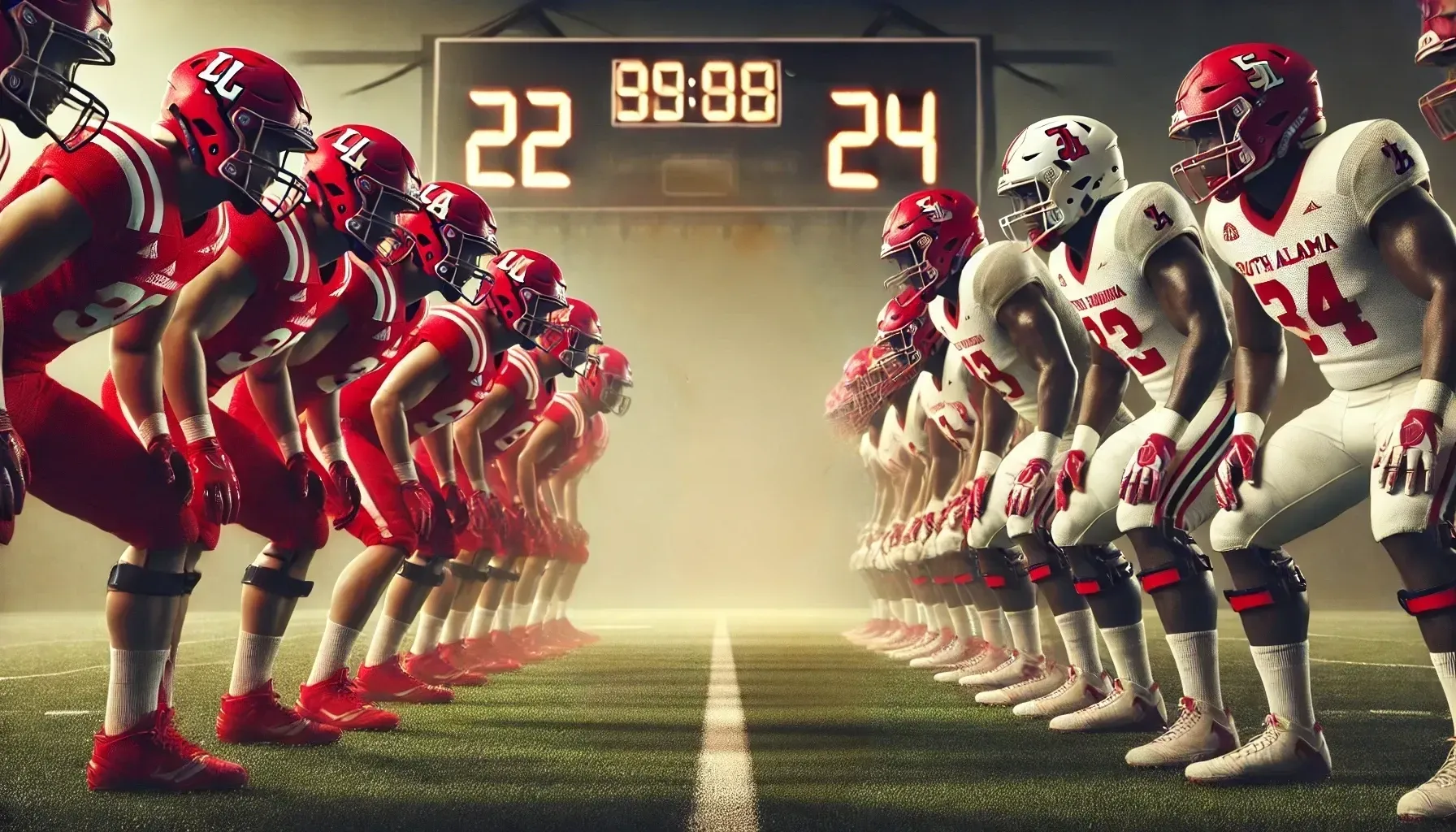
In a dramatic Sun Belt Conference clash, the Louisiana Ragin’ Cajuns suffered their first conference loss of the season, falling 24-22 to South Alabama. The defeat at Cajun Field disrupted Louisiana's unbeaten run in conference play and tightened the race for the Sun Belt West Division title. Despite a spirited second-half rally, the Ragin’ Cajuns were thwarted by a failed two-point conversion in the final minutes, allowing South Alabama to escape with the victory. A Tale of Two Halves The game began with South Alabama dominating the first half, scoring on their first three possessions to take a commanding 24-3 lead by halftime. Quarterback Gio Lopez was instrumental for the Jaguars, completing 24 of 34 passes for 285 yards and rushing for two short touchdowns. His ability to dissect the Louisiana defense with quick passes kept the Cajuns off balance. Wide receiver Jamaal Pritchett was Lopez's primary target, recording 11 receptions for 170 yards. His explosive plays, including a 45-yard catch in the second quarter, set up both of Lopez’s rushing touchdowns. South Alabama’s running game, while not flashy, provided balance and allowed the Jaguars to control the clock in the first half. Meanwhile, Louisiana’s offense stumbled out of the gate, failing to convert on third downs and struggling to establish their usual rhythm. Running back Dre’lyn Washington, who has been a key player all season, was held to just 43 rushing yards in the first half. Two turnovers, including a fumbled snap deep in South Alabama territory, compounded Louisiana’s woes and set the tone for a frustrating first half. Louisiana’s Resilient Comeback Trailing by 21 points at halftime, the Ragin’ Cajuns displayed resilience in the second half. Backup quarterback Chandler Fields, who replaced the injured Ben Wooldridge, energized the offense. Fields completed 14 of 17 passes for 185 yards and threw a 66-yard touchdown pass to Dre’lyn Washington early in the fourth quarter to cut the deficit to 24-16. Louisiana’s defense stepped up in the second half, holding South Alabama to just 58 total yards. Linebacker Andre Jones led the defensive charge with eight tackles, two for a loss, and a sack that forced the Jaguars into a critical three-and-out in the third quarter. Safety Kody Jackson recorded his first career interception, setting the stage for another Cajun scoring drive. Fields, stepping into the high-pressure situation, led an 86-yard drive late in the fourth quarter, capped by his 2-yard touchdown run with 1:16 remaining. The decision to attempt a two-point conversion highlighted the team’s aggressive mindset, but South Alabama’s defensive line stuffed Fields short of the goal line, ending Louisiana’s comeback bid. Key Performances and Missed Opportunities Louisiana outgained South Alabama 413-353 in total yards, but inefficiencies in the red zone and missed opportunities ultimately proved costly. Despite outscoring South Alabama 19-0 in the second half, the inability to convert early scoring opportunities into touchdowns loomed large. Kicker Kenneth Almendares contributed three field goals, becoming the first Ragin’ Cajun to eclipse 100 points in a season since 2019. However, the offense struggled to find consistency, settling for field goals instead of touchdowns on three first-half drives inside the Jaguars’ 30-yard line. For South Alabama, Lopez’s poise and Pritchett’s playmaking ability highlighted their offensive success. Pritchett consistently found space in Louisiana’s secondary, making critical catches on third downs to extend drives. The Jaguars’ defense, led by nose tackle Wy’Kevious Thomas, made crucial stops when it mattered most, including the game-saving tackle on the two-point conversion attempt. Implications for the Sun Belt West Division The loss narrows Louisiana’s lead in the Sun Belt West Division, leaving them just one game ahead of South Alabama and other challengers. While the Ragin’ Cajuns remain in first place with an 8-2 overall record and 5-1 in conference play, they no longer control their destiny outright. South Alabama, now 5-5 overall and 4-2 in the conference, keeps its hopes alive for a potential division title if they win their remaining games and receive help from other teams. This game also underscores the competitiveness of the Sun Belt Conference, where any team can emerge victorious on any given day. For Louisiana, the loss serves as a wake-up call, emphasizing the importance of playing a full 60 minutes, especially against divisional opponents. Looking Ahead to Critical Matchups Louisiana must regroup quickly as they prepare to host Troy next Saturday in a critical divisional matchup. The Ragin’ Cajuns will need to address their first-half inconsistencies, improve red-zone efficiency, and capitalize on their opportunities if they hope to maintain their lead in the Sun Belt West. Fields’ performance as a backup quarterback provides optimism, but the team will need a complete effort to bounce back. South Alabama, on the other hand, will look to build on this momentum as they face Southern Miss in their next game. With their postseason hopes still alive, the Jaguars have proven they can compete with the best teams in the conference when firing on all cylinders. Lopez’s continued development at quarterback, combined with a disciplined defense, positions South Alabama as a dangerous opponent down the stretch. As the Sun Belt West race tightens, both teams will need to bring their best in the final weeks of the season. This thrilling clash not only reshaped the divisional standings but also set the stage for an exciting conclusion to the regular season.

In one of the most surprising upsets of the Conference USA season, Louisiana Tech secured a 12-7 victory over Western Kentucky at Houchens-Smith Stadium. This win marked Louisiana Tech’s first road victory since September 2023, breaking a streak of 23 consecutive road losses and shaking up the Conference USA standings as the season approaches its finale. Western Kentucky entered the game tied for first place in Conference USA alongside Jacksonville State, but the loss drops them to second place. The Hilltoppers now find themselves tied with Sam Houston State, creating a tight race in the conference standings. A Defense-Driven Victory Louisiana Tech’s defense was the driving force behind their win, holding one of the league’s most prolific offenses to just 215 total yards. Defensive back Cedric Woods delivered the game-saving moment with a tackle on fourth down with 1:05 remaining, halting Western Kentucky’s final drive at the Louisiana Tech 30-yard line. This defensive stand capped a day where the Bulldogs allowed just 66 passing yards, marking one of their strongest performances of the season. The defensive effort was spearheaded by Jeremiah Johnson’s unit, which has been a consistent bright spot for Louisiana Tech throughout the year. Saturday’s game marked Western Kentucky’s lowest-scoring home performance against a non-Power 5 opponent since 2010, a testament to the Bulldogs’ defensive discipline and execution. Offensive Struggles and Special Teams Impact Louisiana Tech’s offense, while not explosive, controlled the tempo and took advantage of key moments. Running back Amani Givens provided a solid performance with 103 rushing yards on 17 carries, becoming the first Bulldog to surpass 100 yards rushing this season. Givens’ ability to gain yards after contact proved pivotal in extending drives and maintaining possession. Special teams played a critical role in the outcome. Kicker Buck Buchanan accounted for all 12 of Louisiana Tech’s points, converting four of five field-goal attempts, including a long of 42 yards. Buchanan’s consistency kept the Bulldogs ahead throughout the game, despite the offense failing to find the end zone. A key moment in the game came late in the third quarter when Louisiana Tech recovered a muffed punt deep in Western Kentucky territory. Although the ensuing drive ended in a blocked field goal, the Bulldogs’ ability to force turnovers and capitalize on special teams mistakes kept the Hilltoppers on their heels. Western Kentucky Falls Short Western Kentucky’s offense struggled to find rhythm against Louisiana Tech’s defense. Quarterback Caden Veltkamp completed 18 of 26 passes for 152 yards but was unable to lead a scoring drive in the second half. The Hilltoppers’ lone touchdown came early in the second quarter on a 7-yard run by Elijah Young, but they failed to build on the momentum. Questionable penalties also played a role in the game’s outcome. A controversial pass interference call late in the fourth quarter gave Western Kentucky a first down at the Louisiana Tech 30-yard line. However, the Hilltoppers failed to capitalize, with Veltkamp under-throwing an open receiver in the end zone and Woods’ decisive fourth-down tackle ending their hopes. Despite their struggles, Western Kentucky’s defense remained strong, holding Louisiana Tech to just 275 total yards. Hosea Wheeler added to the defensive effort with a blocked field goal late in the fourth quarter, giving the Hilltoppers one last chance to take the lead. Implications for Conference USA The loss significantly impacts the Conference USA standings. Western Kentucky entered the game tied for first with Jacksonville State, but the defeat drops them to second place, now tied with Sam Houston State. With just two games remaining in the regular season, the Hilltoppers face mounting pressure to rebound and keep their conference championship hopes alive. Louisiana Tech, meanwhile, kept their bowl hopes alive with the win. The Bulldogs improve to 4-4 overall and 3-4 in conference play. With upcoming games against Arkansas and Kennesaw State, Louisiana Tech has a challenging path ahead but has shown resilience in critical moments. Looking Ahead Western Kentucky will look to regroup as they travel to face Liberty in their next game. Meanwhile, Louisiana Tech heads to Fayetteville for a non-conference matchup against Arkansas. For both teams, the stakes remain high as the regular season winds down and postseason opportunities hang in the balance. This upset serves as a reminder of the unpredictability of college football, where every game can redefine a team’s trajectory. Louisiana Tech’s gritty performance on Saturday exemplified their determination to compete, even in the face of daunting odds.

The UTSA Roadrunners delivered a commanding 48-27 victory over the North Texas Mean Green at the Alamodome, showcasing dominance on offense, defense, and special teams. UTSA's record-breaking 681 yards of total offense overwhelmed North Texas, who struggled with critical fourth-down decisions and turnovers throughout the game. Offensive Firepower Leads UTSA Quarterback Owen McCown set the tone for UTSA with a stellar performance, throwing for 379 yards and two touchdowns. His precision passing kept the North Texas defense on edge, and his ability to find open receivers in critical moments gave the Roadrunners consistent momentum. McCown’s deep connection with sophomore wide receiver David Amador II proved particularly lethal, including a 51-yard touchdown pass in the first quarter that gave UTSA an early 14-0 lead. Amador finished the game with nine receptions for 122 yards and a touchdown, establishing himself as one of McCown’s go-to targets. Running back Robert Henry complemented the passing attack with 168 rushing yards and two touchdowns, including an electrifying 83-yard scoring run late in the fourth quarter. Henry’s ability to break through tackles and gain significant yardage after contact added another dimension to UTSA’s offensive onslaught. The offensive line also played a pivotal role, providing McCown with excellent protection and creating gaps for Henry to exploit. UTSA’s balanced attack resulted in one of their most productive offensive performances of the season, keeping North Texas off balance and unable to mount a sustained defensive effort. Questionable Fourth-Down Calls Sink North Texas North Texas entered the game looking to halt a losing streak, but their aggressive fourth-down strategy backfired. A series of questionable decisions to go for it on fourth down in their own territory put the Mean Green in difficult situations. Their inability to convert these key plays gave UTSA favorable field position, which the Roadrunners capitalized on repeatedly. One pivotal moment occurred in the second quarter when North Texas attempted a fourth-and-2 from their own 38-yard line. UTSA’s defense stuffed the play, leading to a short field and a quick touchdown drive. Later in the third quarter, another failed fourth-down conversion deep in their own territory resulted in a UTSA field goal that extended the Roadrunners’ lead to 34-21. These decisions effectively shifted momentum and prevented North Texas from staying competitive. While junior running back Shane Porter tried to keep the Mean Green in the game with 193 rushing yards and three touchdowns, the repeated fourth-down failures created an insurmountable deficit. The Mean Green’s inability to adjust their strategy or capitalize on their opportunities highlighted their struggles against a disciplined UTSA team. Defensive and Special Teams Contributions UTSA’s defense played a critical role in the victory, forcing two interceptions and applying consistent pressure on North Texas quarterback Chandler Morris. Cornerback Zah Frazier was a standout, recording two interceptions, including one in the fourth quarter that shut down a promising North Texas drive. The defensive line, led by Jamal Ligon and Elijah Chatman, consistently disrupted Morris’s rhythm, recording multiple sacks and hurrying him into poor throws. Special teams also proved decisive for the Roadrunners. A surprise onside kick in the first quarter caught North Texas off guard, leading to a quick score and early control of the game. Kicker Tate Sandell was reliable throughout, nailing two field goals, including a 44-yarder to end the first half. The execution on special teams underscored UTSA’s ability to dominate in all aspects of the game, ensuring they maintained control from start to finish. The defensive effort was particularly impressive in its ability to capitalize on the mistakes of North Texas. Each failed fourth-down attempt became an opportunity for the Roadrunners to increase their lead, further highlighting the importance of situational awareness and decision-making in high-stakes games. UTSA Extends Home Dominance The victory marked UTSA’s fourth consecutive win over North Texas and extended their unbeaten home record this season. Under head coach Jeff Traylor, the Roadrunners have transformed the Alamodome into a fortress, boasting a 28-3 home record since 2020. This level of dominance speaks to the culture of excellence Traylor has instilled in the program, as well as the unwavering support of UTSA’s passionate fan base. The Roadrunners have excelled in all phases of the game this season, and their balanced approach was on full display against North Texas. Offensively, the team demonstrated its ability to generate explosive plays while maintaining efficiency in time management. Defensively, their pressure on the quarterback and ability to force turnovers prevented the Mean Green from gaining any consistent momentum. Special teams added the finishing touches, ensuring that every aspect of the game was in UTSA’s favor. This win improves UTSA’s record to 5-5 overall and 3-3 in American Athletic Conference play, keeping their postseason hopes alive. With their momentum building, the Roadrunners are positioning themselves as a dangerous opponent for any team in the AAC. What’s Next for Both Teams? UTSA will aim to build on this dominant performance as they prepare for their next game, where they will look to secure bowl eligibility and continue their strong form. North Texas, on the other hand, will need to regroup and address the decision-making errors that have plagued them in recent game. Their final home matchup against East Carolina will be a critical opportunity for the Mean Green to end their season on a positive note. The Roadrunners’ commanding performance against North Texas not only highlighted their strength across all phases but also served as a reminder of the importance of adaptability and execution. As the season nears its conclusion, UTSA remains a team to watch, with the potential to make a significant impact in the postseason.

The North Carolina Tar Heels clinched bowl eligibility with a dramatic 31-24 victory over the Wake Forest Demon Deacons at Kenan Memorial Stadium. Behind a career-high performance by running back Omarion Hampton, UNC notched its third consecutive win and advanced to 6-4 overall and 3-3 in ACC play. The Tar Heels capitalized on turnovers and timely defensive stops, showcasing their resilience in a tight, back-and-forth game. Hampton’s dominant rushing display and key defensive plays helped UNC fend off a late rally by Wake Forest. Dominant First Half for UNC The game opened with both teams struggling to find offensive rhythm. After a scoreless first quarter, the Tar Heels turned to Hampton, who had already surpassed 100 rushing yards by the second quarter. UNC took the lead when quarterback Jacolby Criswell capped off a drive with a 4-yard touchdown run early in the second quarter. UNC's defense came alive soon after, halting a promising Wake Forest drive with a crucial turnover on downs at their 37-yard line. A seven-play, 56-yard drive, fueled by Hampton’s hard-nosed rushing, set up a late field goal by kicker Noah Burnette, giving the Tar Heels a 10-3 lead at halftime. The first half showcased UNC’s ability to control the tempo of the game. Their offensive line created gaps for Hampton to exploit, while the defense consistently disrupted Wake Forest’s attempts to establish their own rhythm. Special teams also contributed, with Burnette’s accuracy providing the cushion UNC needed heading into the break. A Shift in Momentum Wake Forest regrouped after halftime, with quarterback Michael Kern stepping in for an injured Hank Bachmeier. Kern orchestrated a 72-yard touchdown drive on his first possession, tying the game at 10-10. The Tar Heels responded immediately with a 15-yard touchdown reception by J.J. Jones, re-establishing their lead at 17-10. UNC extended their lead when linebacker Power Echols intercepted a pass and returned it 42 yards for a touchdown, pushing the score to 24-10. The Demon Deacons narrowed the gap to 24-17 after a fumble recovery set up a short rushing touchdown by Demond Claiborne. Kern’s insertion into the game added a spark for Wake Forest, as his mobility and quick decision-making kept UNC’s defense on its heels. However, the Tar Heels’ ability to respond under pressure was a testament to their preparation and depth. Echols’ interception not only shifted momentum back to UNC but also energized the home crowd, setting the stage for a tense finish. Late-Game Heroics The fourth quarter saw both defenses tighten up, forcing punts and turnovers. With just over five minutes remaining, UNC defensive lineman Joshua Harris strip-sacked Kern, allowing Travis Shaw to recover the fumble at the Wake Forest 18-yard line. Hampton delivered the dagger moments later, hurdling defenders en route to a 6-yard touchdown run that extended UNC’s lead to 31-17. Wake Forest mounted a final push, with Kern connecting with Taylor Morin for a 16-yard touchdown pass to cut the lead to 31-24. However, UNC recovered the ensuing onside kick to seal the victory. Hampton’s late-game touchdown not only showcased his athleticism but also his determination to close out games for his team. The defense’s ability to create turnovers in critical moments highlighted their improvement over the course of the season, providing a blueprint for success in their remaining games. Standout Performances Omarion Hampton was the star of the game, carrying the ball 35 times for 244 yards and a crucial late touchdown. His performance marked his eighth consecutive game with over 100 rushing yards, moving him into fifth place on UNC’s all-time rushing list with 3,327 career yards. Defensively, Power Echols made a game-changing interception returned for a touchdown, while Harris and Shaw’s strip sack and recovery in the fourth quarter solidified the Tar Heels’ control of the game. Jacolby Criswell added a touchdown pass and a rushing score, managing the game effectively despite some offensive struggles. For Wake Forest, Demond Claiborne led the effort with 95 rushing yards and two touchdowns, while Michael Kern threw for 172 yards, a touchdown, and two interceptions in relief of Bachmeier. The Tar Heels’ balanced attack, combining Hampton’s rushing dominance and Criswell’s steady hand at quarterback, allowed them to counter Wake Forest’s attempts to shift momentum. Their ability to involve multiple playmakers on both sides of the ball demonstrated the depth and versatility of this year’s squad. Implications for the Tar Heels This victory marks UNC’s sixth consecutive season reaching bowl eligibility and underscores their ability to rebound from a difficult stretch earlier in the season. With a balanced attack on offense and timely defensive stops, the Tar Heels are peaking at the right time as they prepare for postseason play. UNC’s defensive improvements were especially notable in this game, with their ability to disrupt Wake Forest’s offense and force turnovers being the difference-maker. The coaching staff’s emphasis on discipline and execution has paid dividends as the team navigates through a challenging ACC schedule. With bowl eligibility secured, the Tar Heels can focus on finishing the regular season strong. Their ability to adapt and make key plays in tight situations will be crucial as they face tougher competition in the coming weeks. Up next, North Carolina will travel to Boston College before closing out the regular season against rival N.C. State. Meanwhile, Wake Forest will face No. 12 Miami in their quest to remain in contention for bowl eligibility.

The third-ranked Texas Longhorns secured a hard-fought 20-10 victory over the Arkansas Razorbacks at Reynolds Razorback Stadium, maintaining their push for a College Football Playoff spot. Despite offensive struggles, Texas relied on a dominant defensive performance and timely plays to seal the win, improving their record to 9-1 overall and 5-1 in SEC play. Arkansas made it a one-possession game in the fourth quarter, pulling within three points, but Texas responded with an efficient touchdown drive to solidify the outcome. The Longhorns' ability to adjust under pressure and capitalize on opportunities ensured their seventh consecutive win against the Razorbacks. Strong Defensive Start for Texas Texas established defensive dominance early, keeping Arkansas scoreless in the first quarter and limiting them to 74 total yards in the first half. Defensive back Jahdae Barron’s interception in the opening frame set up a 20-yard touchdown pass from Quinn Ewers to wide receiver Matthew Golden, giving the Longhorns a 7-0 lead. The Texas defense, highlighted by Barron’s seven tackles, two tackles for loss, and a sack, consistently pressured Arkansas quarterback Taylen Green. The Razorbacks managed just 82 rushing yards on the day, struggling to find answers against a relentless Texas defensive front. Kicker Bert Auburn added a 39-yard field goal in the second quarter, extending the Longhorns’ lead to 10-0 at halftime. The defense continued to shine, holding Arkansas to a single crossing of midfield during the first half. Texas’ secondary played a critical role in stifling Arkansas’ aerial attack. D'Shawn Jamison broke up two passes in crucial situations, preventing the Razorbacks from finding any rhythm in the passing game. The Longhorns' ability to neutralize Arkansas' top playmakers in the first half set the tone for the remainder of the game. Arkansas Finds Momentum in the Third Quarter The Razorbacks began the second half with renewed energy, relying on a mix of quarterback runs and short passes to piece together their most effective drive of the game. A 12-play, 75-yard march culminated in a 1-yard touchdown run by Ja’Quinden Jackson, narrowing the score to 13-7. Arkansas’ defense followed up with a critical stop, forcing a three-and-out and setting up a 44-yard field goal by Matthew Shipley early in the fourth quarter to bring the game within three points. Arkansas’ offensive adjustments in the second half highlighted their resilience. Green’s ability to escape the pocket and extend plays created opportunities, while Jackson’s strong running kept the chains moving. Despite the pressure, the Longhorns’ defense managed to bend without breaking, limiting the damage and keeping the Razorbacks within reach. Texas Responds with Game-Sealing Drive Faced with mounting pressure, Texas relied on their rushing attack and offensive line to regain control. Running back Jaydon Blue, who had 83 rushing yards on 14 carries, played a pivotal role in the decisive eight-play, 75-yard drive. Blue’s physicality and vision helped set up a 1-yard touchdown pass from Ewers to Golden, extending the lead to 20-10. The offensive line, led by center Jake Majors, stepped up in the fourth quarter, creating key running lanes and protecting Ewers during crucial passing downs. Their performance late in the game underscored their ability to deliver under pressure, ensuring Texas could close out the game with authority. The Longhorns’ defense ensured Arkansas would not mount a comeback. Defensive lineman Alfred Collins forced a critical fumble that Texas recovered, and the Longhorns’ offense ran out the clock with three consecutive kneel-downs to close the game. Key Players and Stats Quinn Ewers completed 20 of 32 passes for 176 yards and two touchdowns, marking his 21st consecutive game with a touchdown pass. Matthew Golden was his primary target, finishing with two touchdown receptions, including a clutch catch in tight coverage in the fourth quarter. The Texas defense tallied six sacks and nine tackles for loss, consistently disrupting Arkansas’ offense. Jahdae Barron led the unit with his versatile play, while Collins’ forced fumble in the fourth quarter was a turning point. For Arkansas, Green completed 17 of 25 passes for 149 yards but faced constant pressure. The Razorbacks’ ground game, led by Jackson’s 56 yards on 11 carries, found little room to operate against the Longhorns’ stout defensive line. Texas’ ability to control time of possession also played a pivotal role, holding the ball for over 34 minutes. Their methodical drives in the second half wore down Arkansas’ defense, allowing the Longhorns to dictate the pace of the game. Implications for Texas The victory underscores Texas’ status as a playoff contender, but offensive inconsistencies remain a concern. The Longhorns’ defense continues to prove why it is one of the best in the SEC, but the offense must find greater balance and efficiency, particularly as they face tougher opponents in the final stretch of the season. The win also highlights the Longhorns' ability to win gritty games away from home, an essential trait for teams with championship aspirations. With their sights set on the SEC Championship and a potential playoff berth, the Longhorns will look to refine their game plan and build on the momentum from this critical road win.
Weekly Press Conferences
College Football Action Shots
2024 Season


